Exam 2 Pathology Images
1/113
There's no tags or description
Looks like no tags are added yet.
Name | Mastery | Learn | Test | Matching | Spaced |
|---|
No study sessions yet.
114 Terms
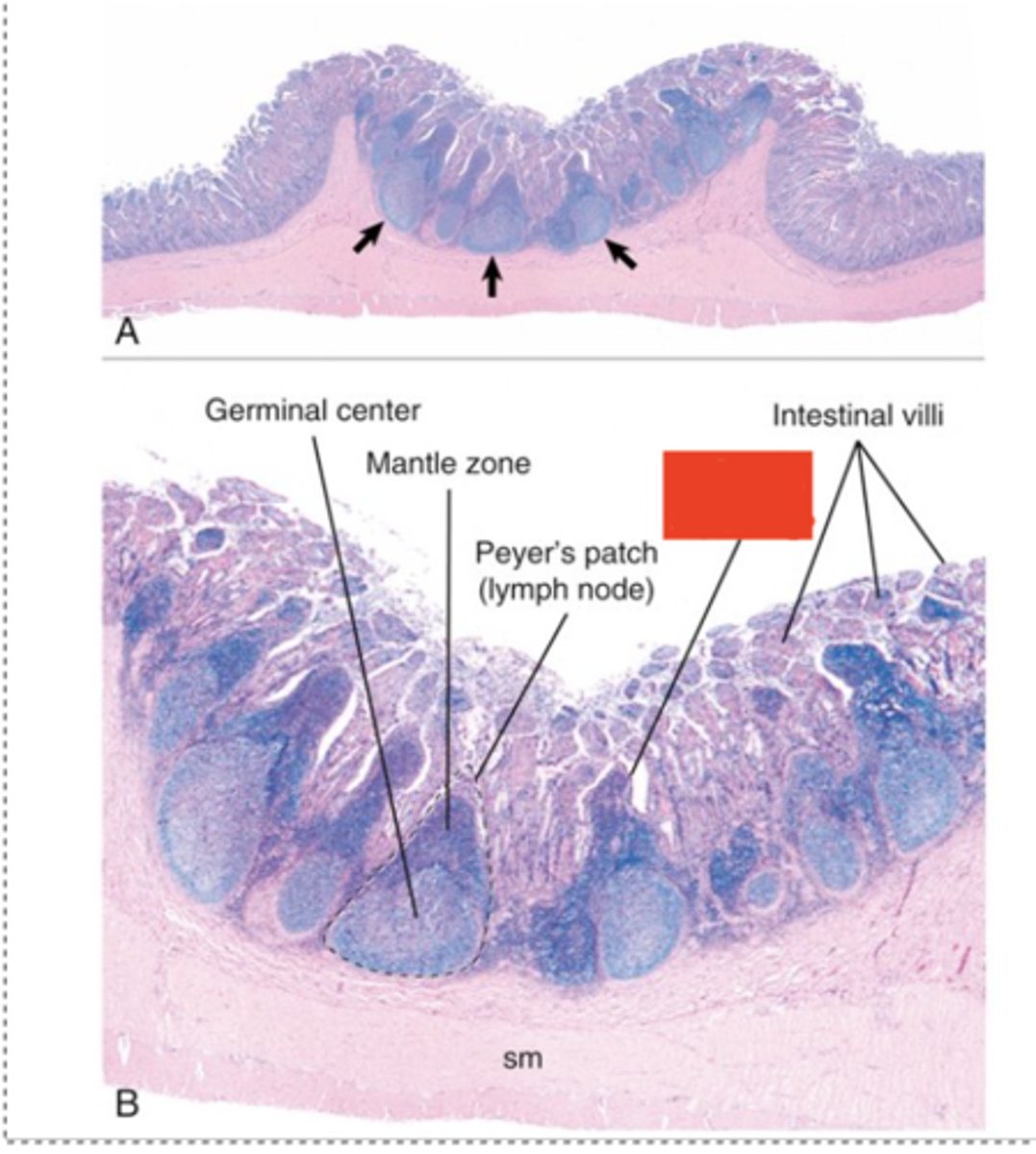
What type of cell indicated by the red box functions to transfer antigens across the mucosa to dendritic cells and immune cells in the nodule ?
M cells

What type of virulence factor is used by actinobacillus ligneresi to cause this pyogranulomatous inflammatory response?
LPS

What broad group of pathogens does these images indicate ?
Fungi
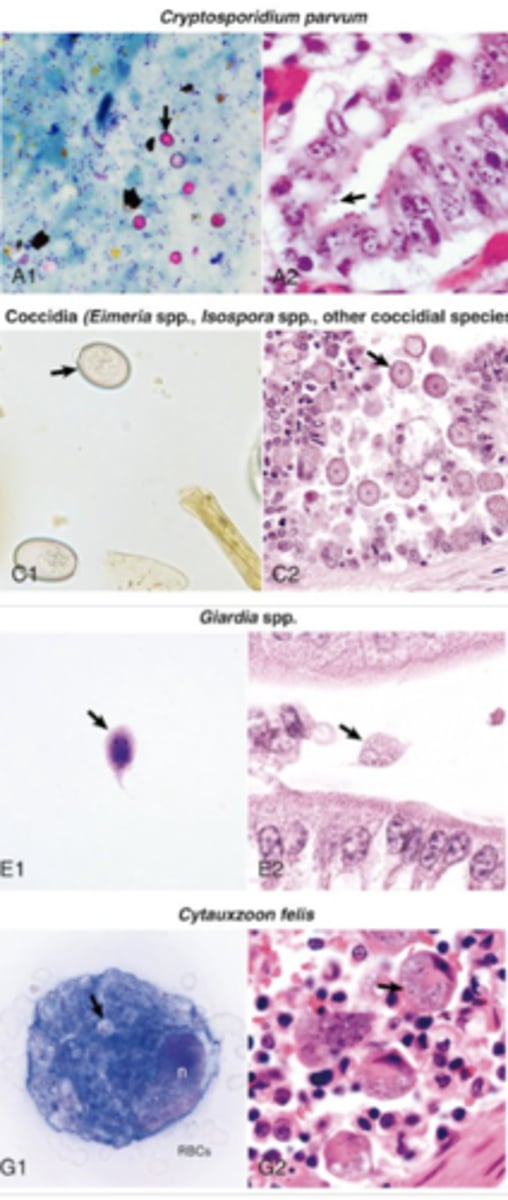
What broad group of pathogens does these images indicate ?
protozoa
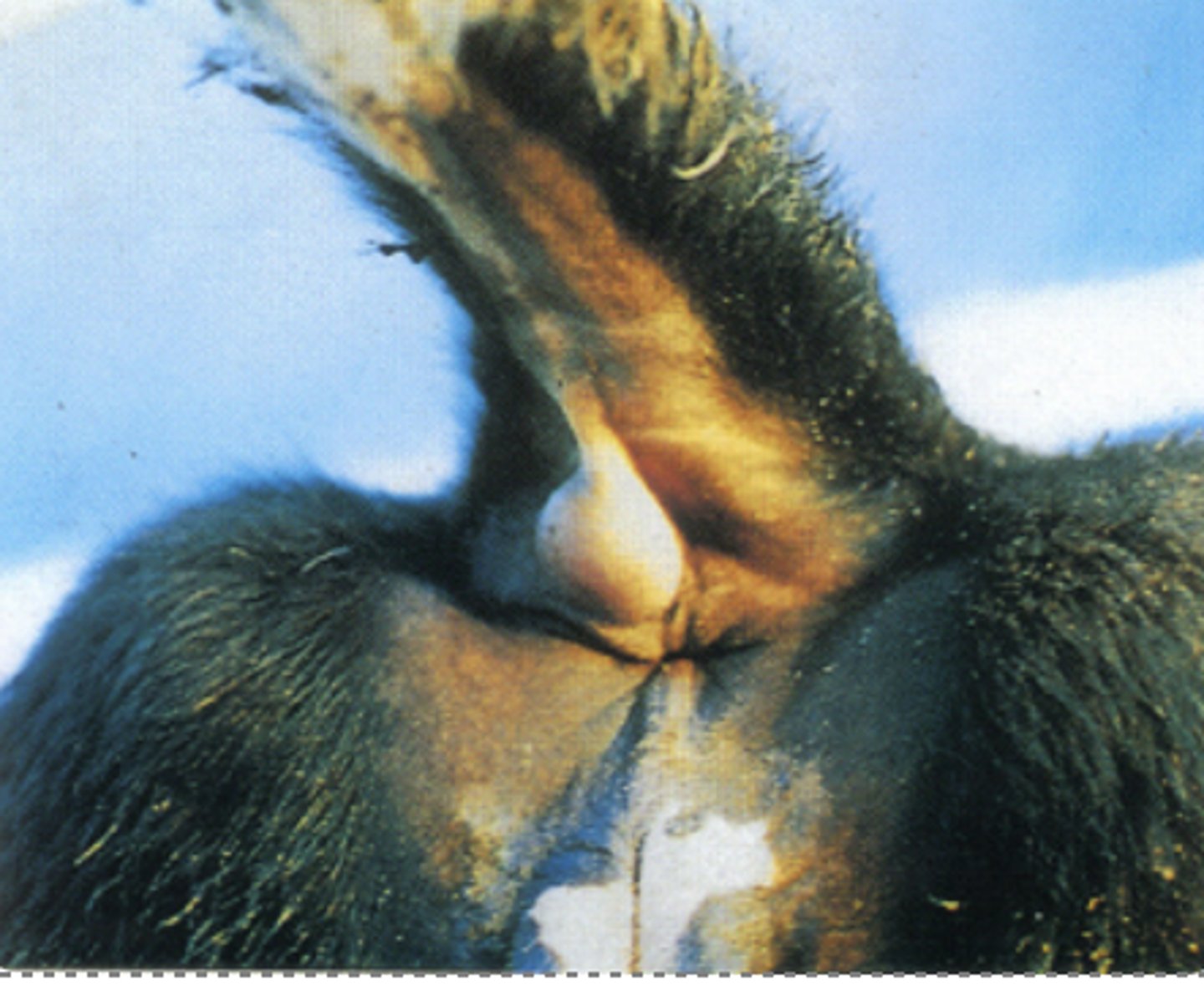
What type of hypersensitivitiy is demonstrated by this reaction?
Type IV hypersensitivity (delayed type hypersensitivity)
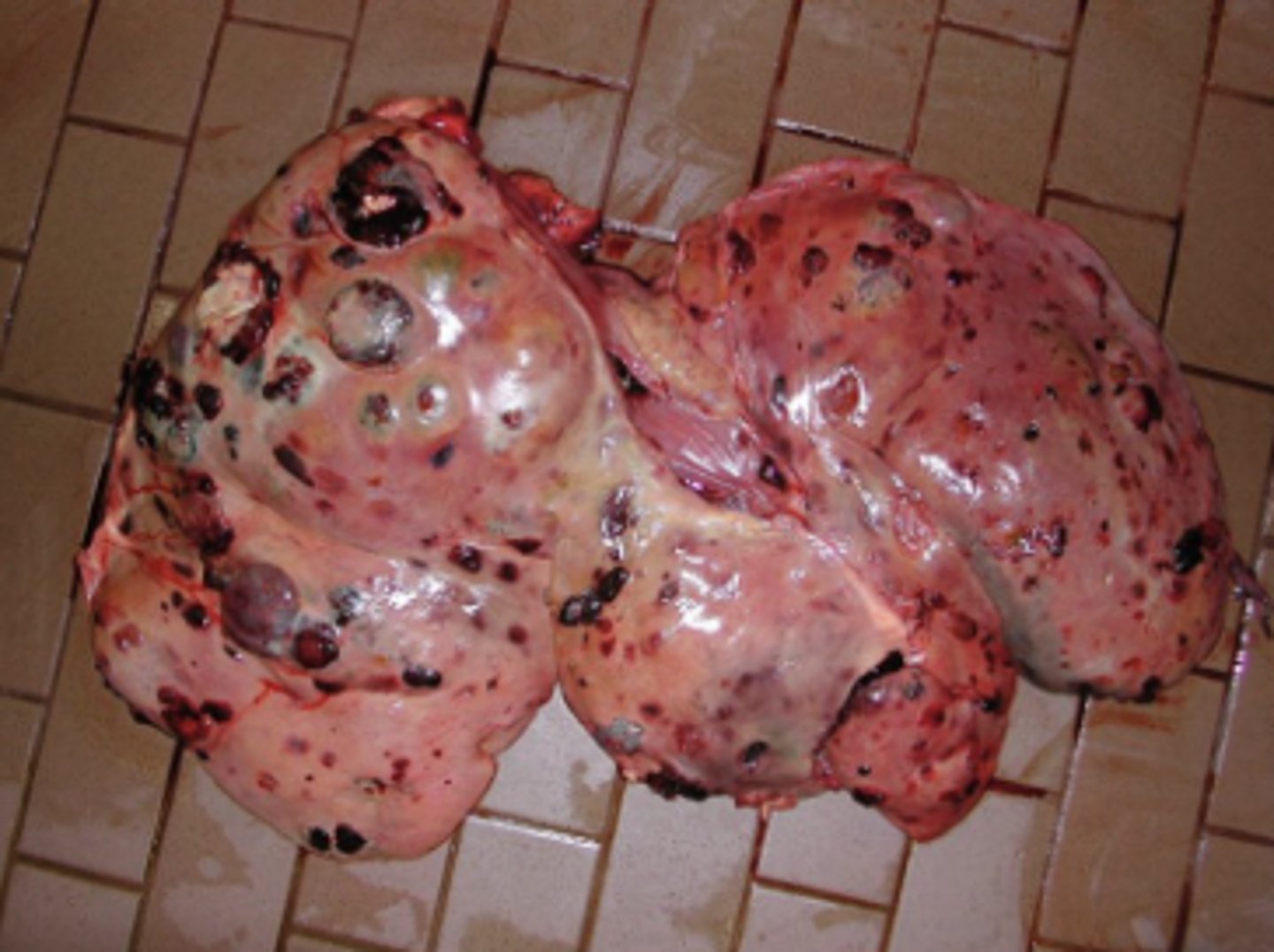
How would you describe this lesion?
Multifocal, rasied proliferations with diffuse discoloration
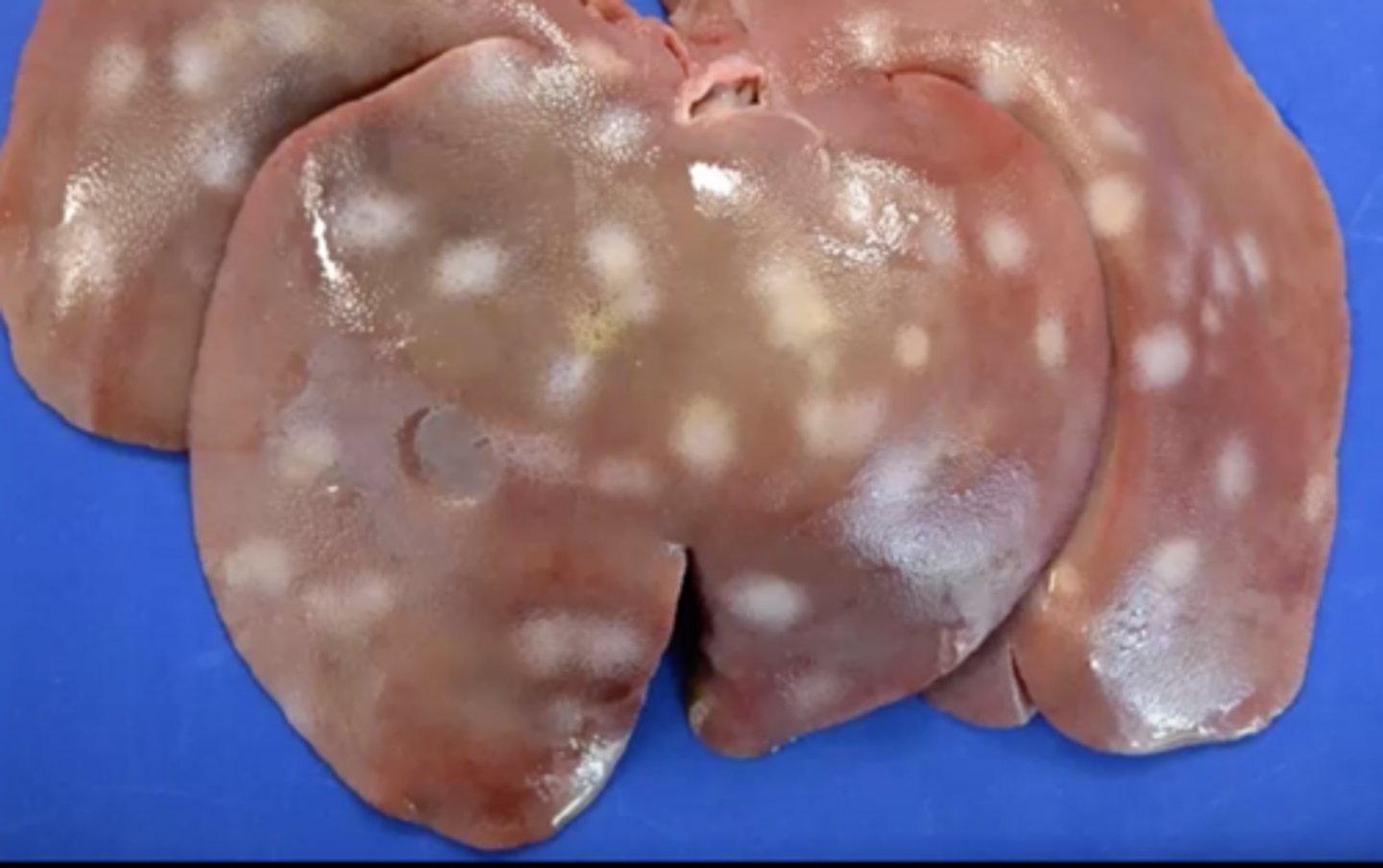
Pig liver: What are these white sunken spots known as ?
Milk spots - scars from ascaris suum migrating through the liver
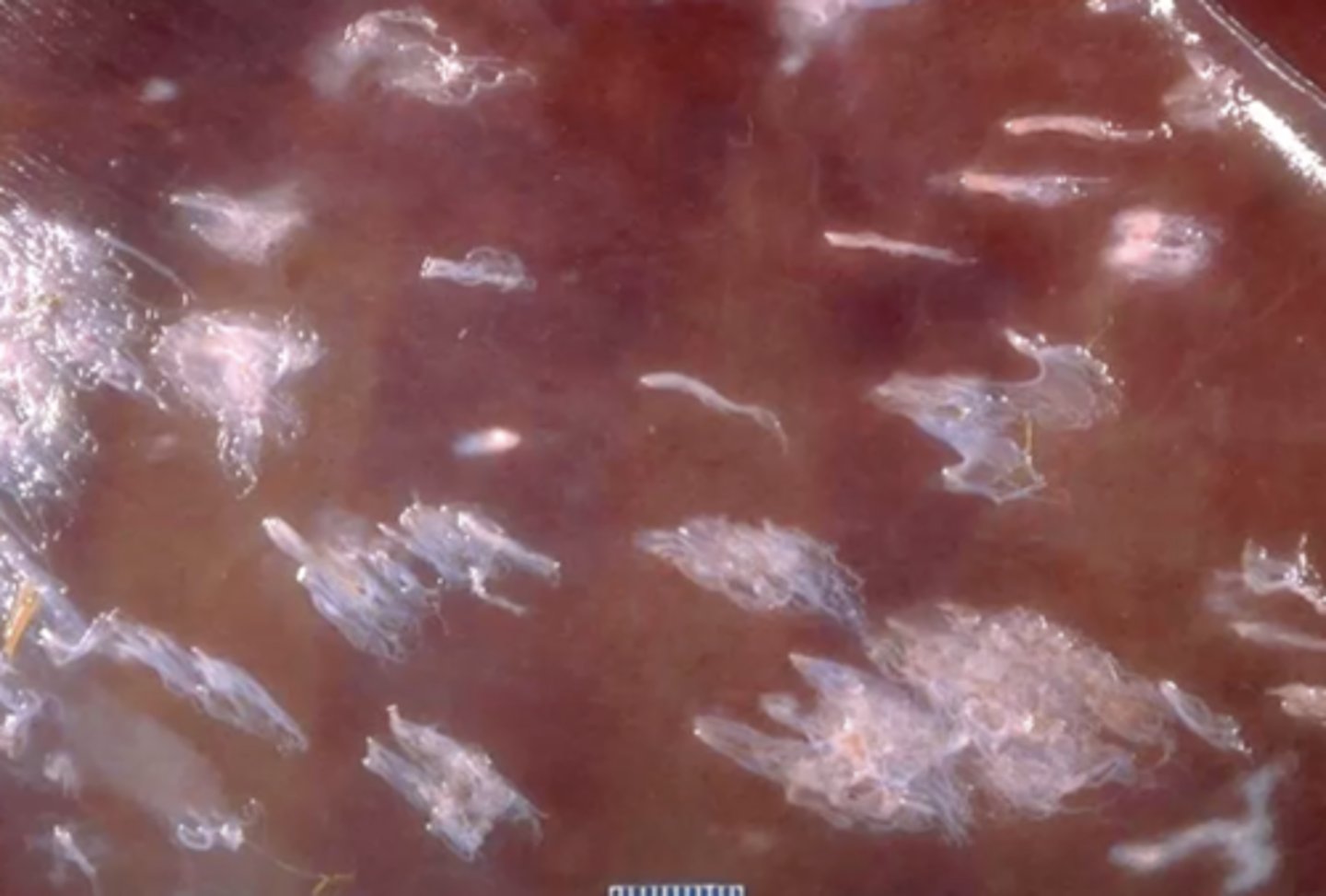
What is the name for the gross appearance of this liver, causing these discrete fibrous tags or plaques?
Capsular fibrosis
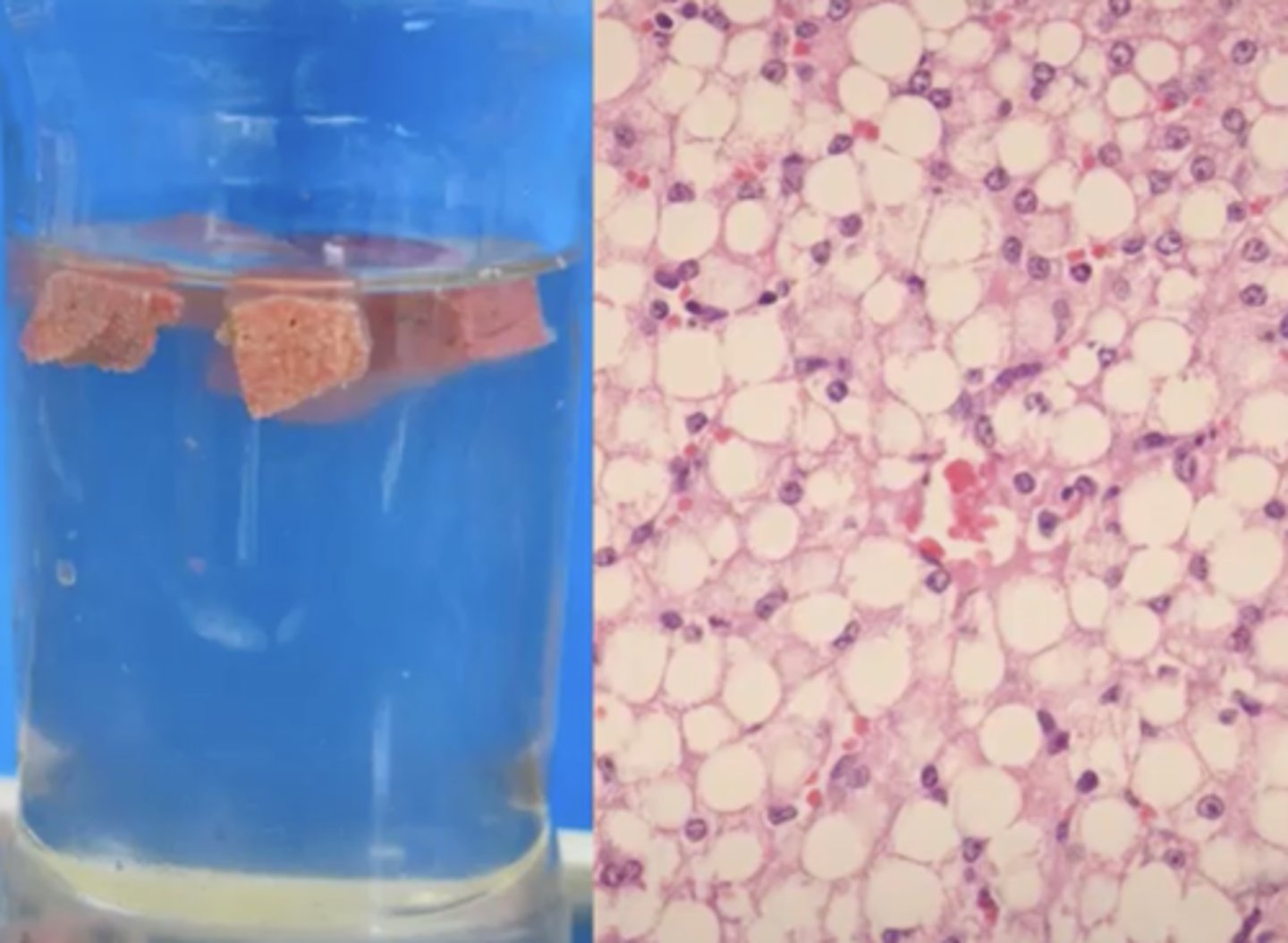
What has caused this gross and histologic lesions?
Hepatic lipidosis - glycogen caused
-very common
-notice the sinusoids are pushed out of the way in the histopath image
-can see in starvation cases + obesity
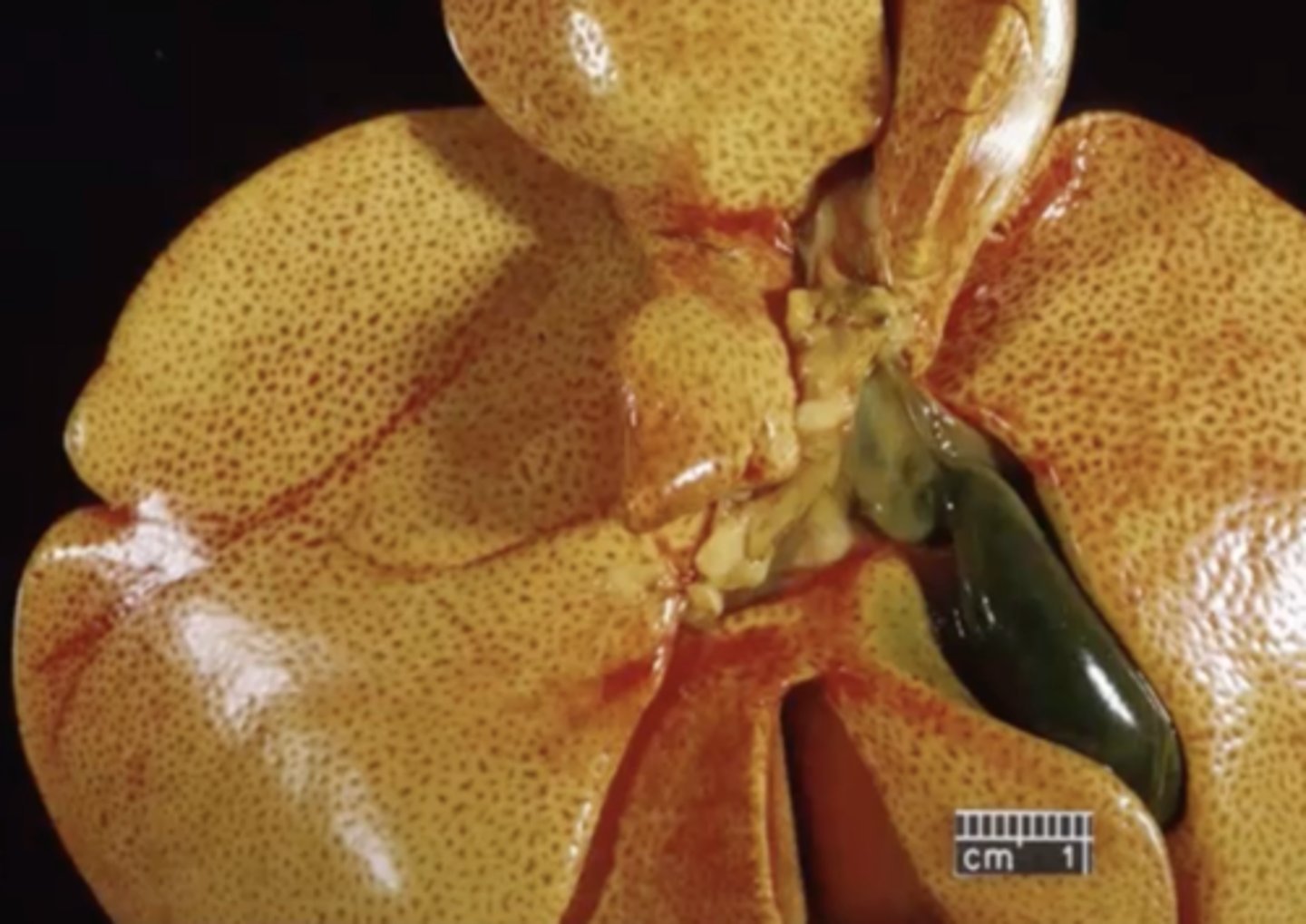
Cat liver: What is wrong here?
Hepatic lipidosis
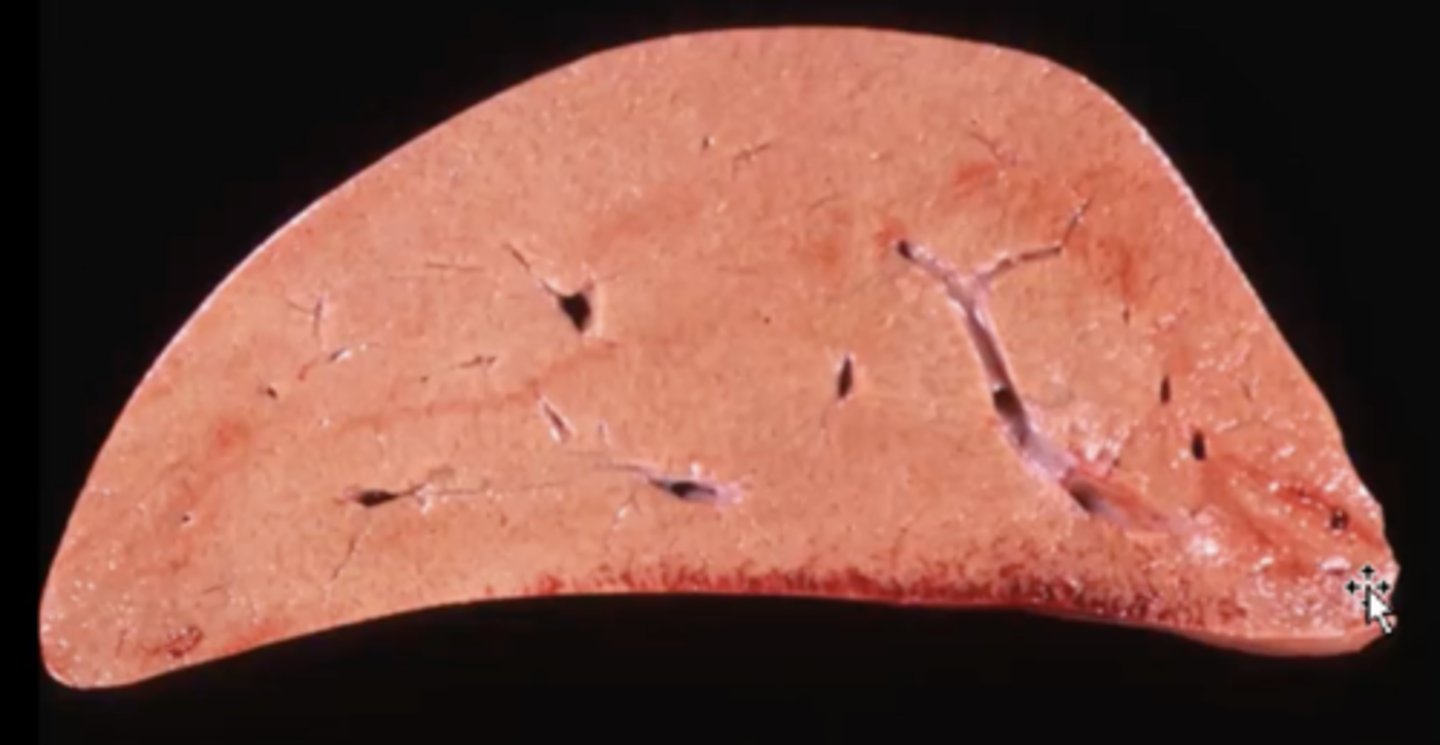
Pony liver: What caused this gross appearance?
Hyperlipemia
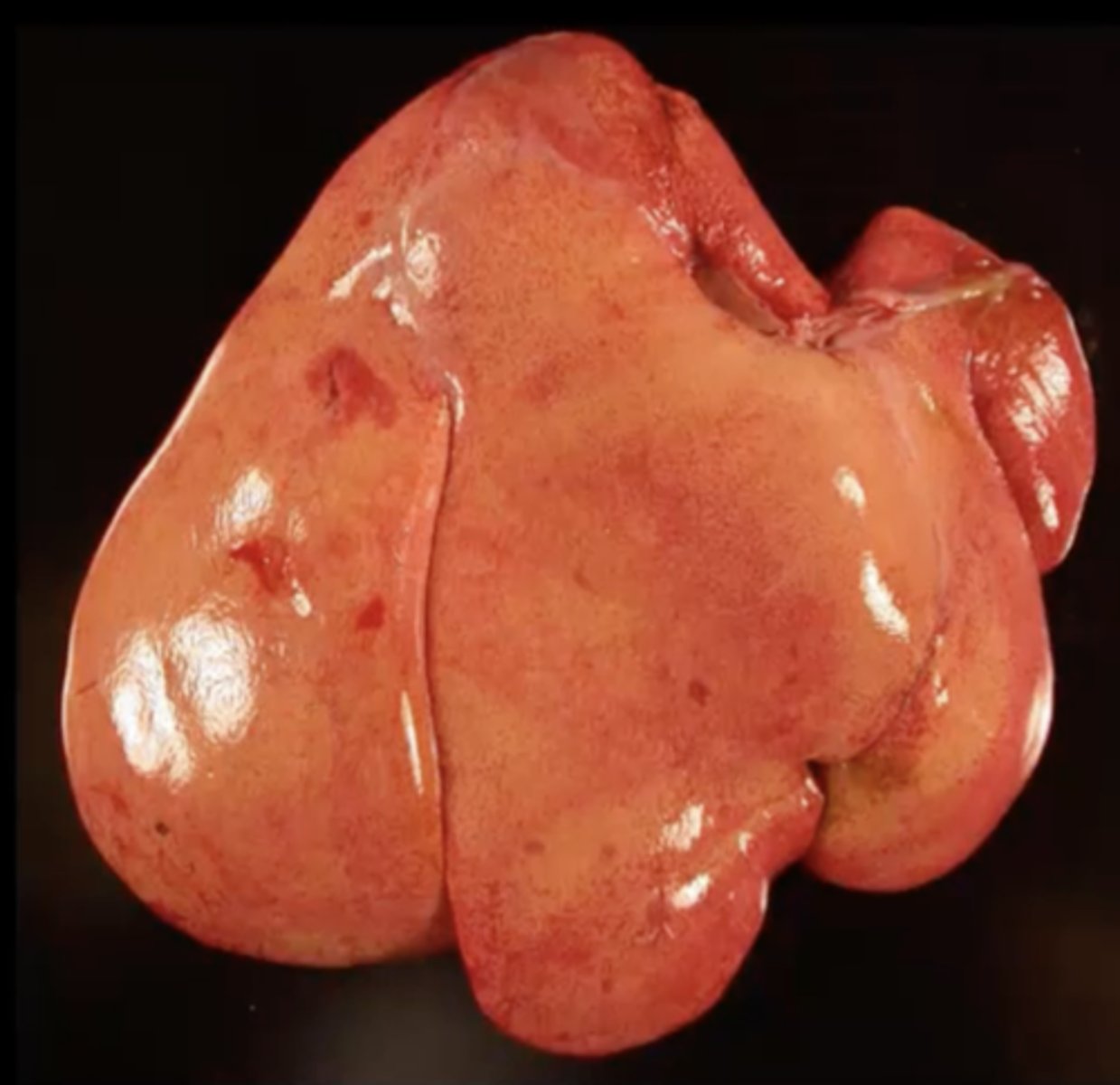
Monkey liver: What caused this gross appearance?
Fatty liver- caused by hepatocellular steatosis (lipidosis)
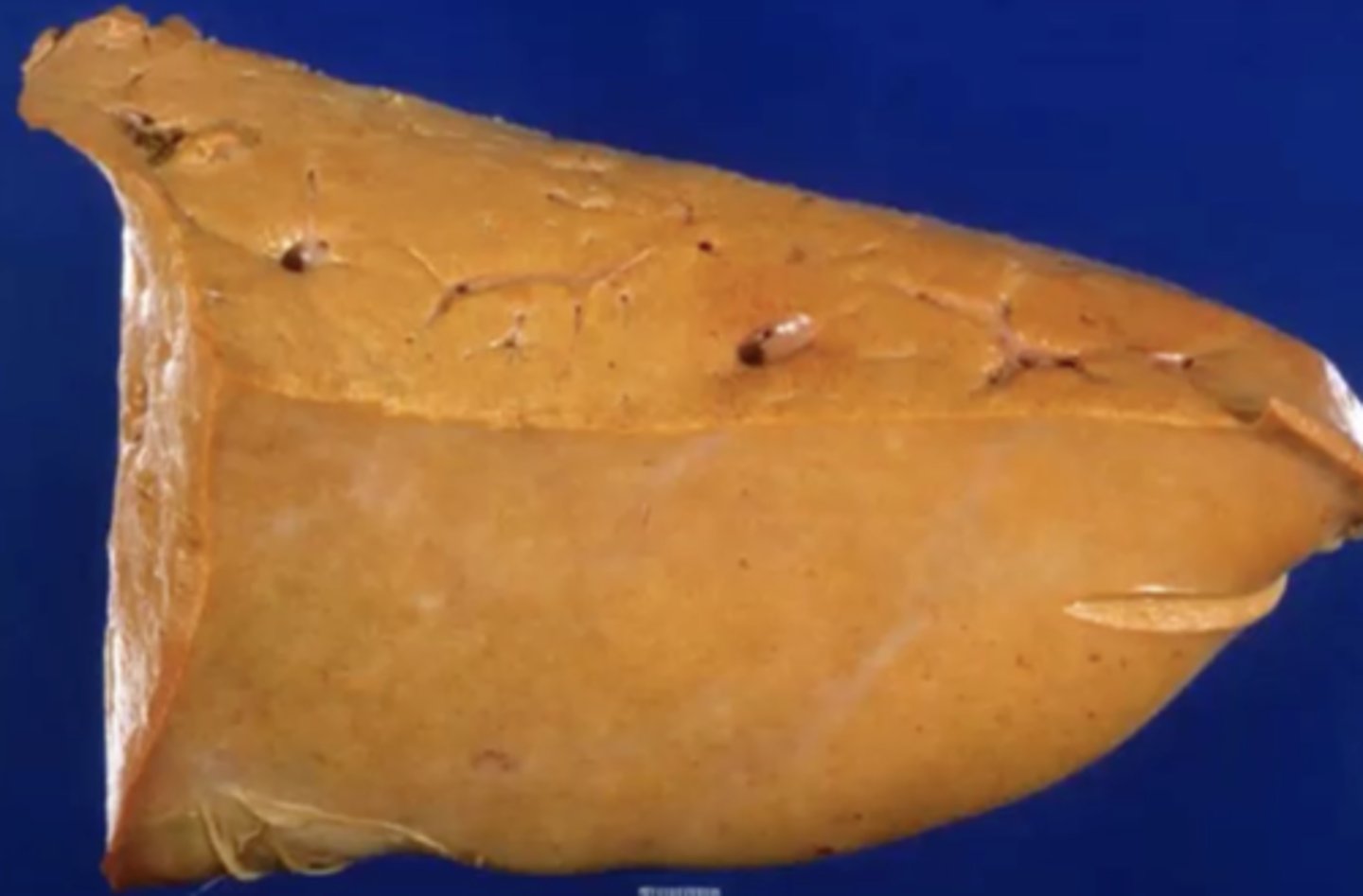
Bovine liver: What has caused this gross appearance ?
Bovine Fatty Liver Syndrome
- Caused by accumulation of lipid within the liver due to increased mobiliazation of lipids from adipose tissue = influx of fatty acids to the liver
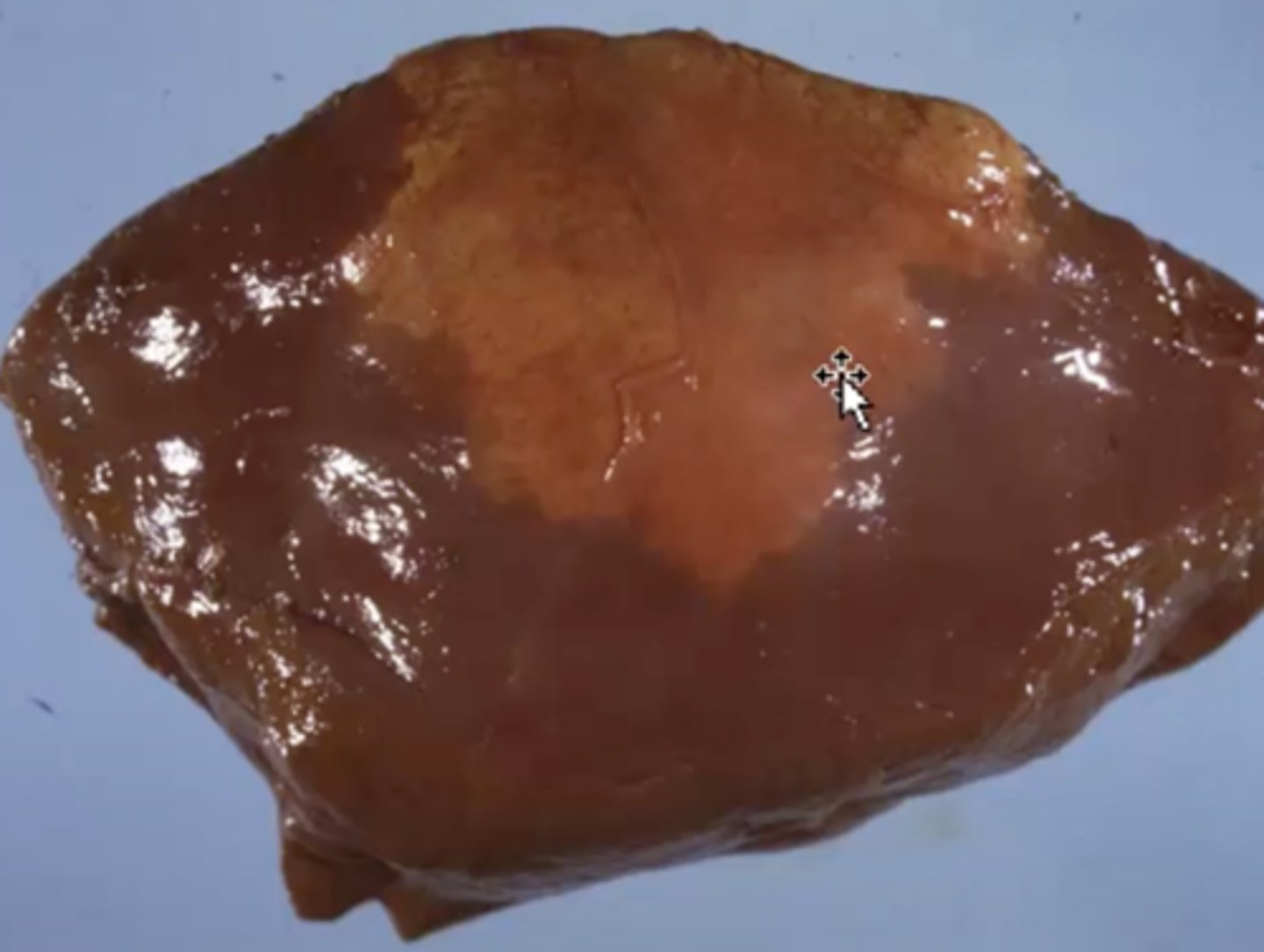
What has caused this gross appearance of this liver?
Tension Lipidosis
- doesn't have to effect the whole liver- can be regionally
-consequence of hypoxia
- where tension/ fat accumulation was= paler area
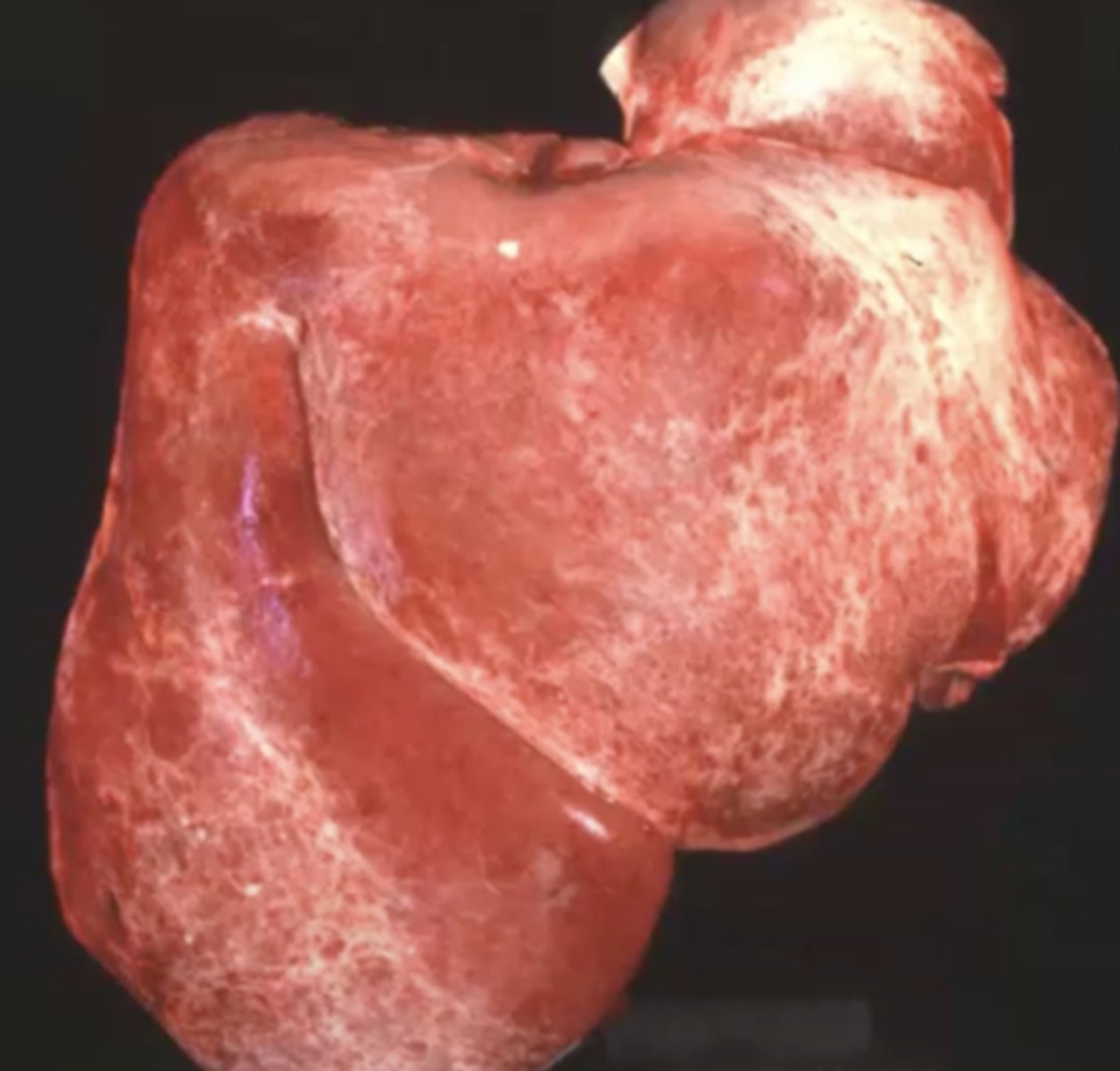
What has caused this gross appearance of this liver?
Amyloidosis
-result of abnormal folding of pathologic proteins
-deposited extracellularly
-waxy + hard liver
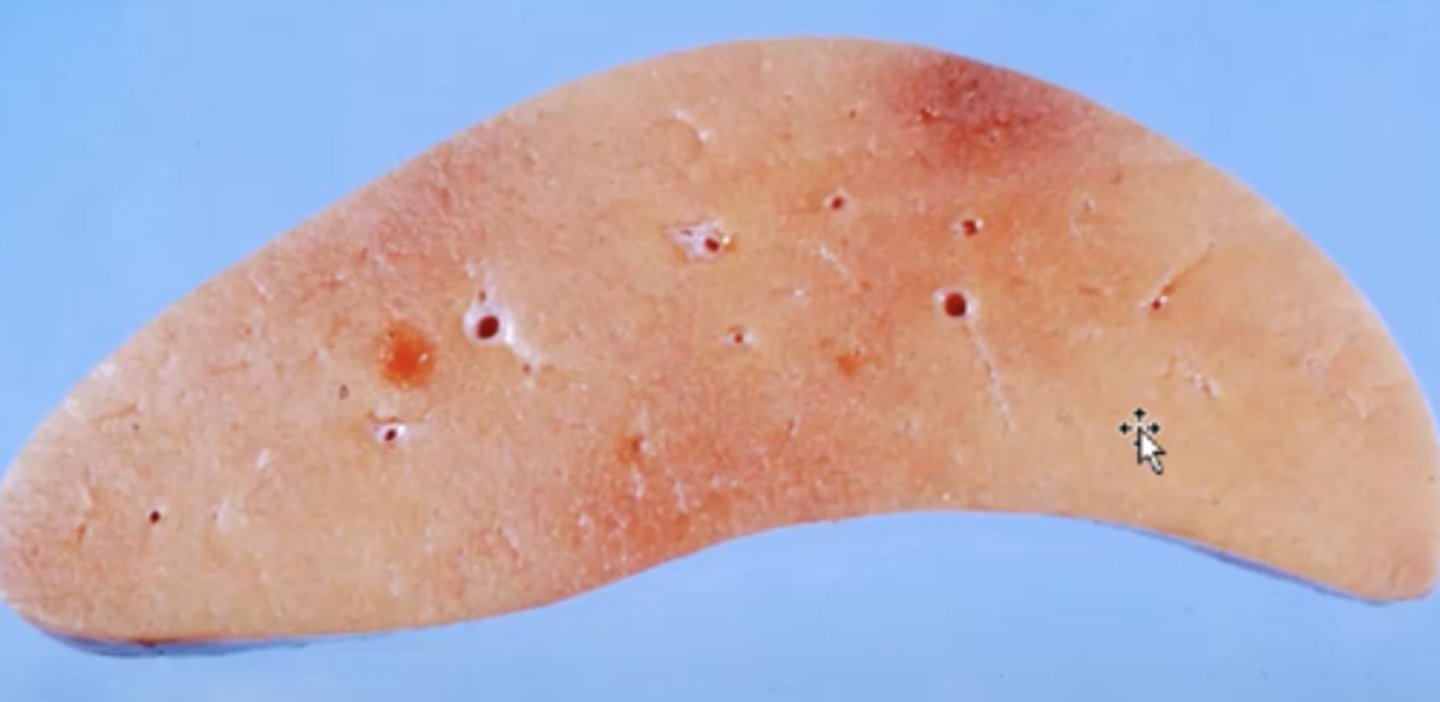
What has caused this gross appearance of this liver?
amyloidosis
-liver is enlarged, friable, and pale - can easily rupture
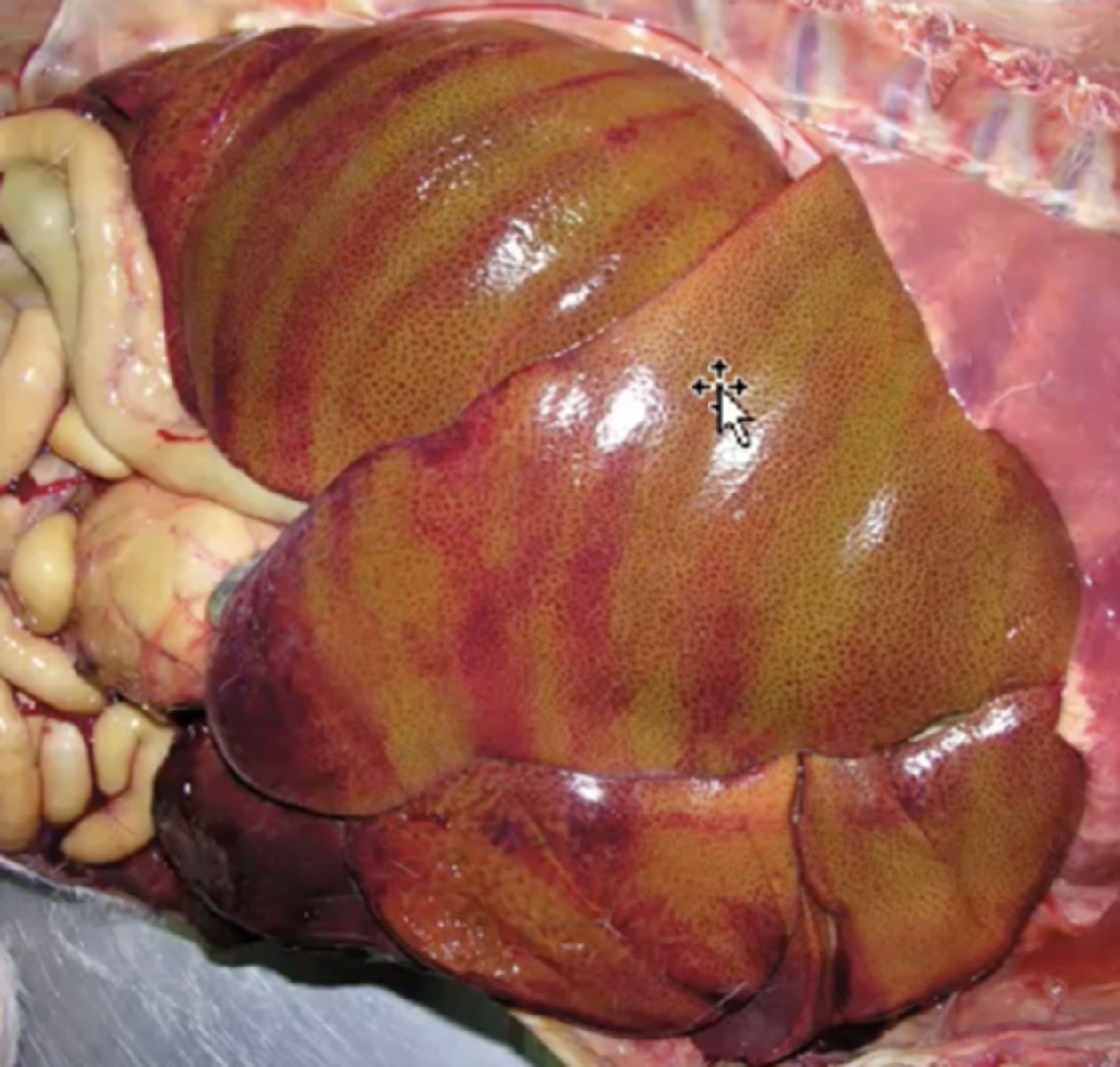
What has caused this gross appearance of this liver?
Amyloidosis
-red lines are from rib impressions
-caused by inflammation
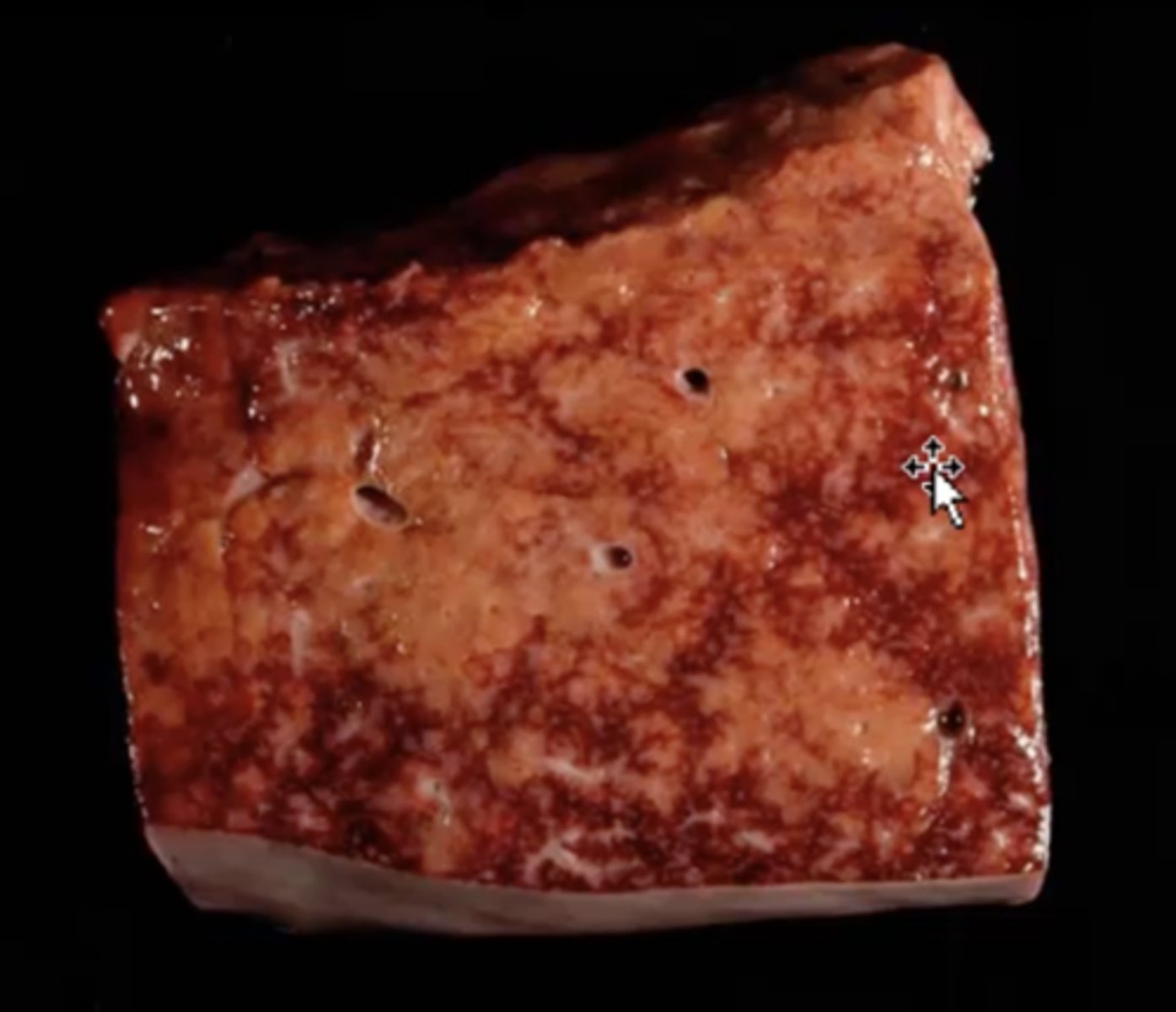
What has caused this gross appearance of this liver?
Chronic passive congestion
-NUT MEG LIVER
-branching fibrosis
-centrilobular fibrosis
-result of right-sided heart disease
-result of hypoxia
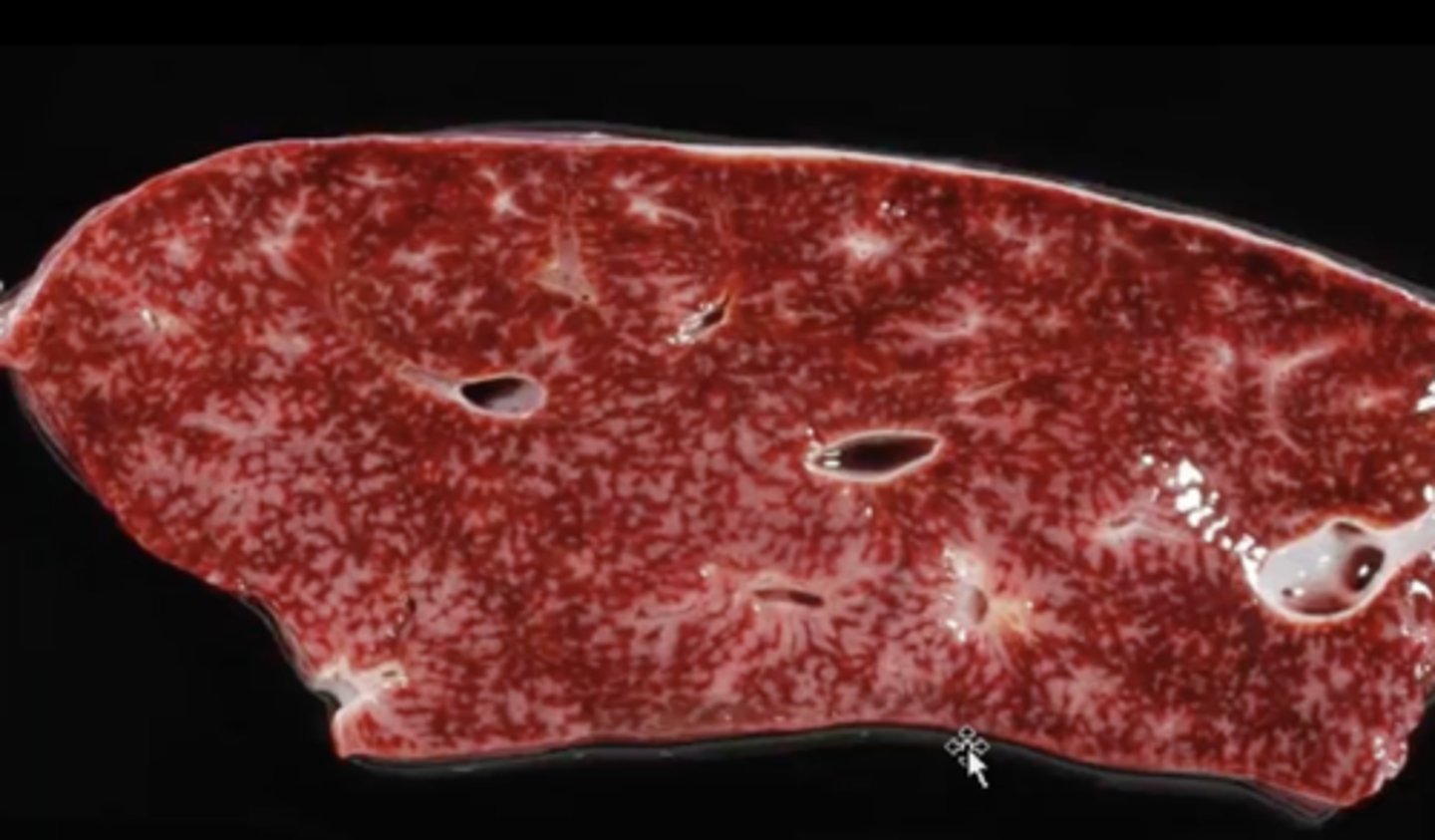
What has caused this gross appearance of this liver?
Chronic passive congestion
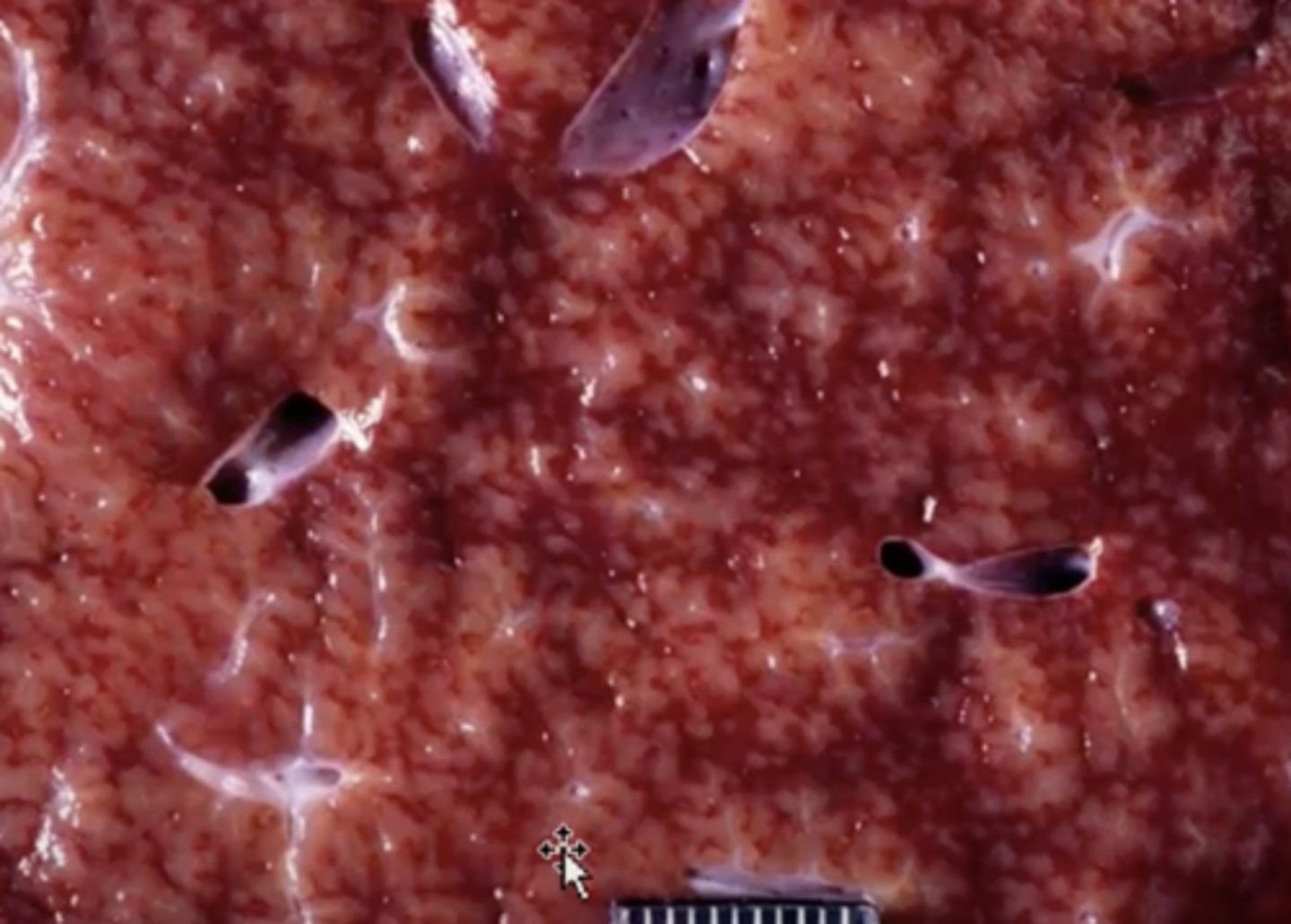
What has caused this gross appearance of the liver?
Chronic passive congestion
-classic Nut Meg liver
-brnahcing fibrosis + hepatocellular loss
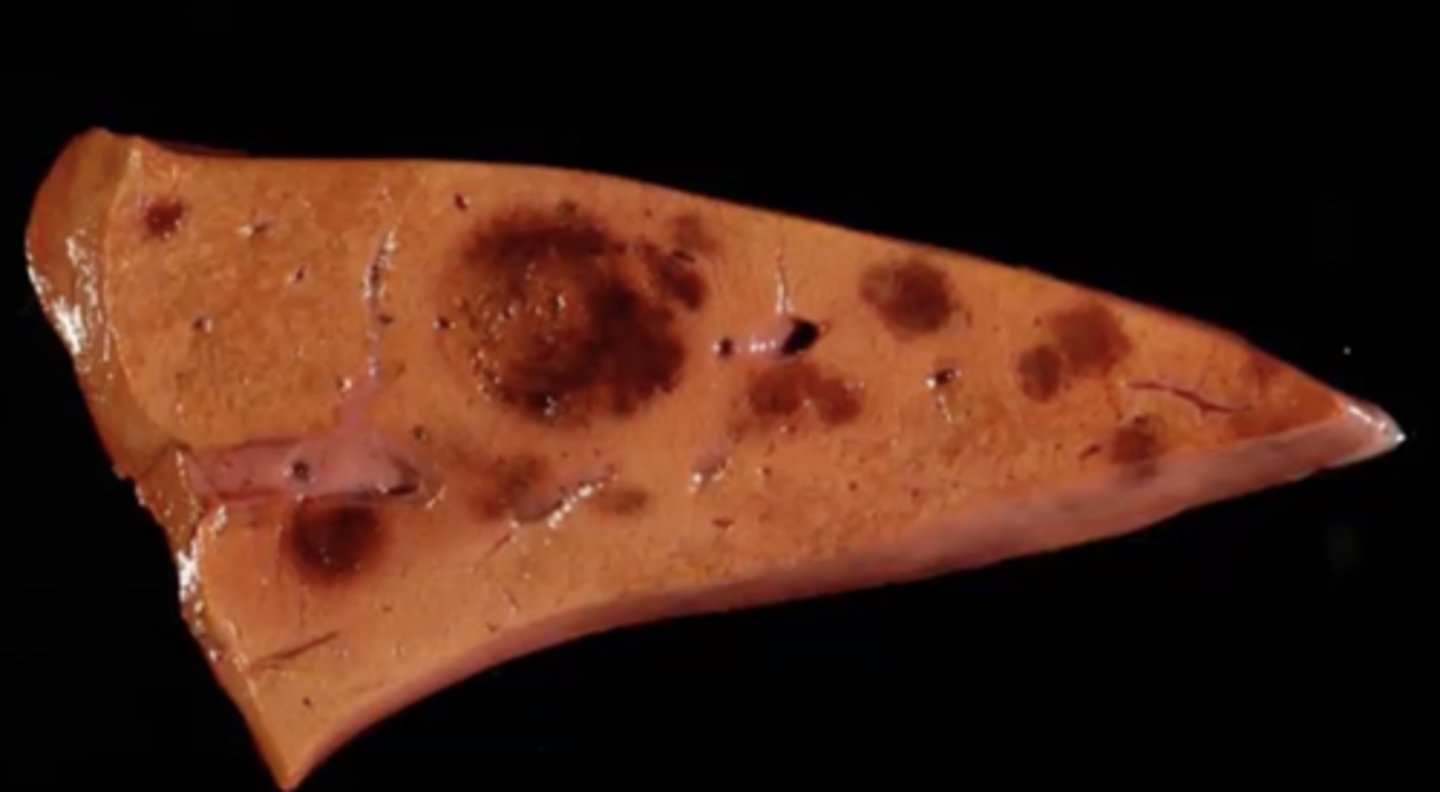
What has caused this gross appearance of this liver?
Hepatic Lipidosis
-has areas of pooled blood
-seen in cattle + cats
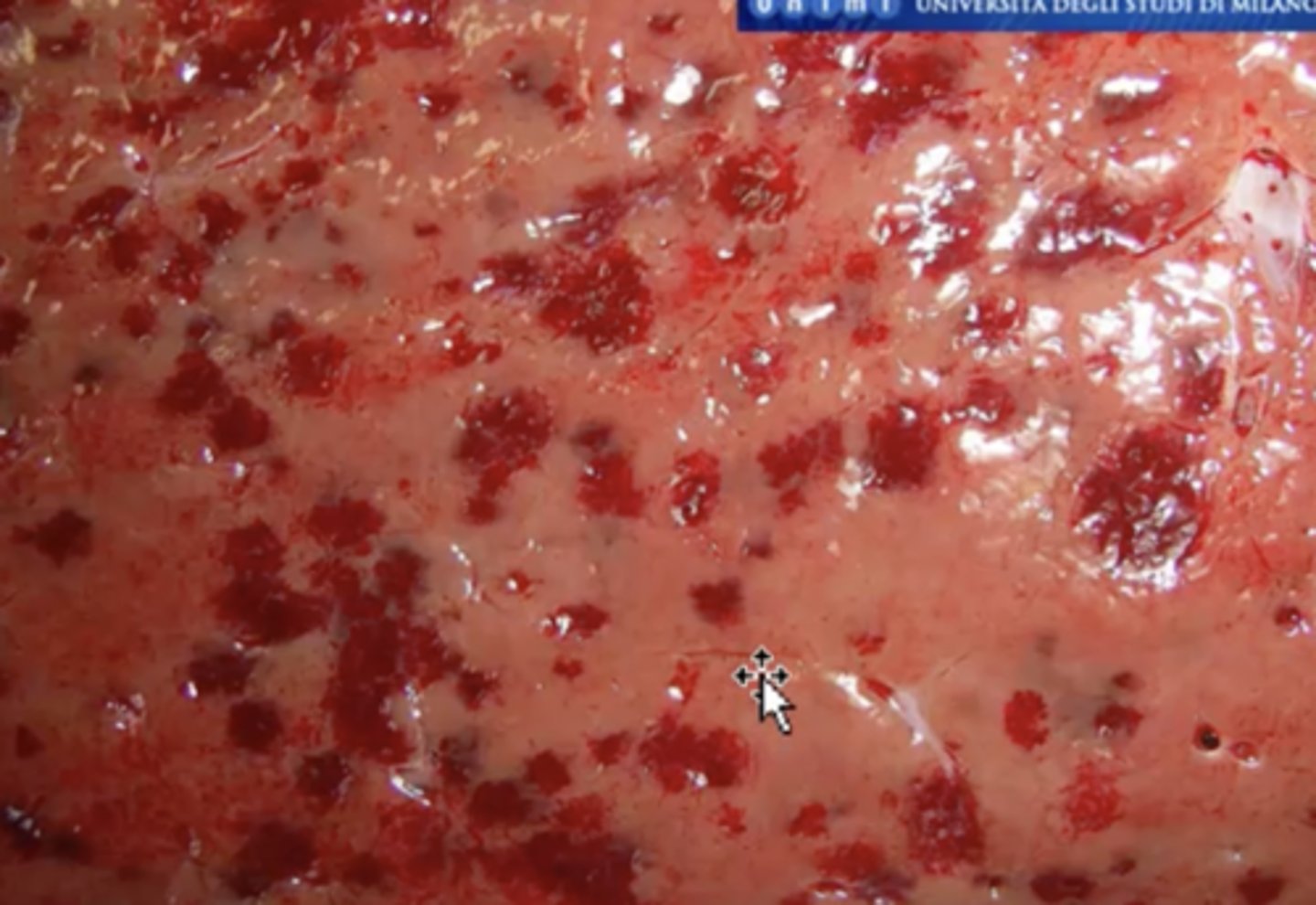
Hepatiocellular necrosis
-can see depressions on the surface where there has been hepatocyte loss
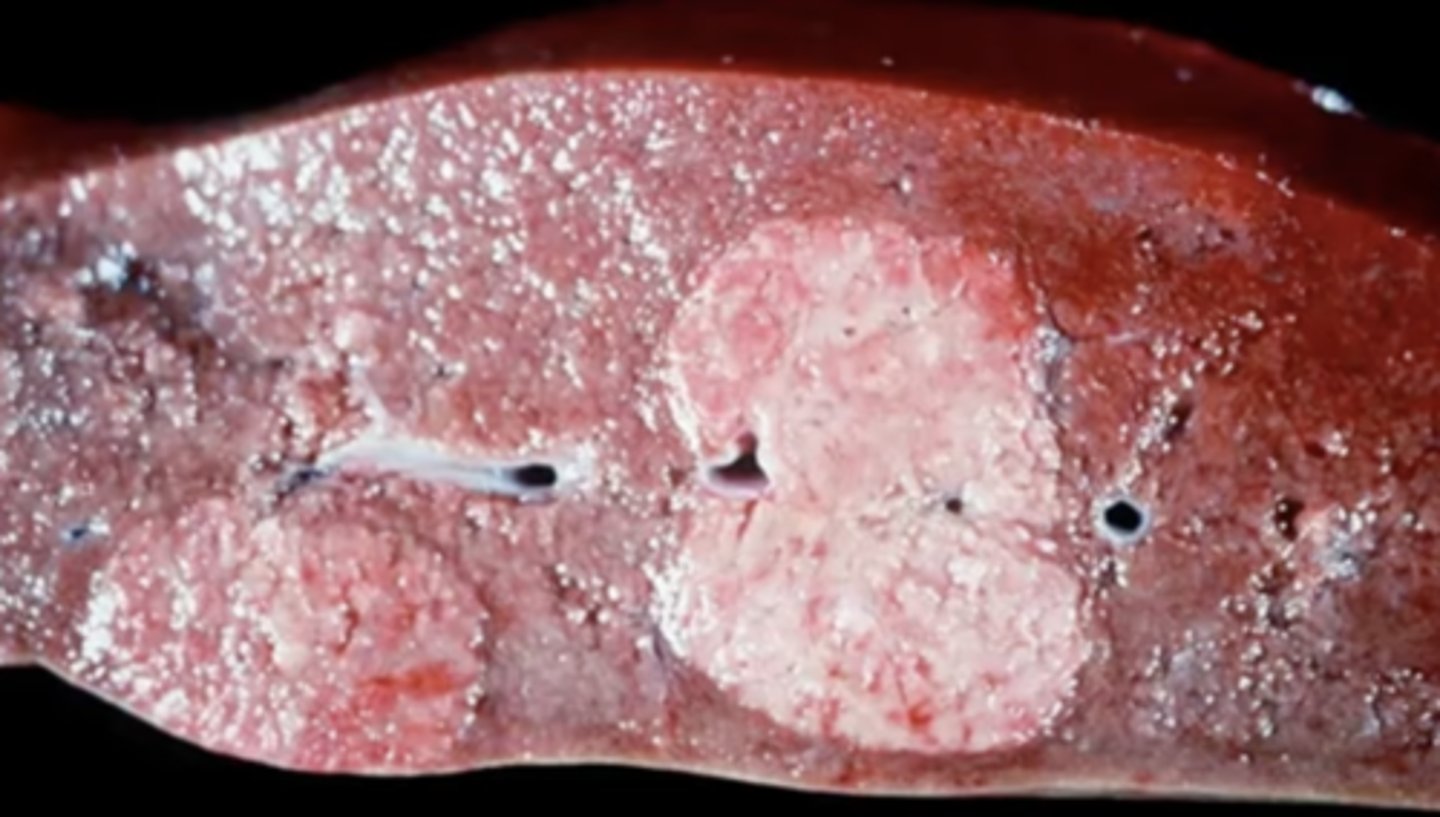
What has caused this gross appearance of this liver?
Nodular hyperplasia
-benign tumor - encapsulated
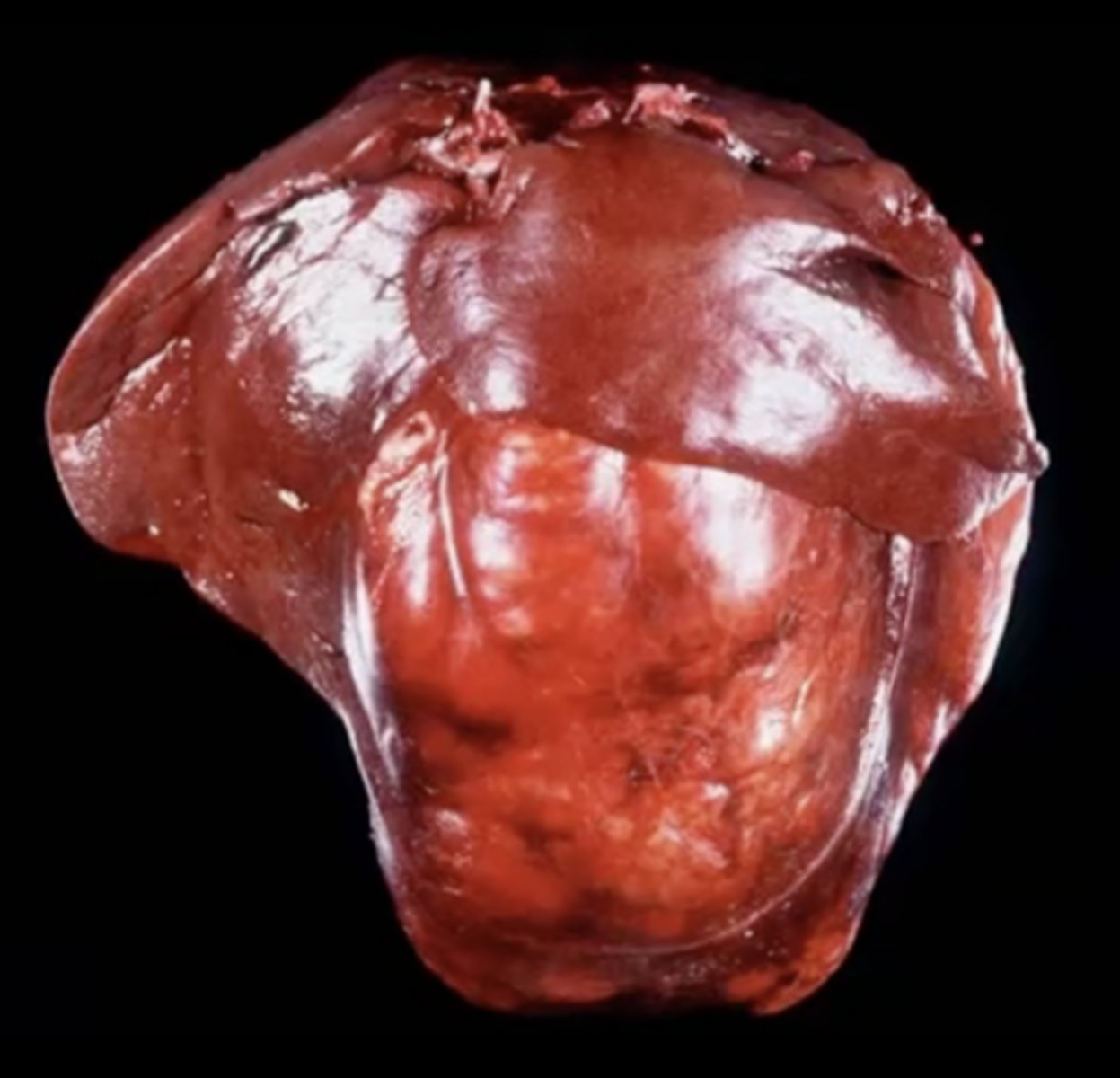
What has caused this gross appearance of this liver?
Hepatocellular adenoma
-discrete masses
-benign epithelial tumor
What has caused this gross appearance of this liver?
Hepatocellular carcinoma
-firm tissue
-malignant
-
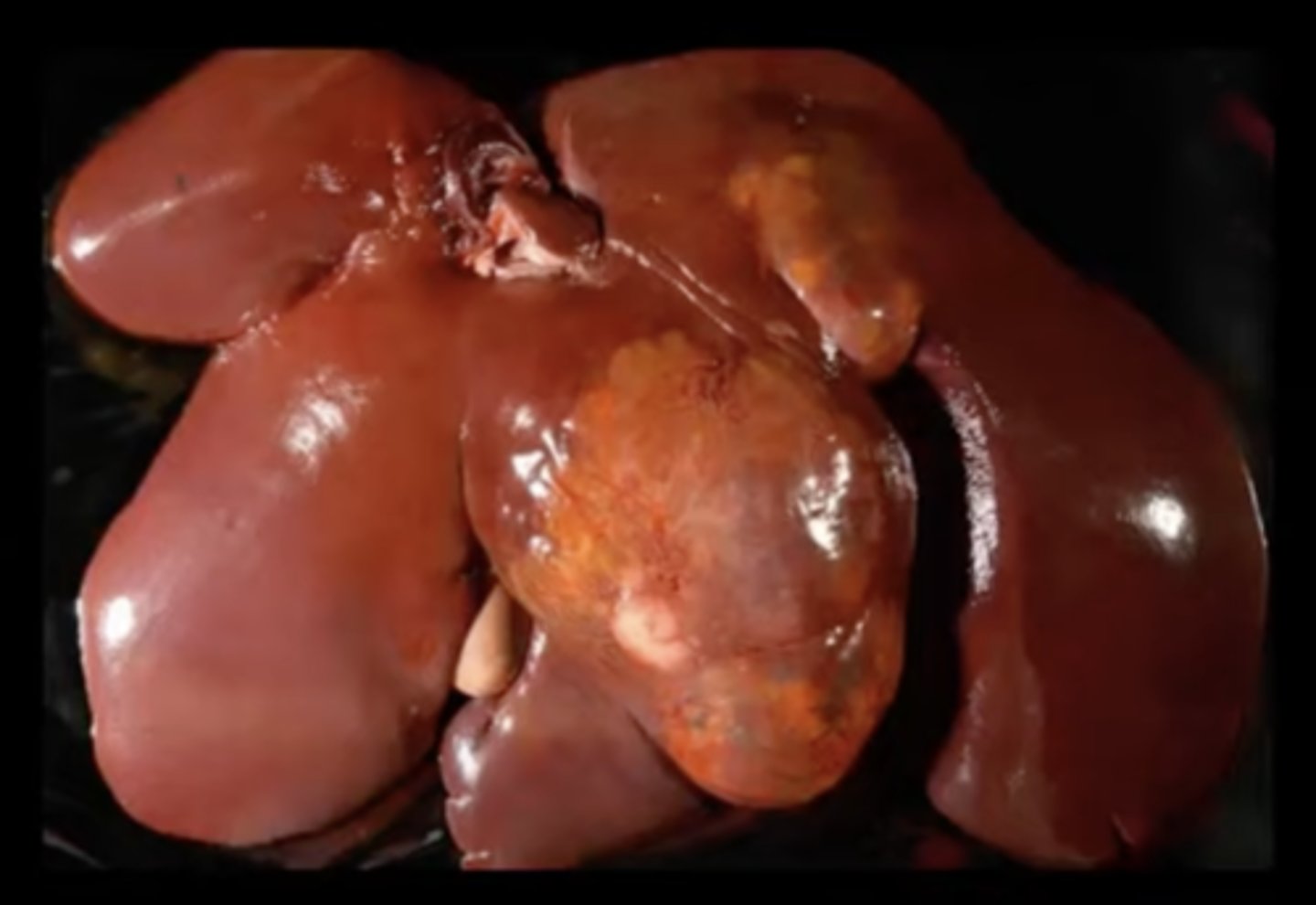
What has caused this gross appearance of this liver?
Hepatocellular carcinoma
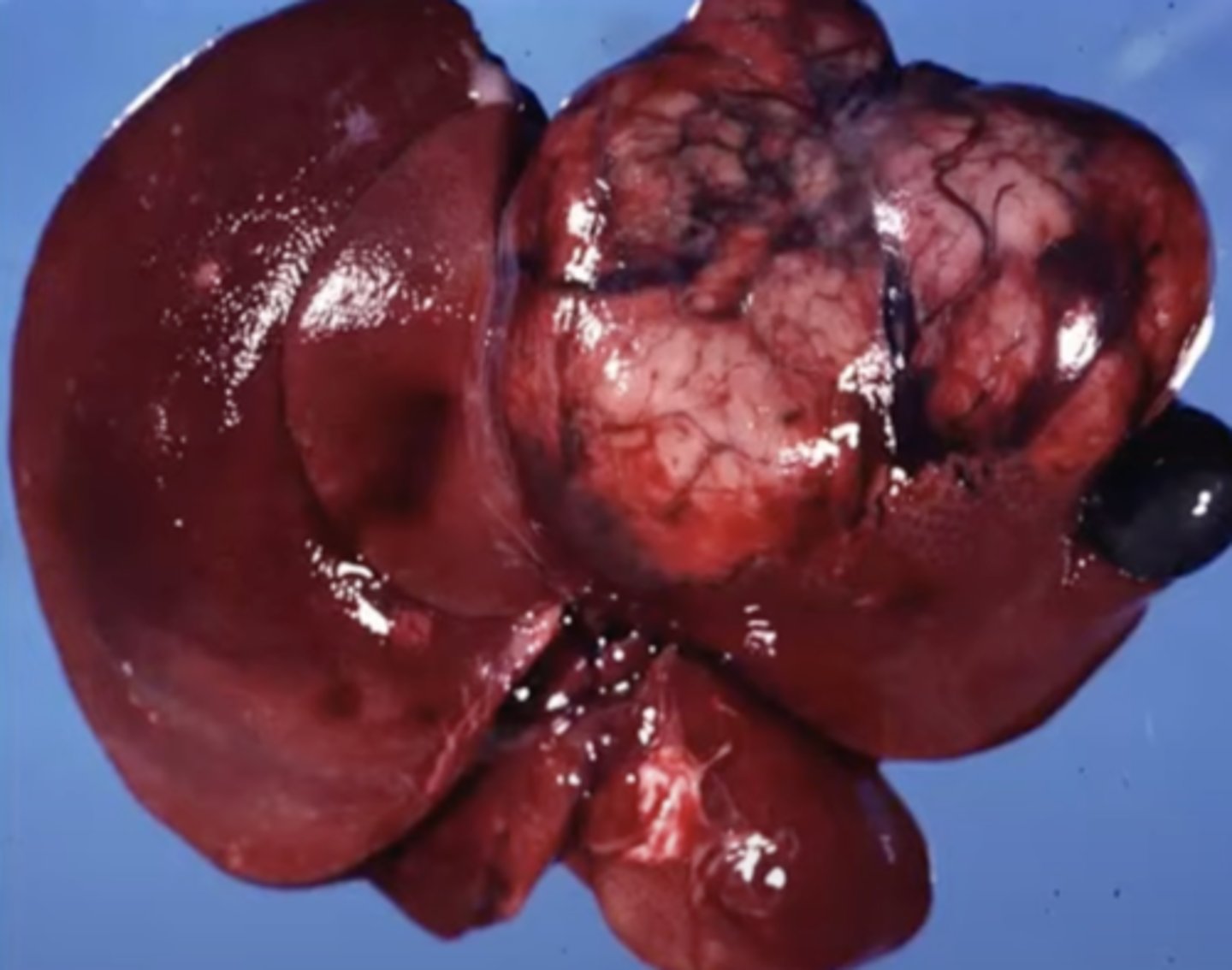
What has caused this gross appearance of this liver?
Hepatocellular carcinoma caused by a viral infection
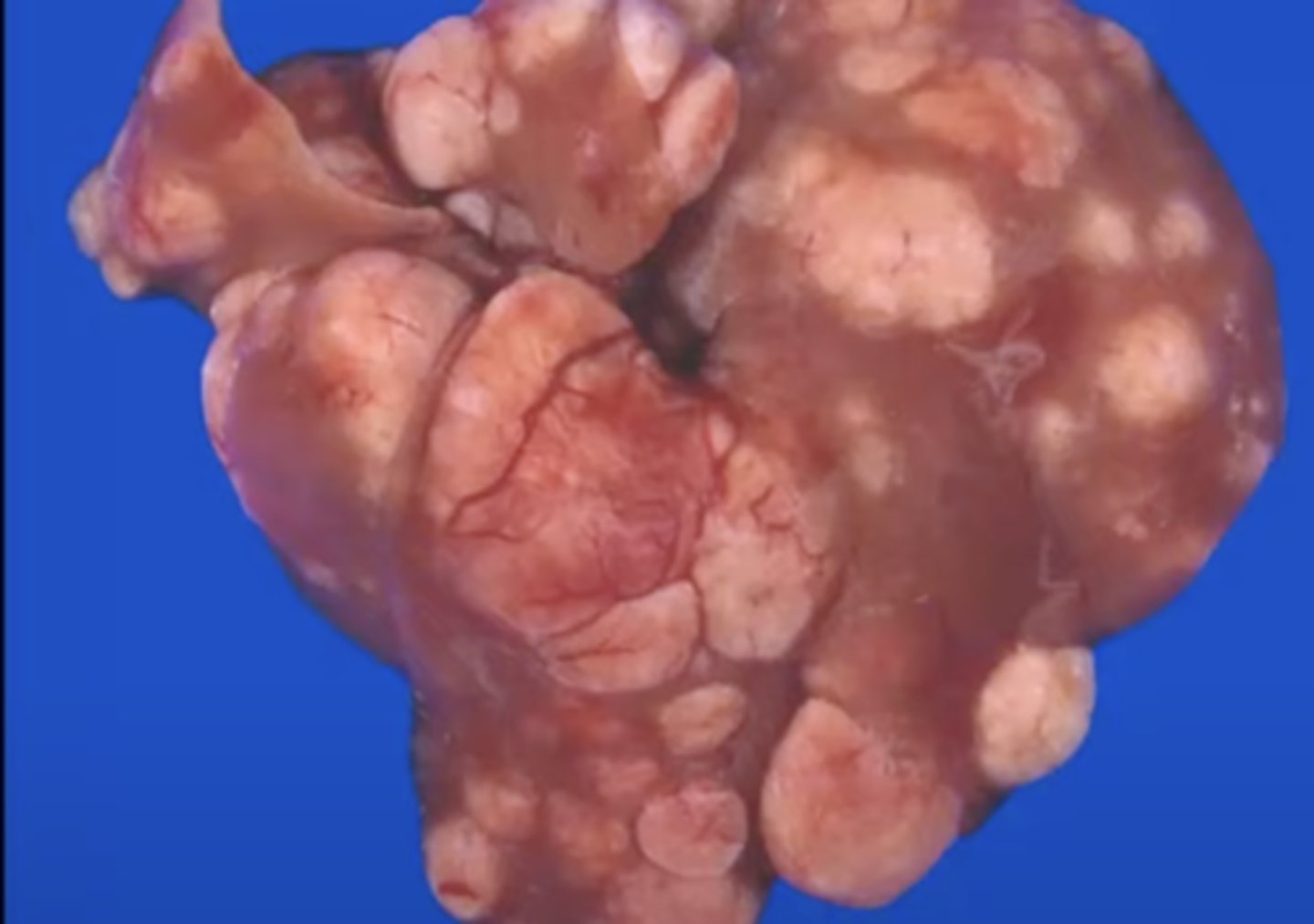
What has caused this gross appearance of this mouse liver?
Hepatocellular adenomas
-benign epithelial tumor
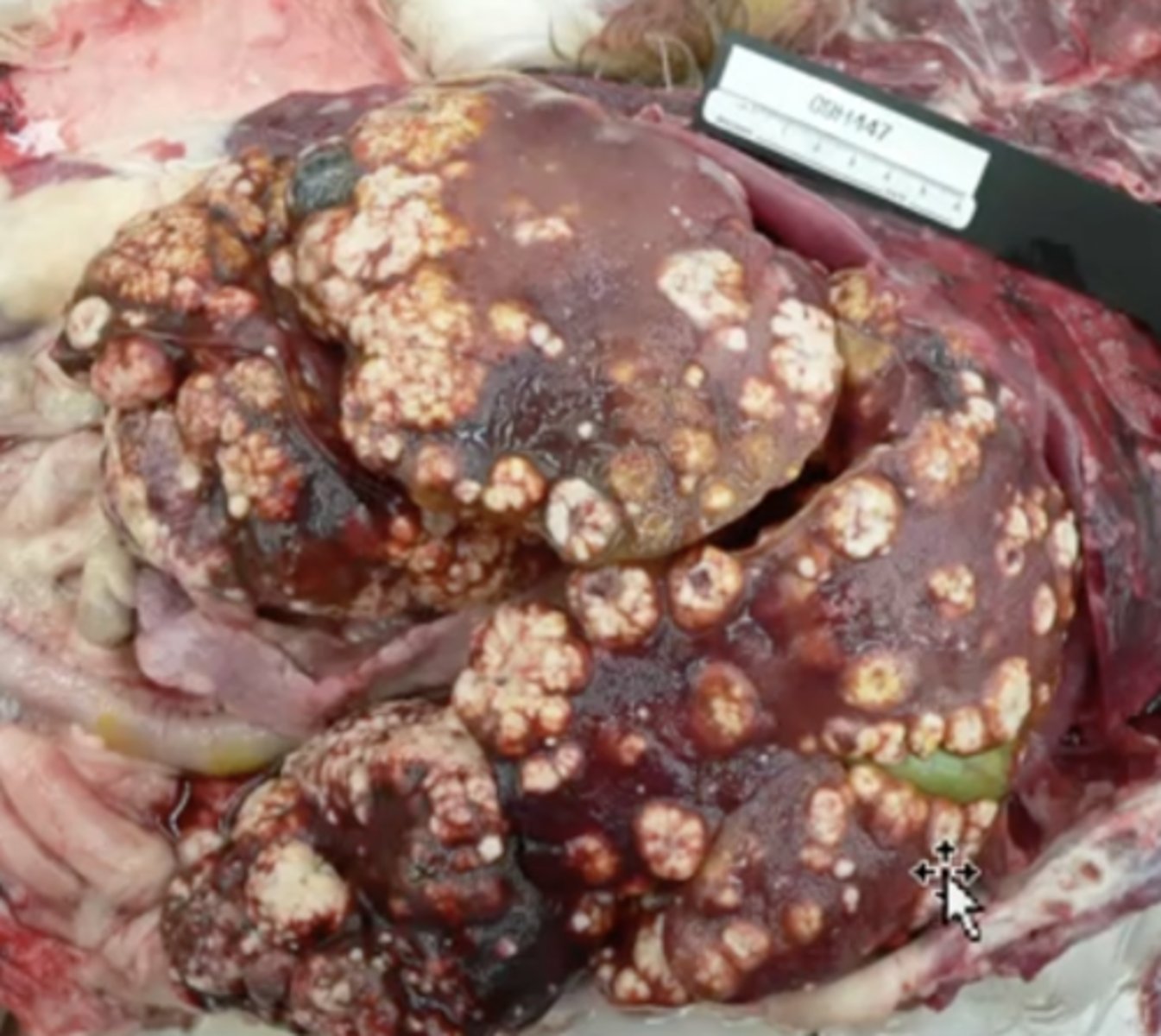
What has caused this gross appearance of this liver?
Cholangiocarcinoma
-tumor of the bile ducts
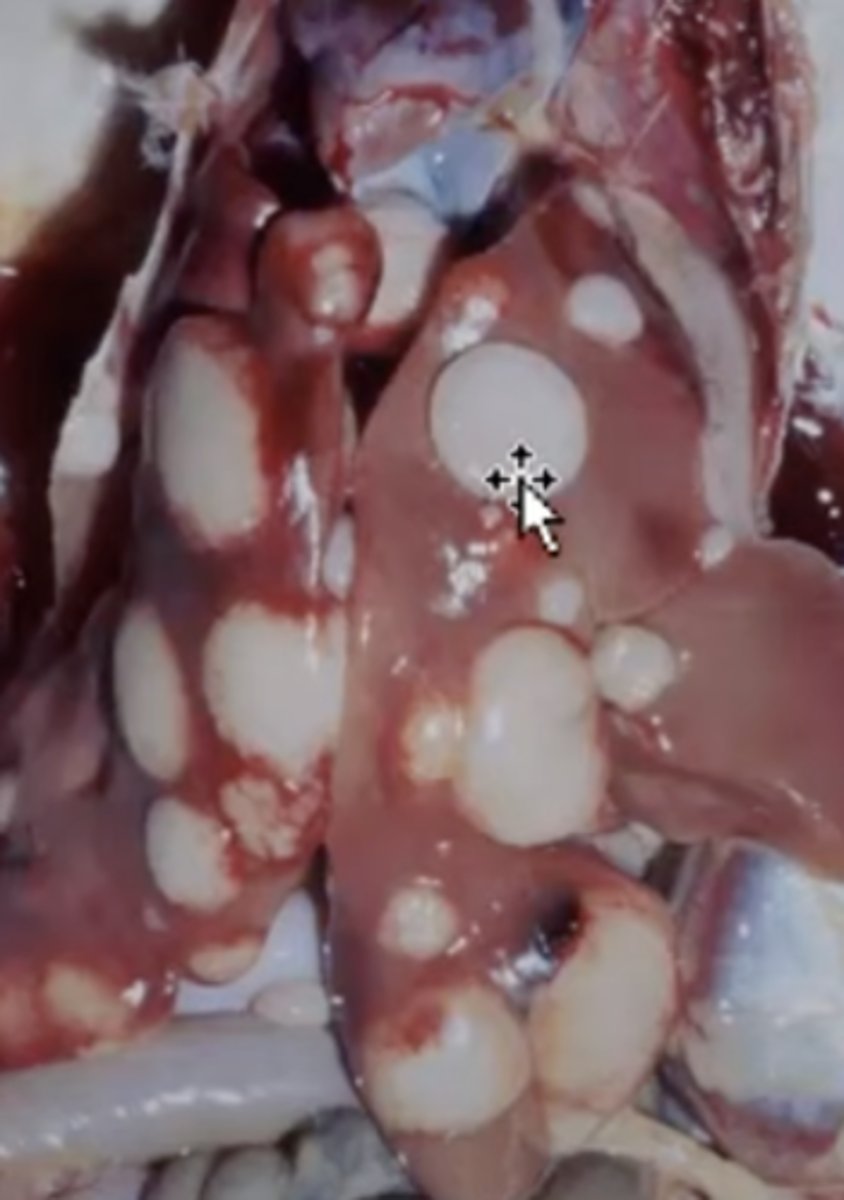
What has caused this gross appearance of this chicken liver?
Oncogenic virus- mareks disease
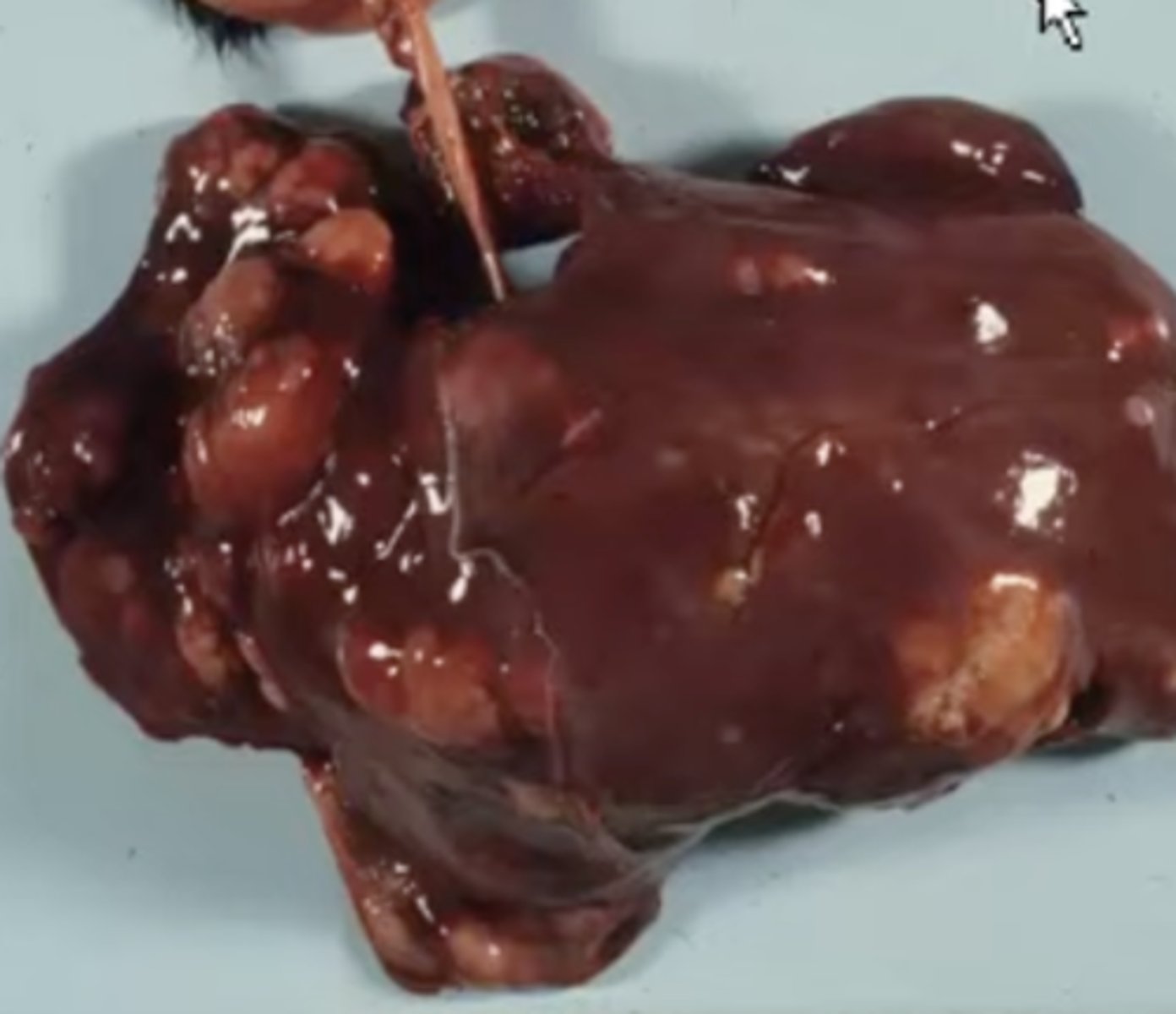
What has caused this gross appearance of this bovine liver?
BLV Lymphoma
-nodular
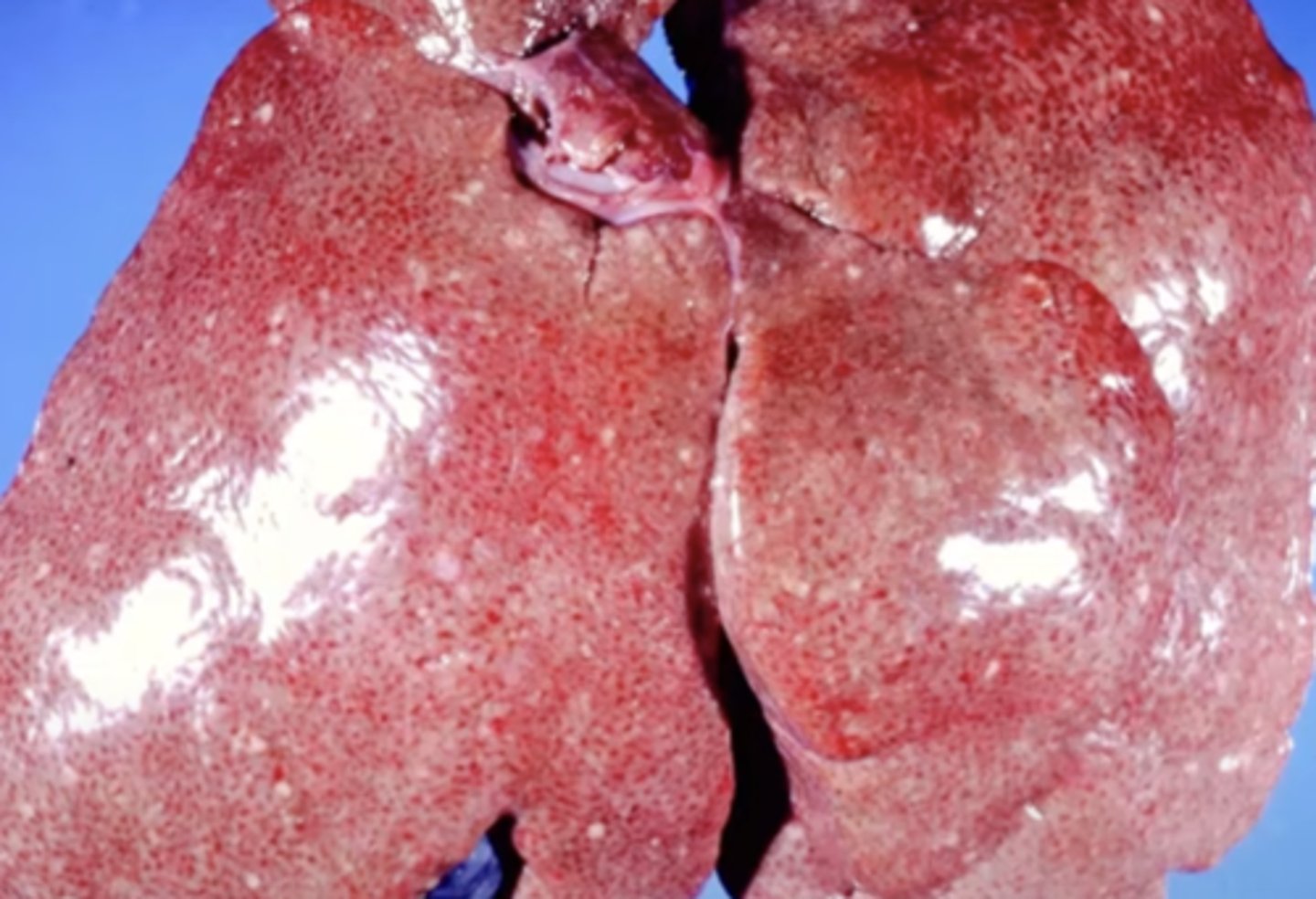
What has caused this gross appearance of this liver?
Mast cell tumor !!
-granulated
-red
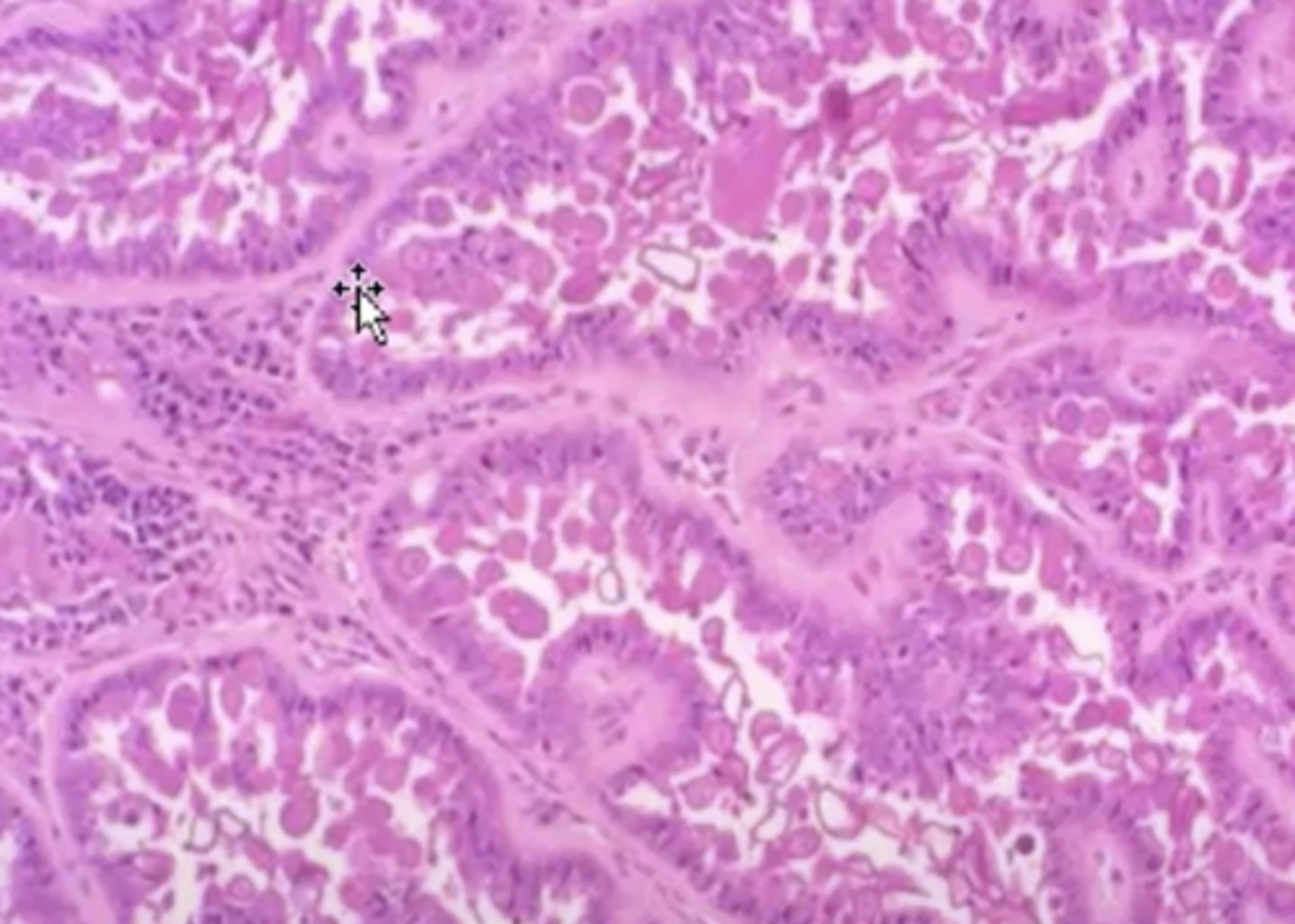
What has caused this histologic appearance of this liver?
Cholangiohepatitis
-inflammation of the biliary ducts and parenchyma
-expanded bile ducts
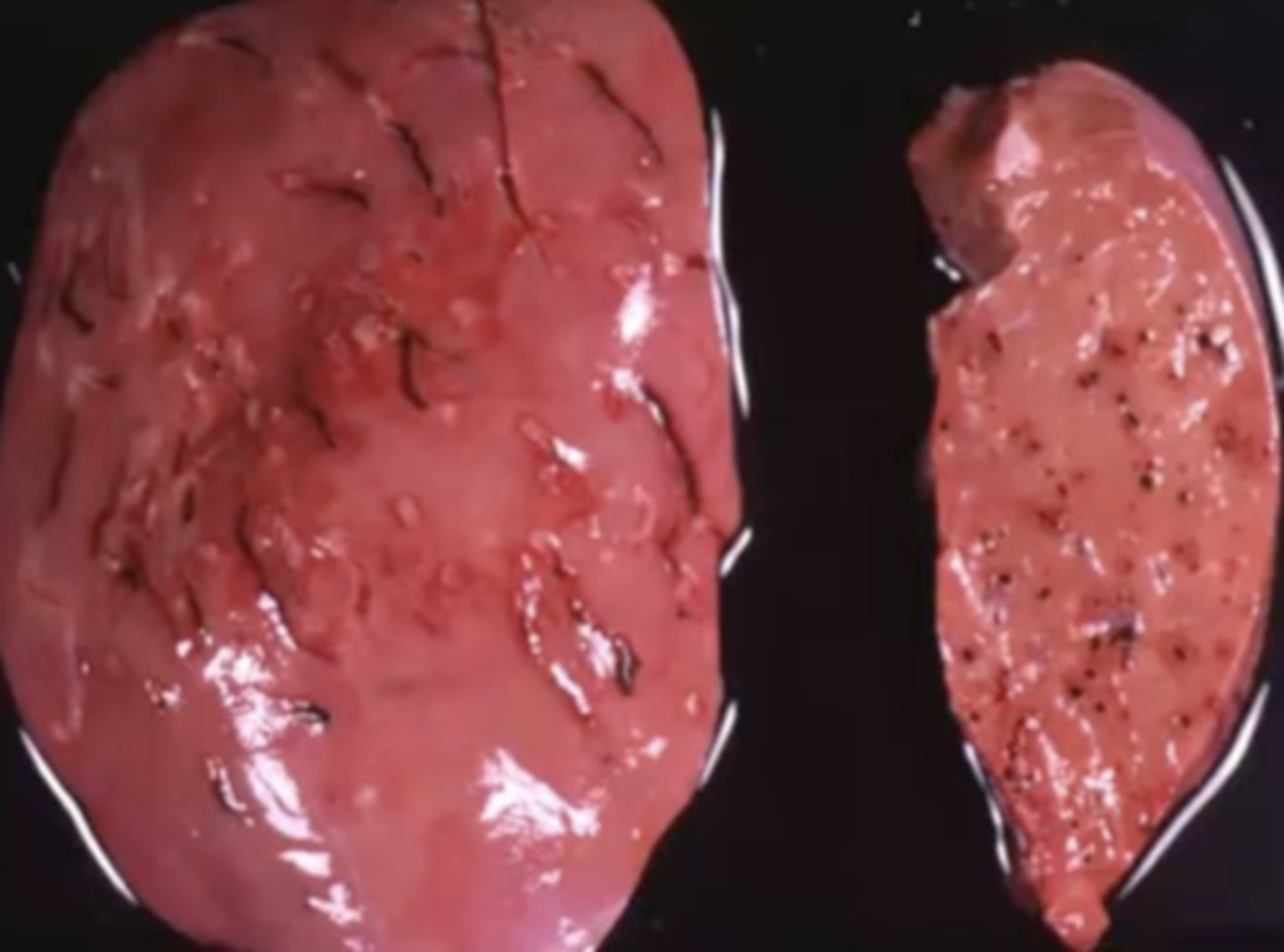
What has caused this gross appearance of this sheep liver?
Parasite migration
-black lines indicate where parasites have migrated through
(hemorrhagic tracts)
- white spots/lines are scars from previous migrations
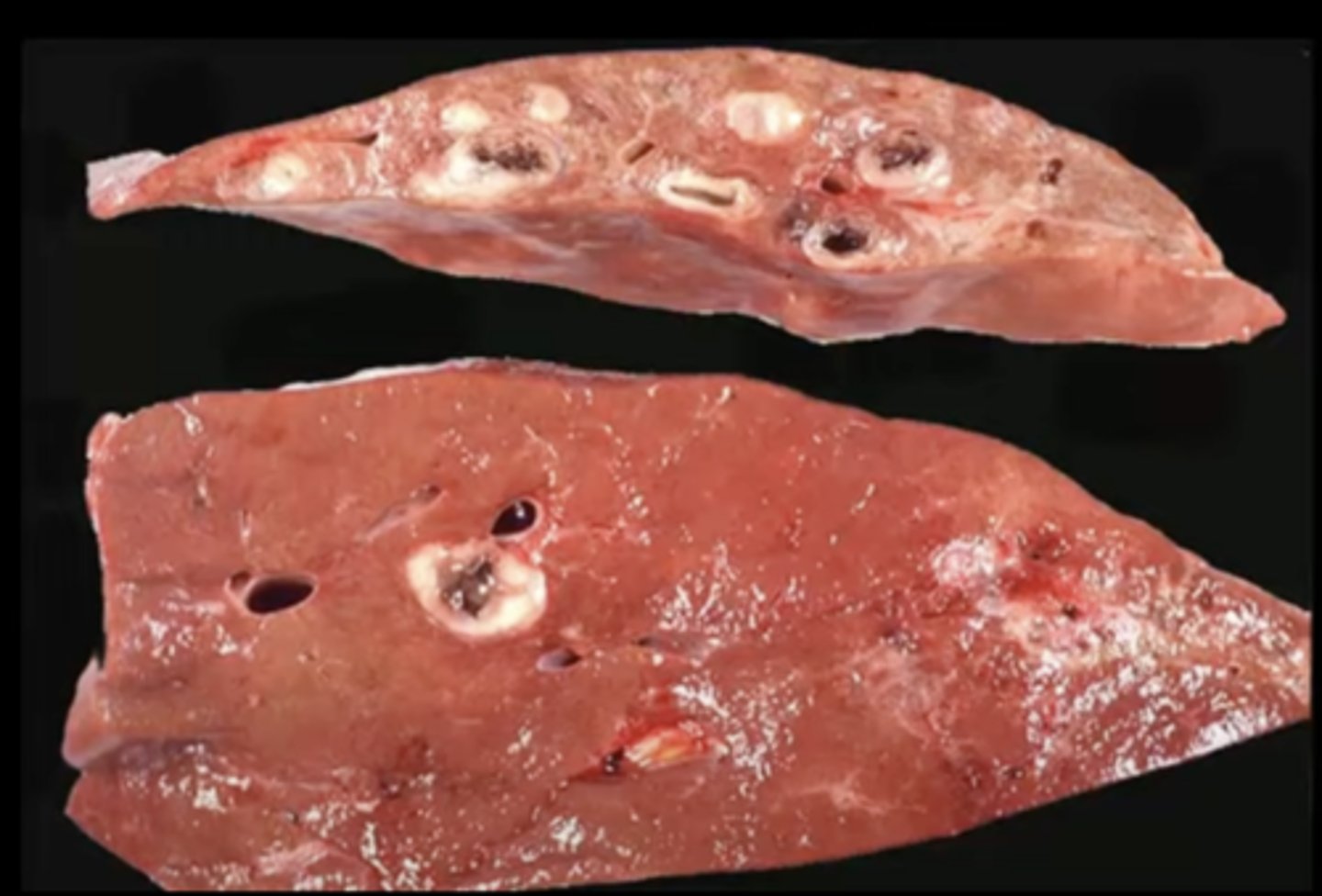
What has caused this gross appearance of this cow liver?
large bile ducts- suggest the presence of biliary flukes
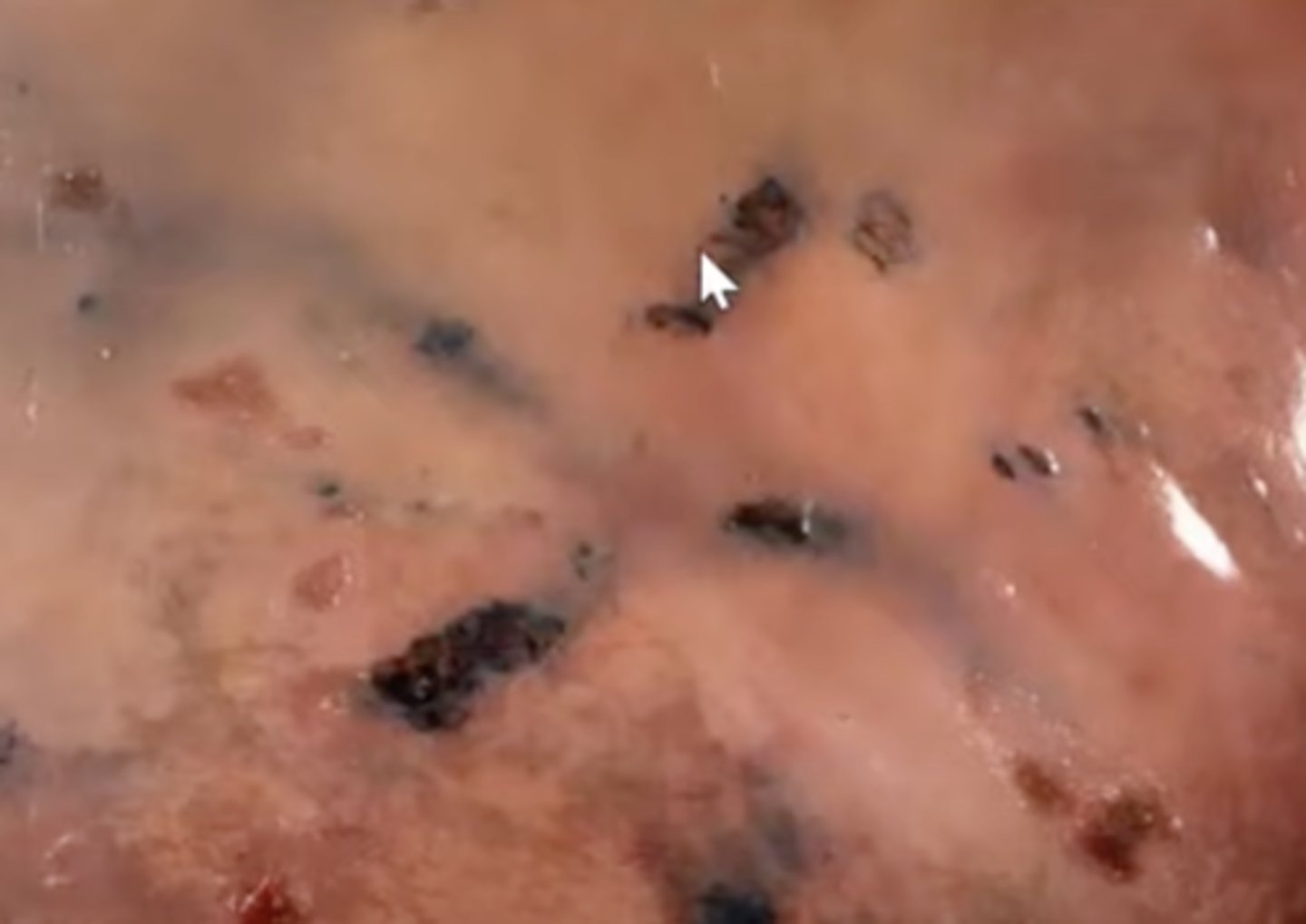
What caused this lesion in the liver of a deer?
Flukes!!
-migration of flukes through liver parenchyma
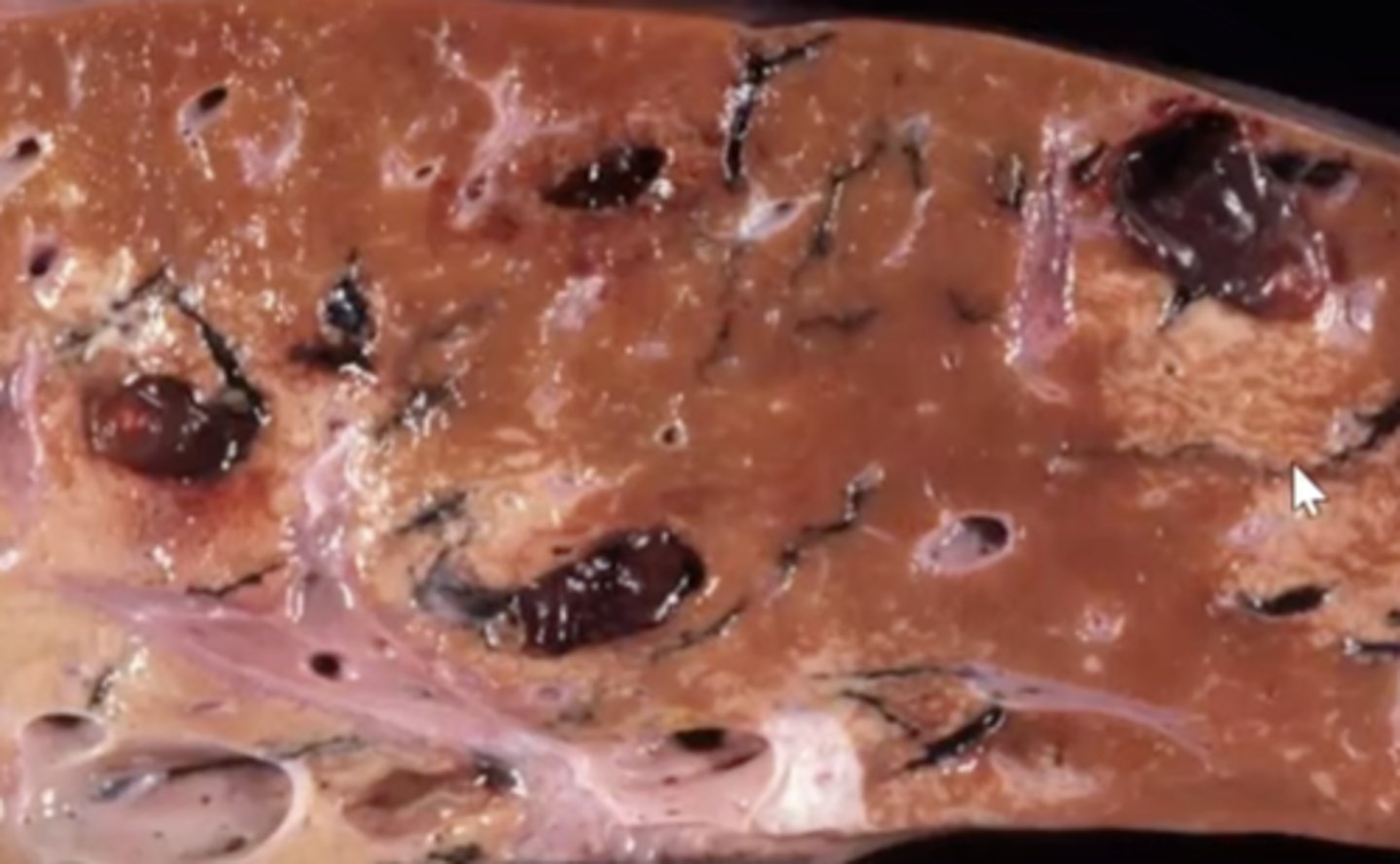
What has caused this gross appearance of this liver?
Fascioloides magna migration
-black lines
-hepatocytes have filled with fat (white spots) due to hypoxia
-fibrous connective tissue from damage
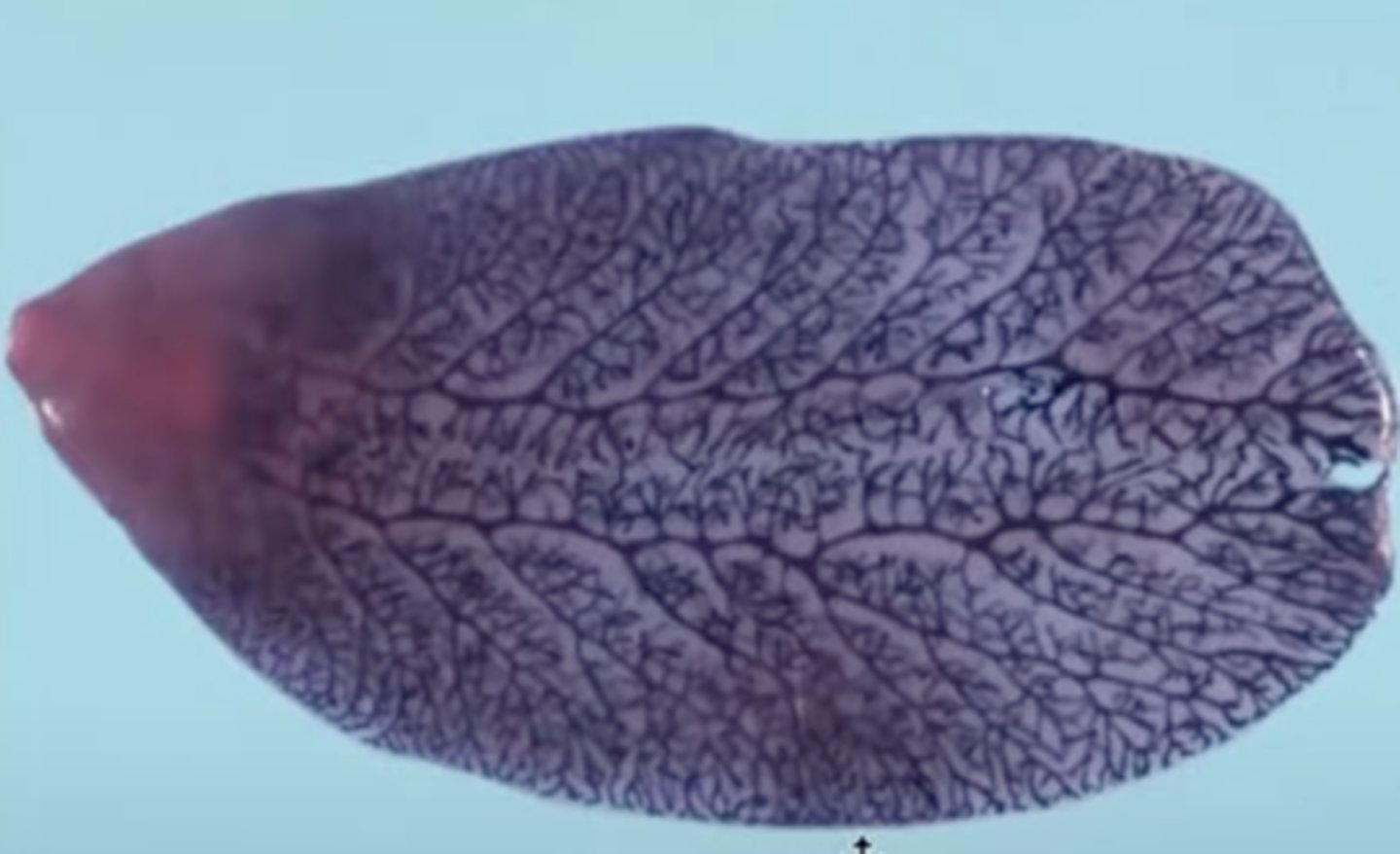
What is this adult leaf-shaped parasite called?
Fascioloides magna
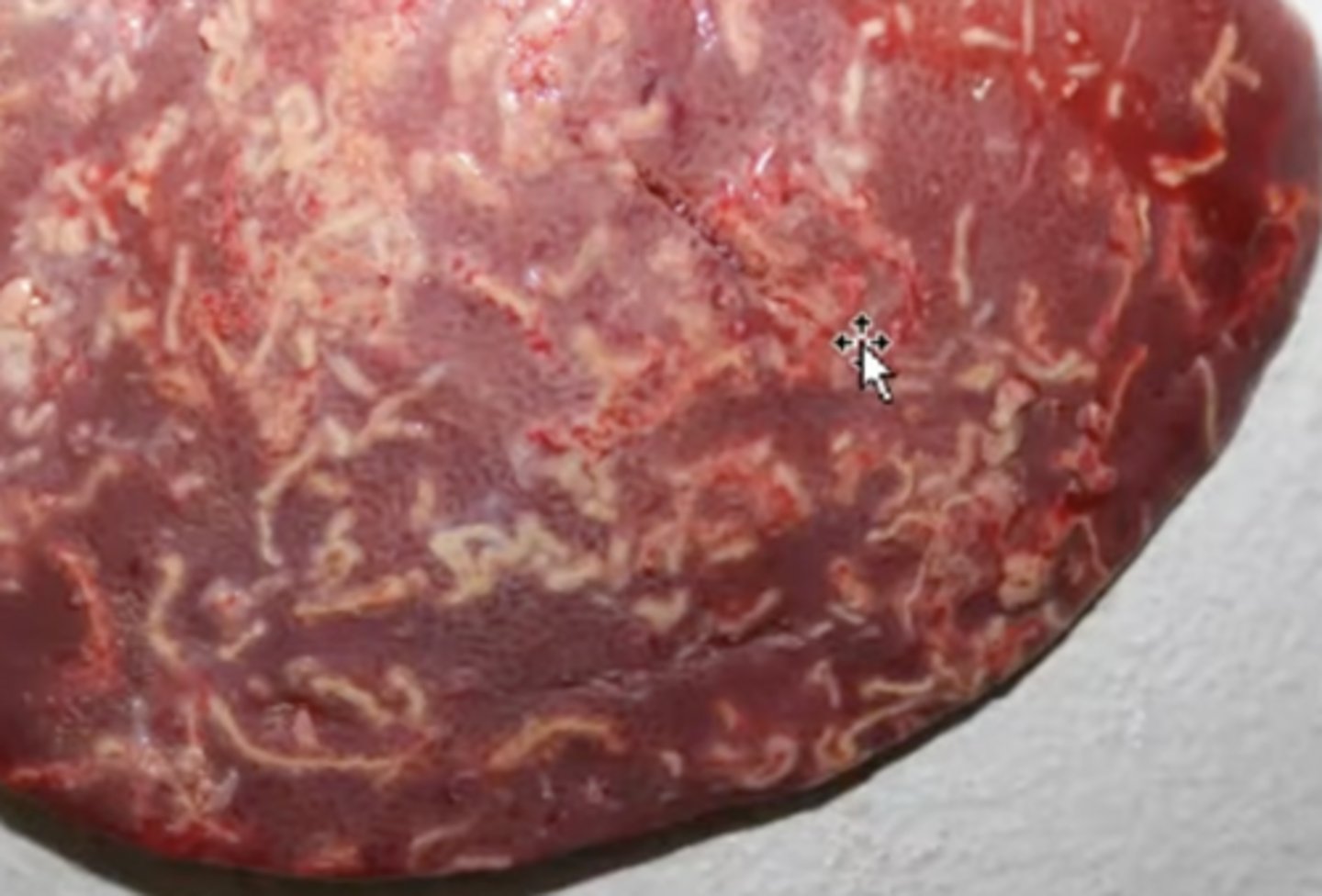
What has caused this gross appearance of this liver?
extensive fibrosis of biliary ducts from fluke migration
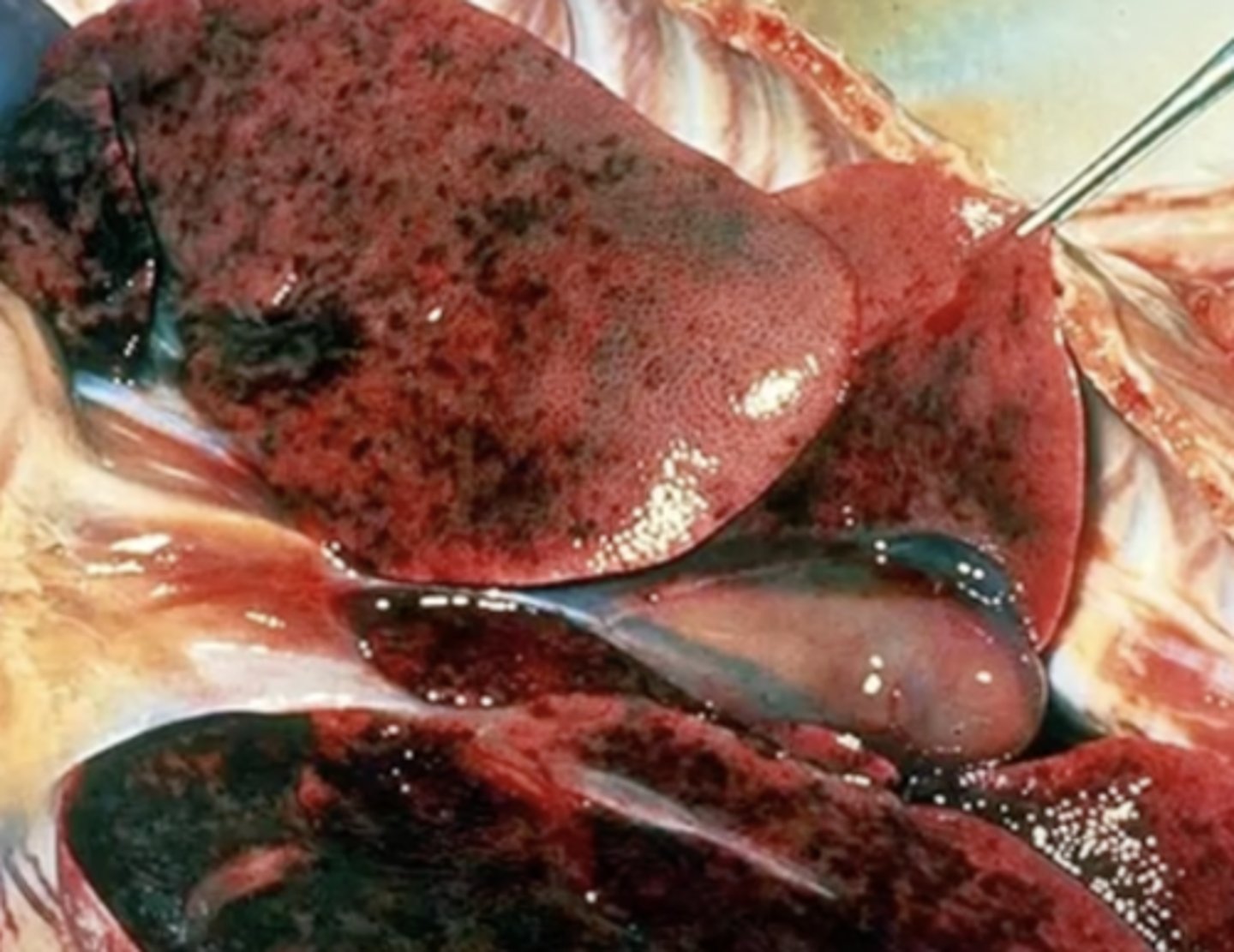
What has caused this gross appearance of this pig liver?
Hepatosis Dietetica
-caused by vitamin E/Selenium deficiency in rapidly growing pigs
-massive hepatic necrosis due to oxidative injury
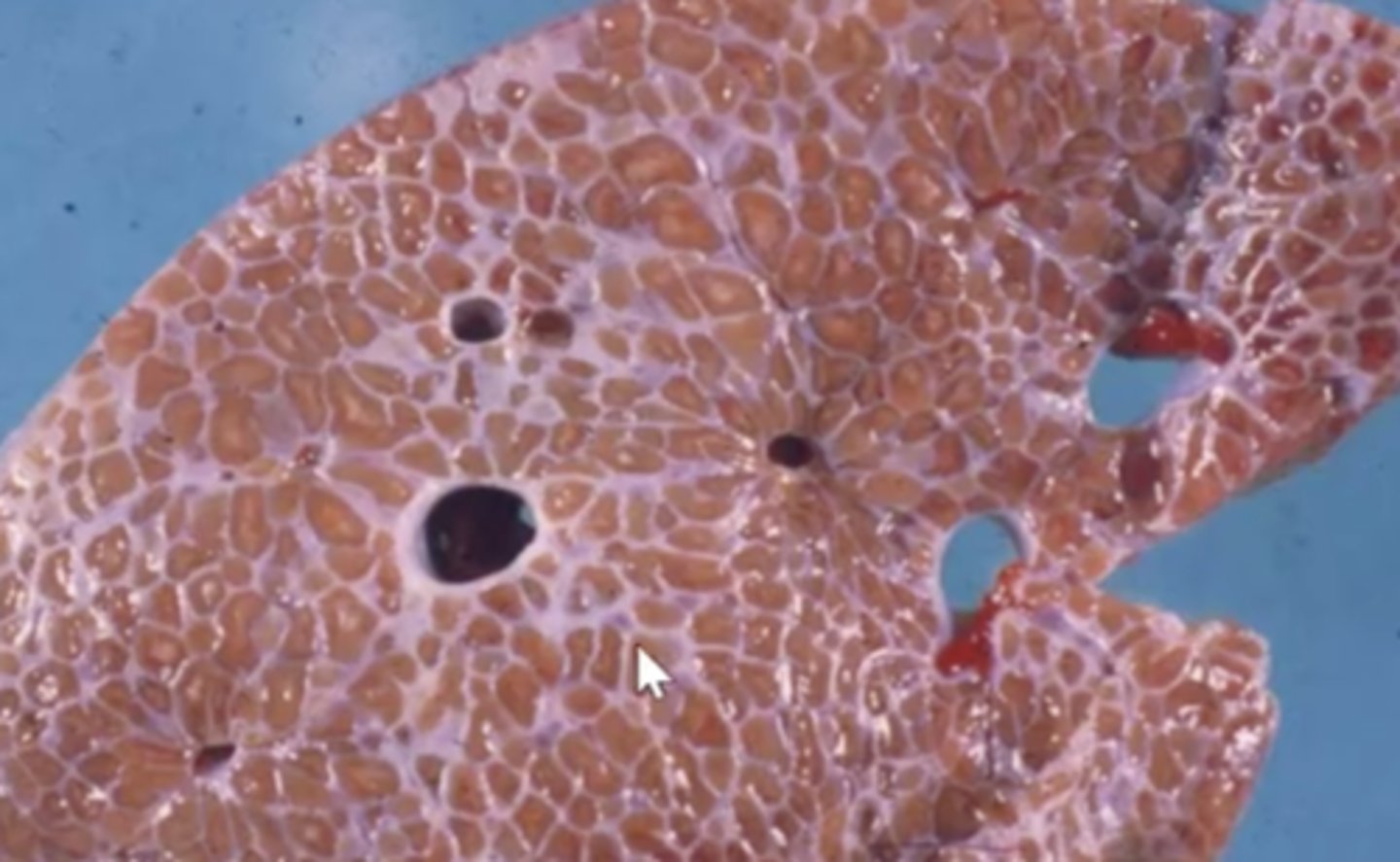
What has caused this gross appearance ?
skeletal muscle necrosis from Hepatosis Dietetica
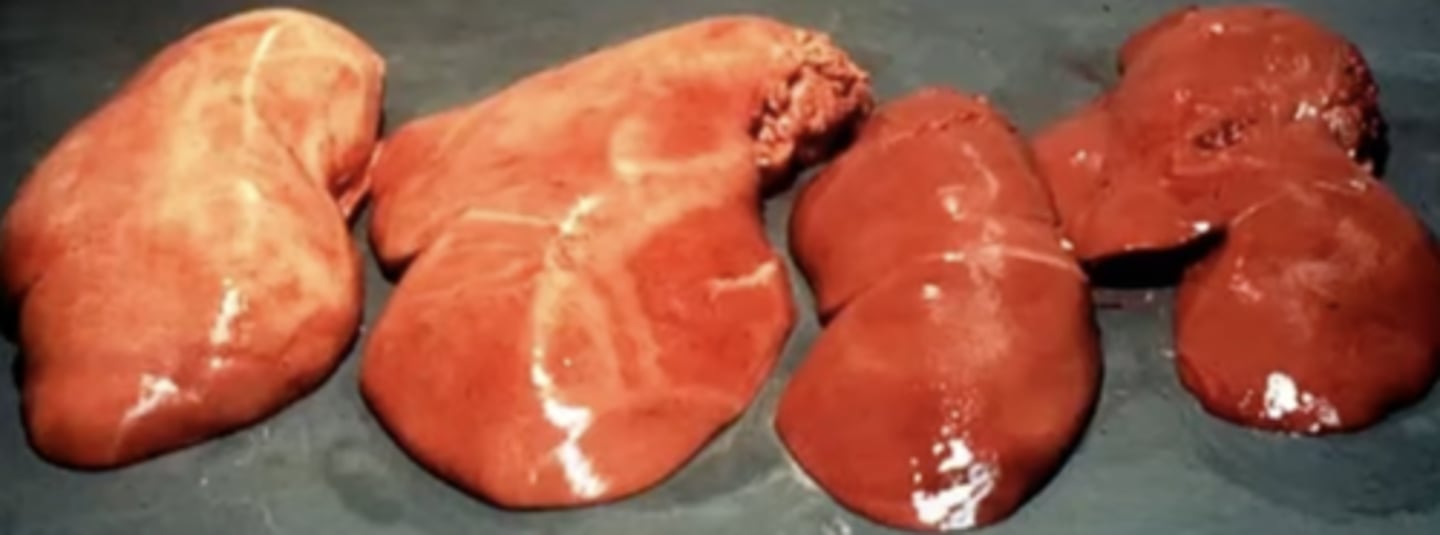
Cobalt deficiency causing hepatocellular steatosis (lipidosis)
-"white liver disease" in small ruminants
-vitamin B12 deficient
-lipid accumulation
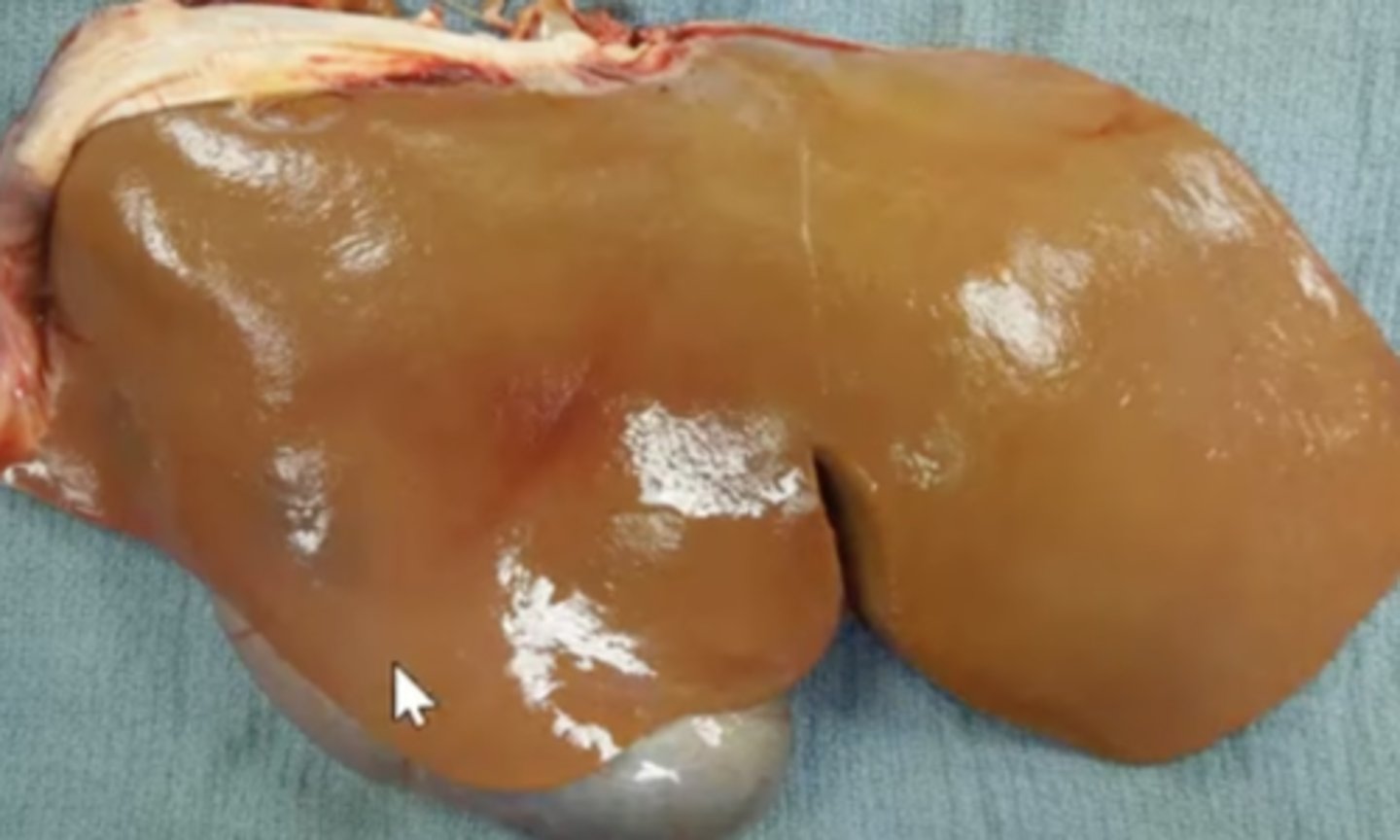
What has caused this gross appearance of this sheep's liver
Copper toxicity
-swollen, pale to orange liver
-necrosis of the liver
-affects the centrilobular + midzonal region... can be panlobular necrosis
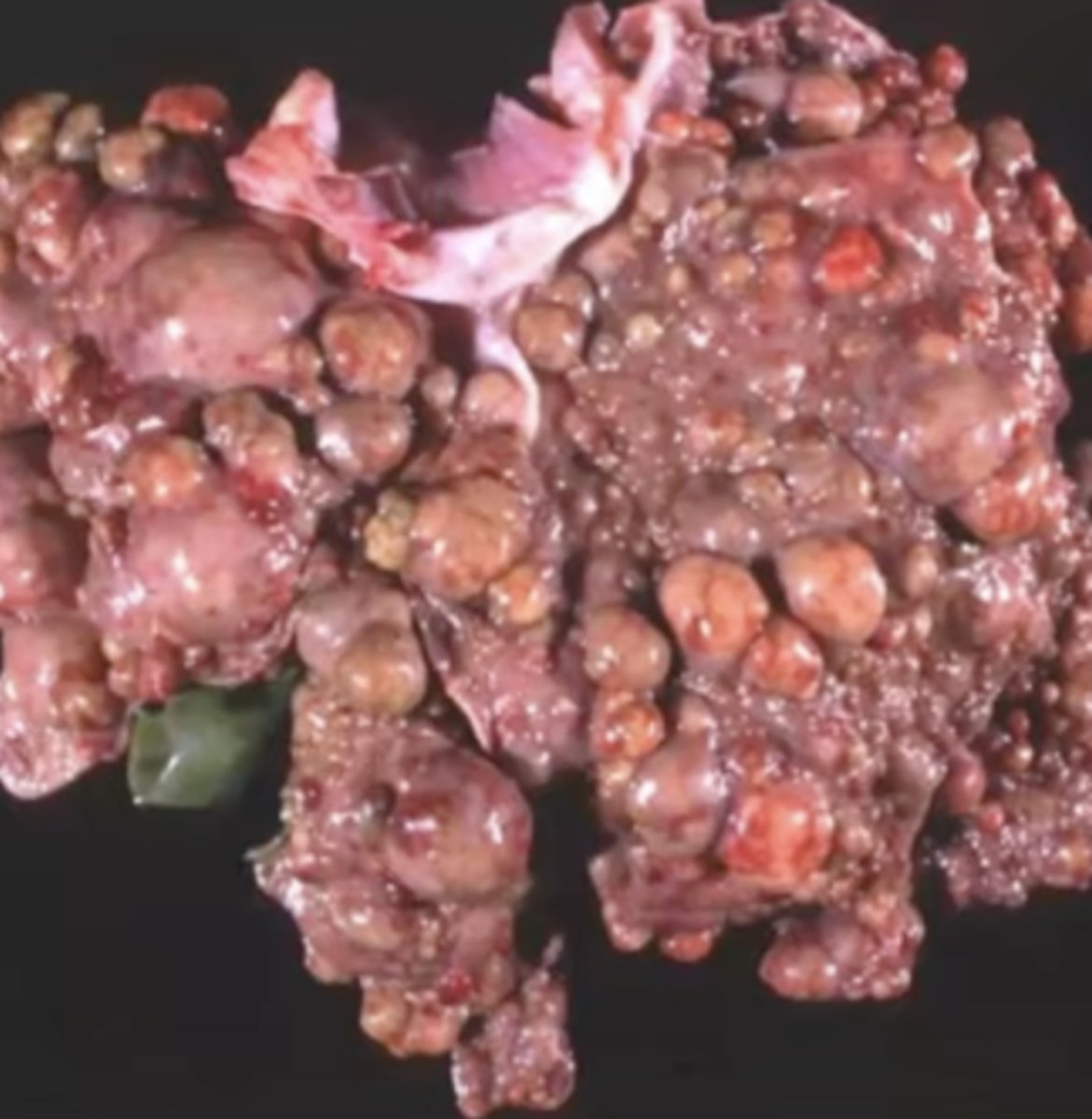
What has caused this gross appearance of this dog liver
Cirrhosis caused by long term exposure to toxic substances
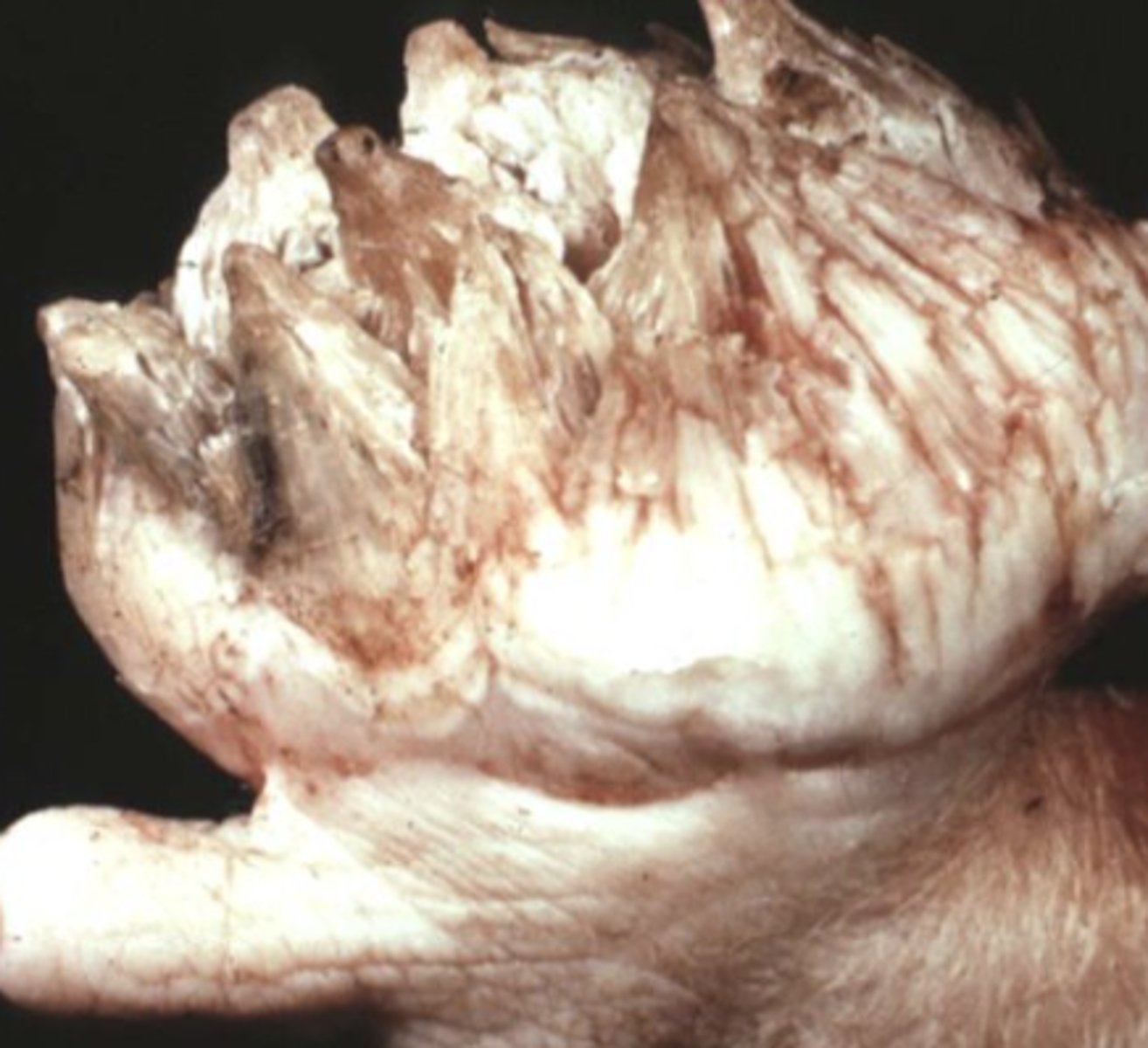
What kind of tumor is this?
Papilloma
-benign epithelial neoplasm
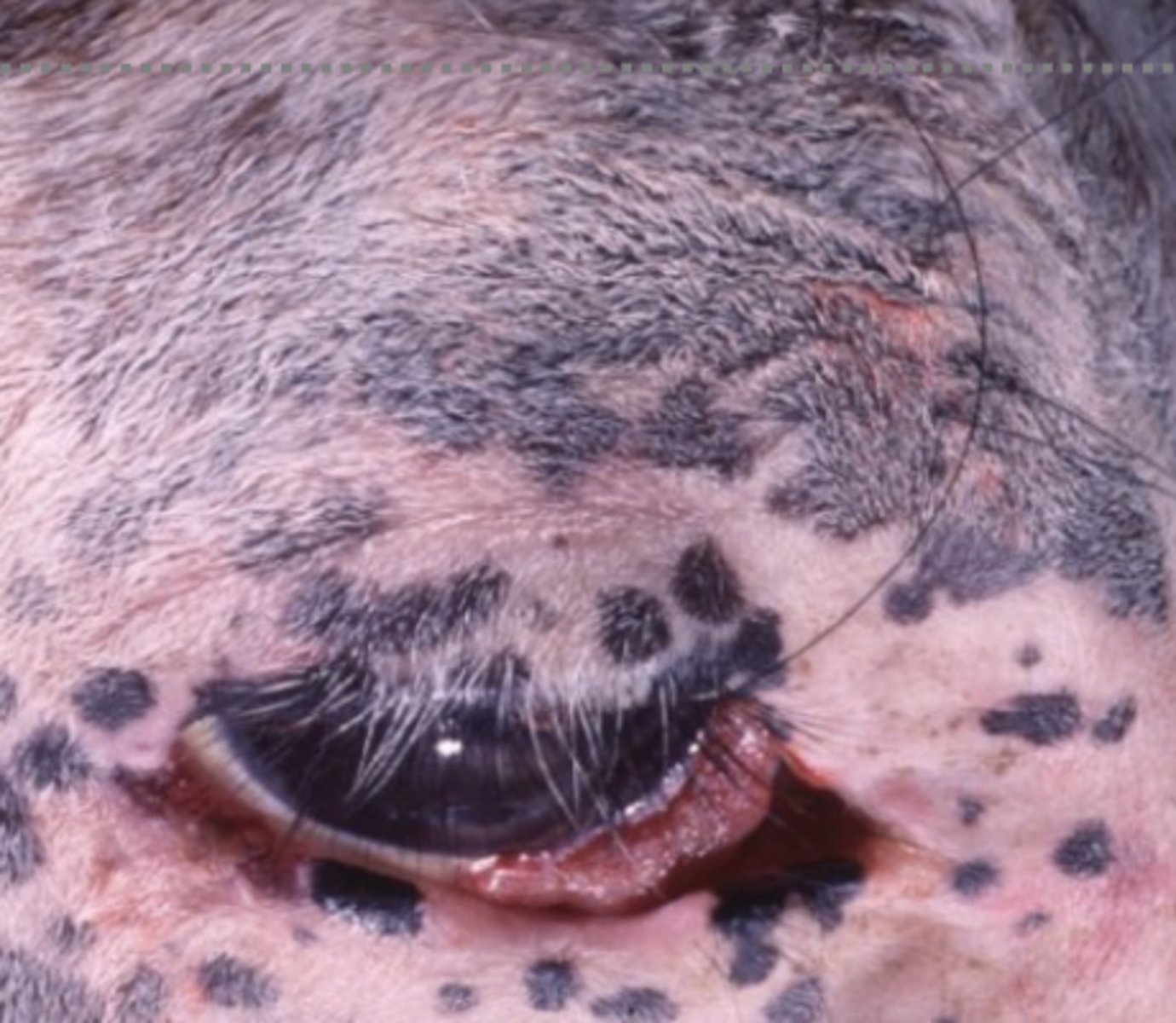
What kind of tumor is this?
Squamous cell carcinoma
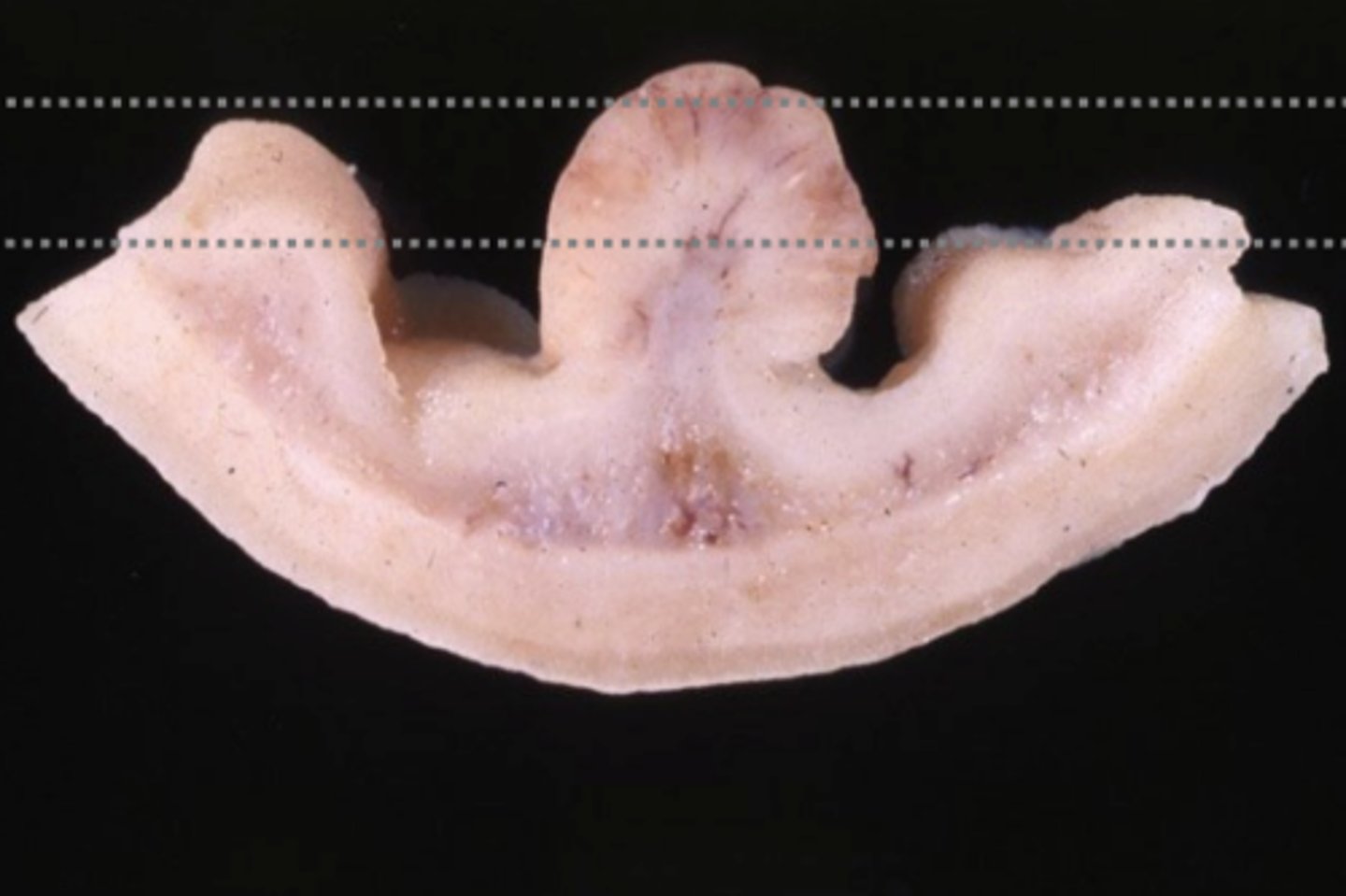
What kind of tumor is this?
Polyp
-has a steam
-benign epithelail tumor projecting from mucosal surface
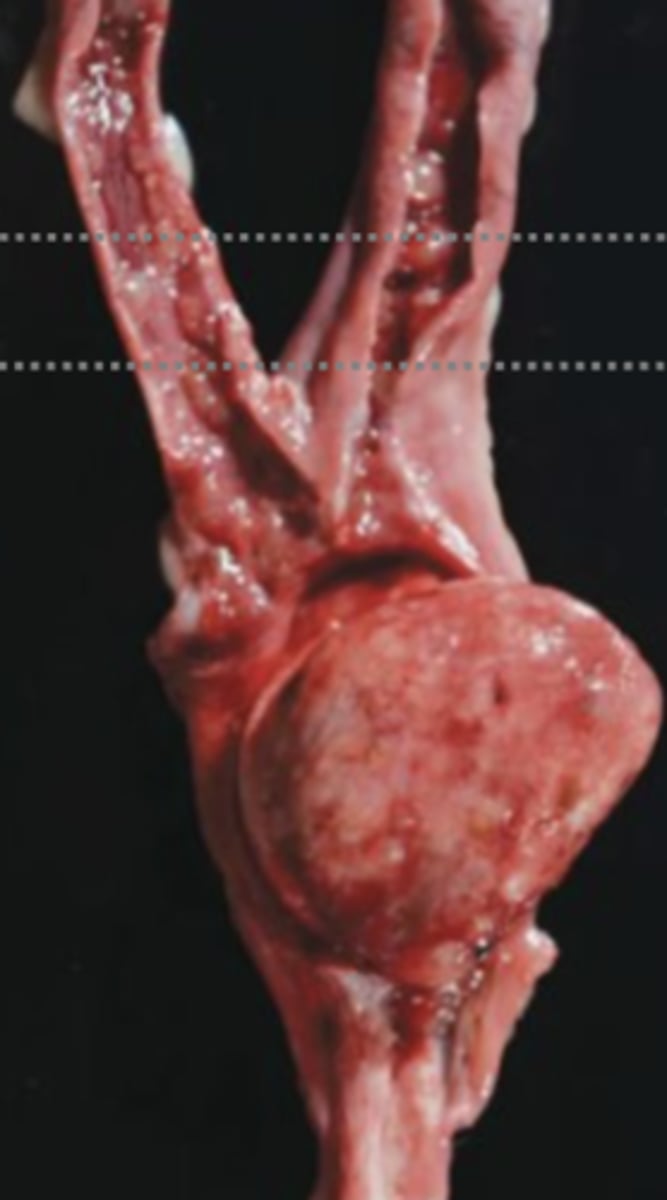
What kind of tumor is this?
polyp from canine uterus
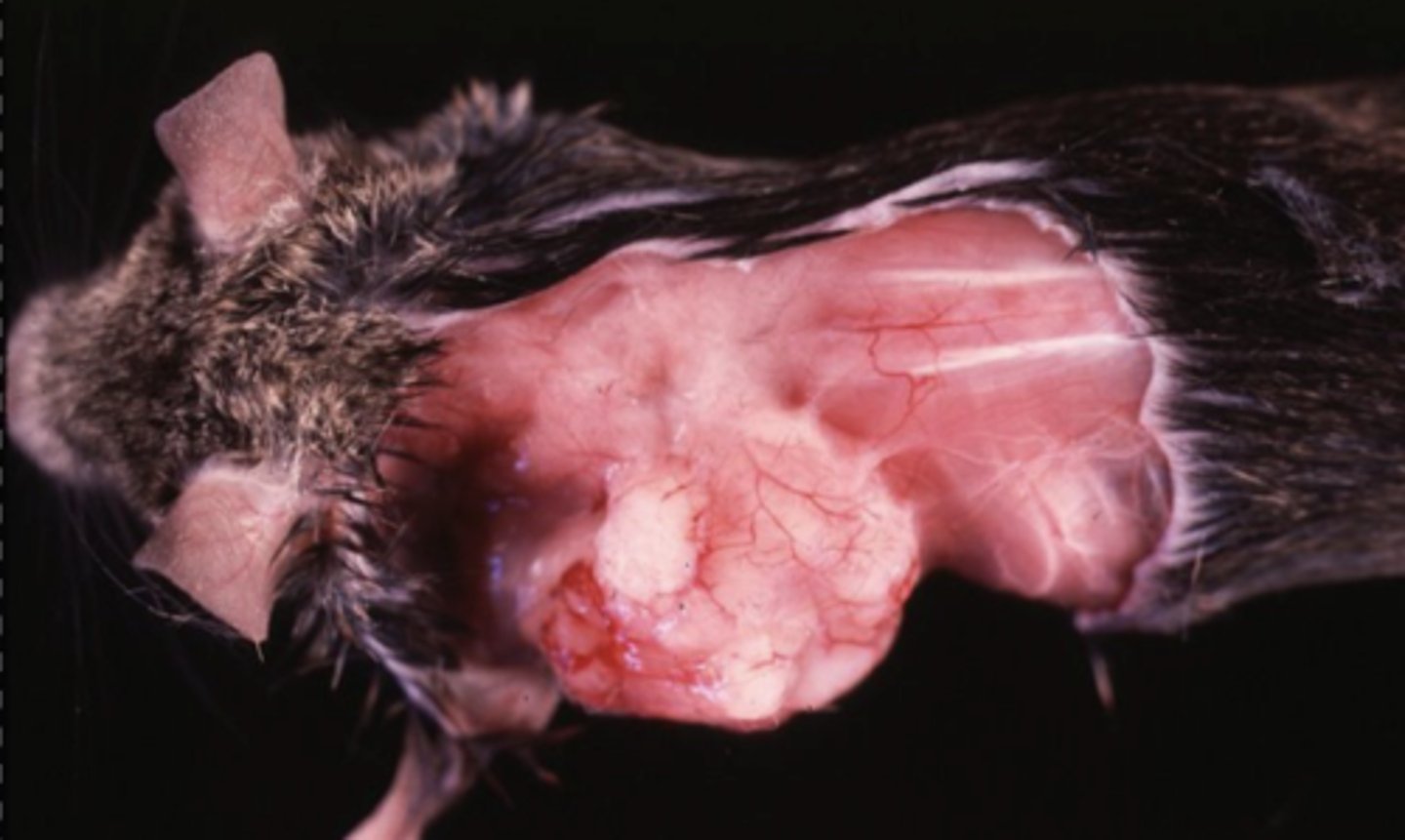
What kind of tumor is this?
adenocarcinoma
-malignant tumor of epithelial origin
-tubular patterns on histopath
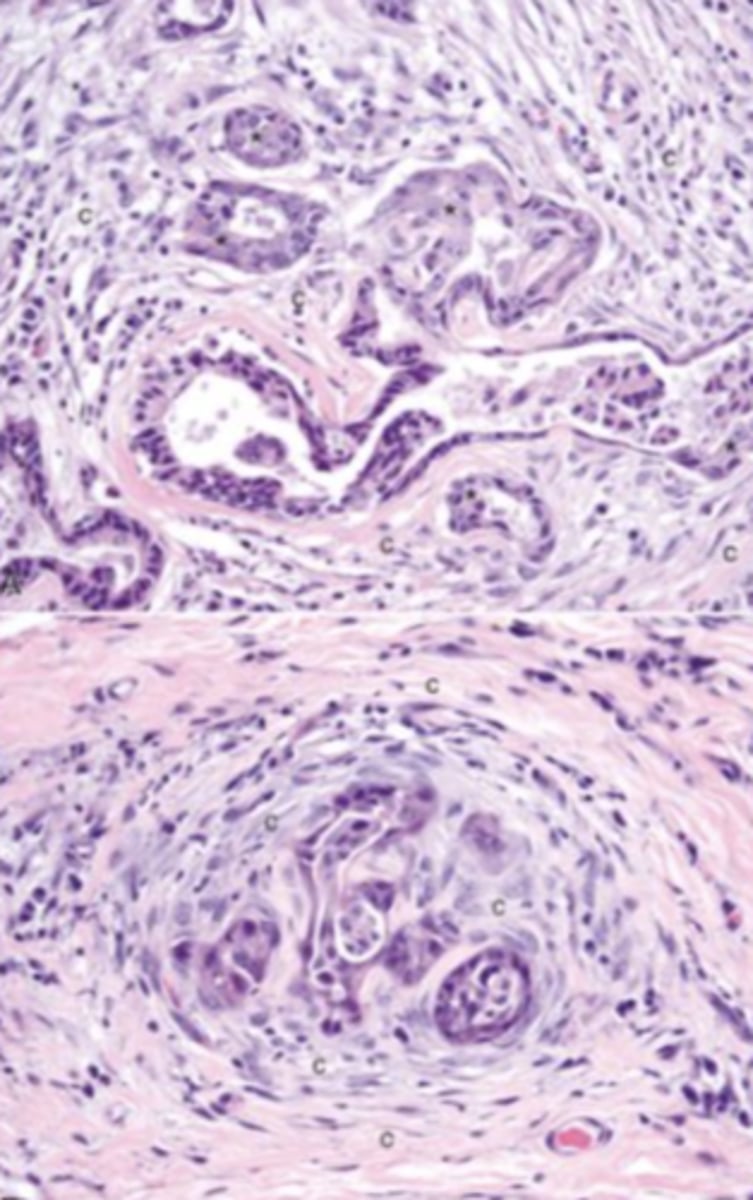
What type of response is produced by this carcinoma?
schirrous response
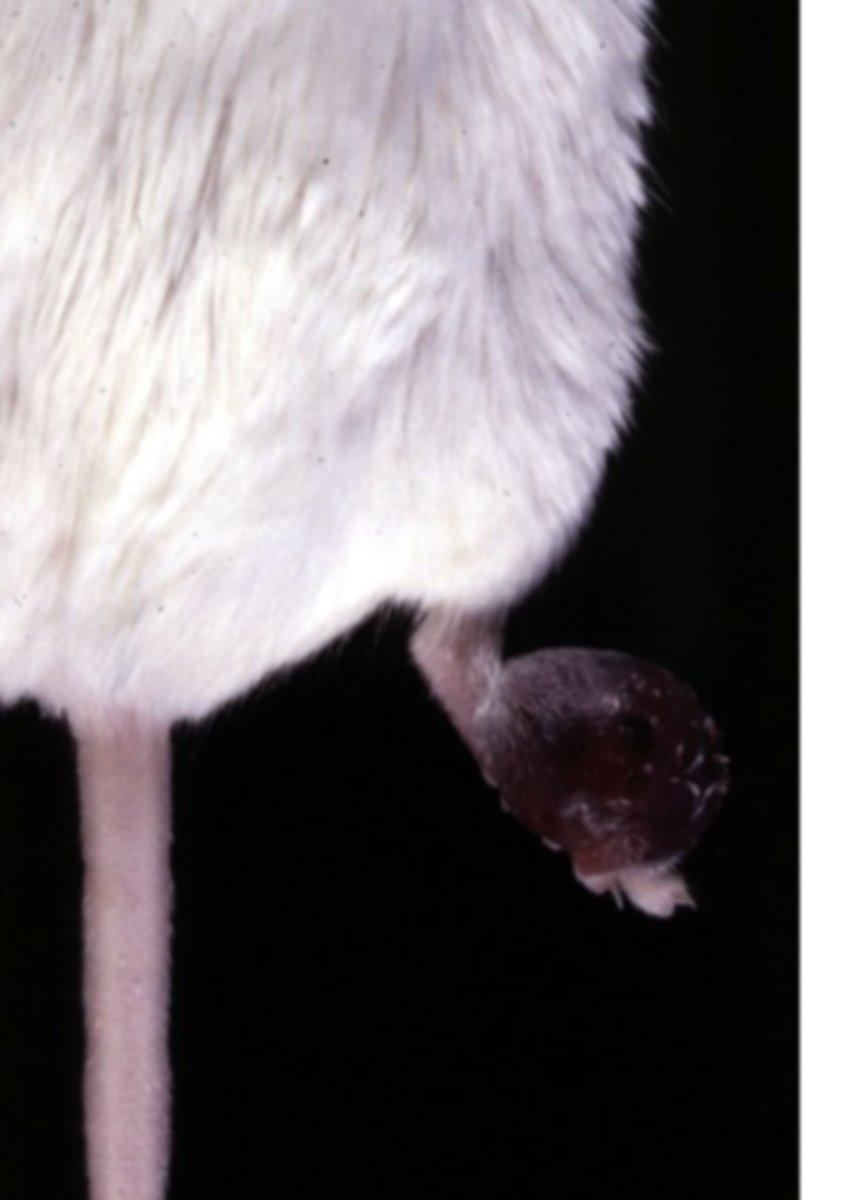
What kind of tumor is this?
Hemangioma
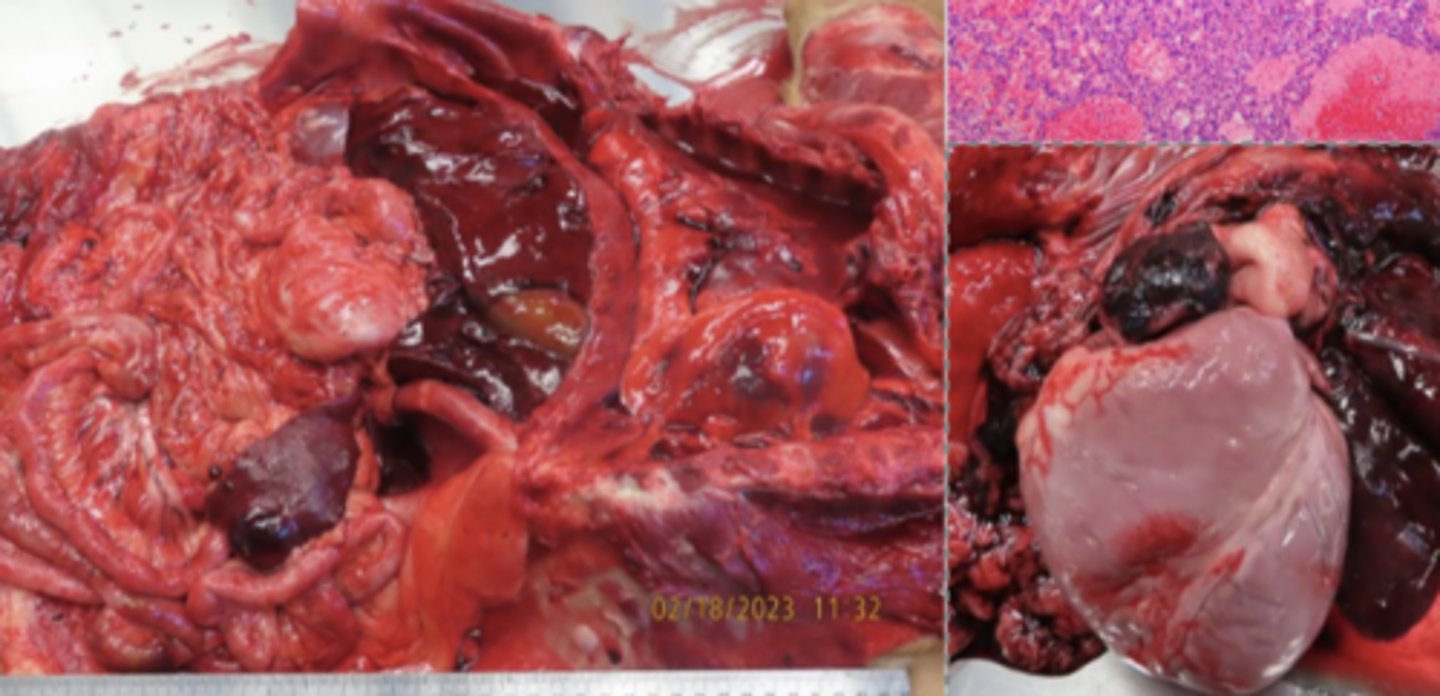
What kind of tumor is this?
Hemiangiosarcoma
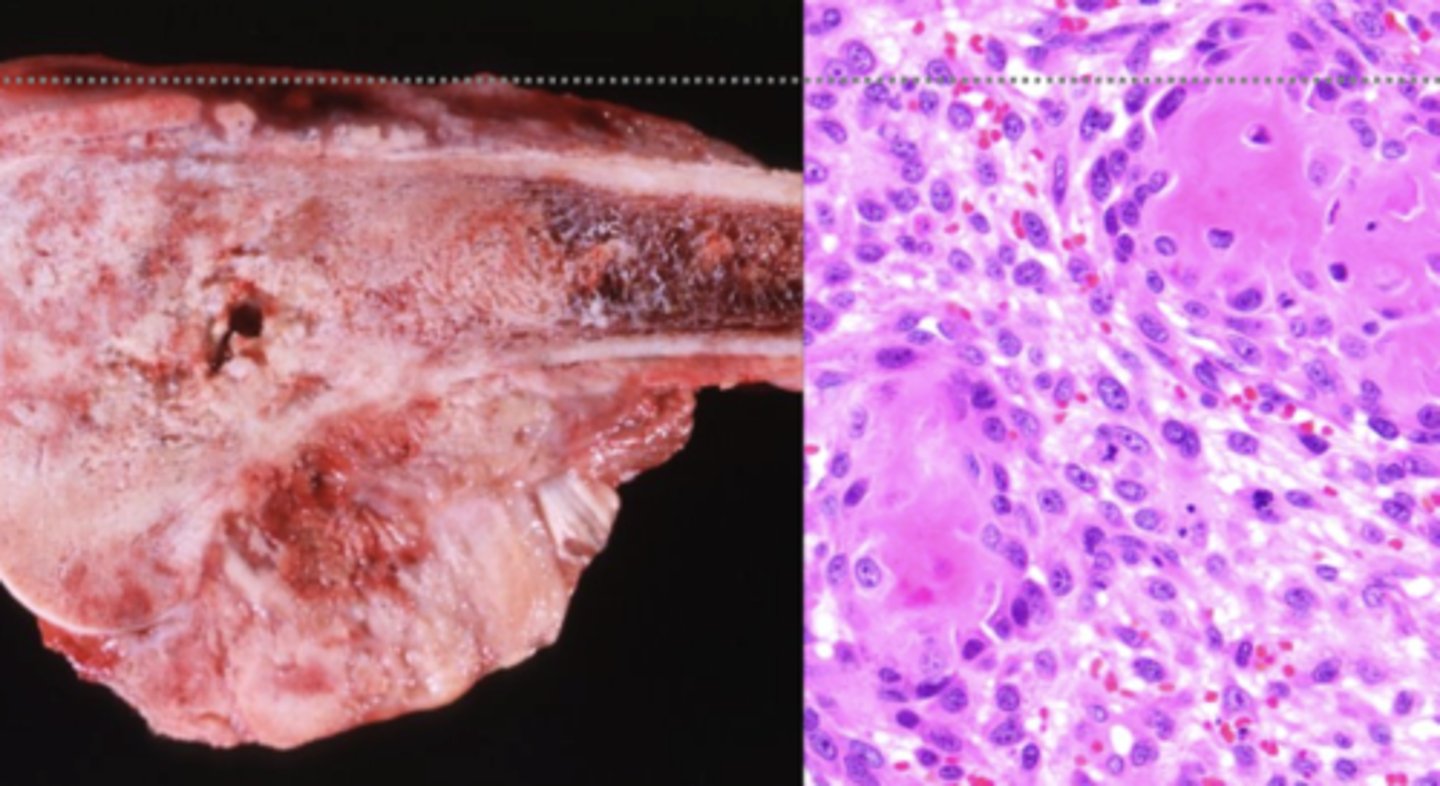
What kind of tumor is this?
Osteosarcoma
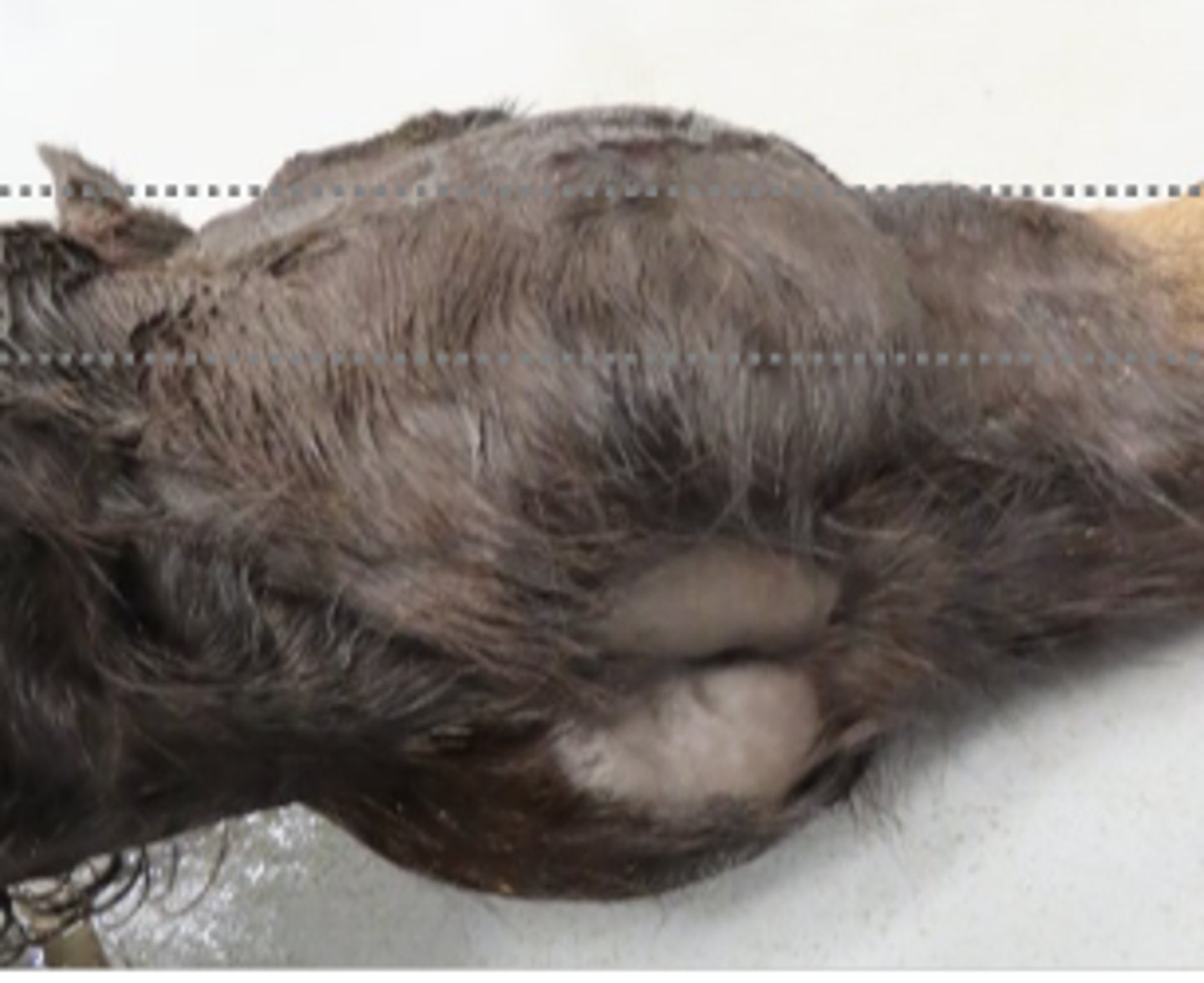
What kind of tumor is this?
Lymphoma
-lymphocytic tumor originating in the peripheral tissues
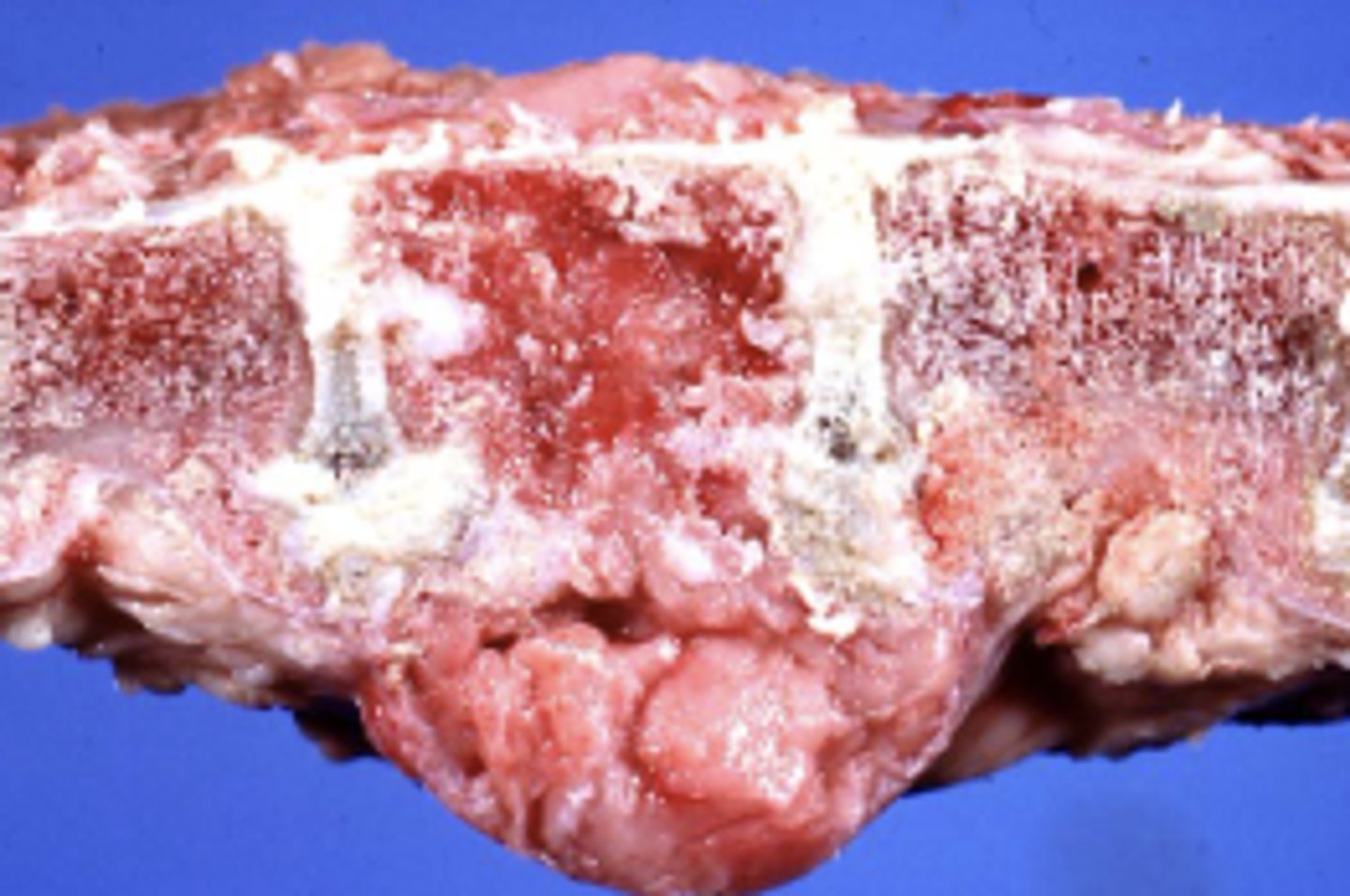
What kind of tumor is this?
Multiple myeloma
-plasma cell infilitrate
-hypercalemia
-osetolytic bone lesions
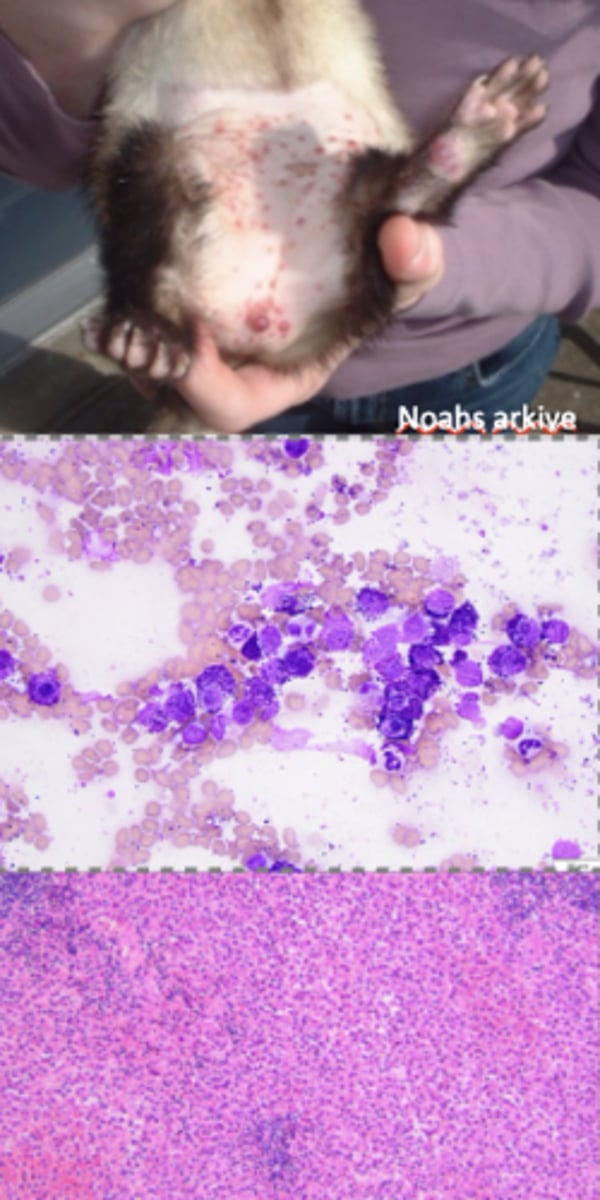
What kind of round cell tumor is this?
Mast cell tumor
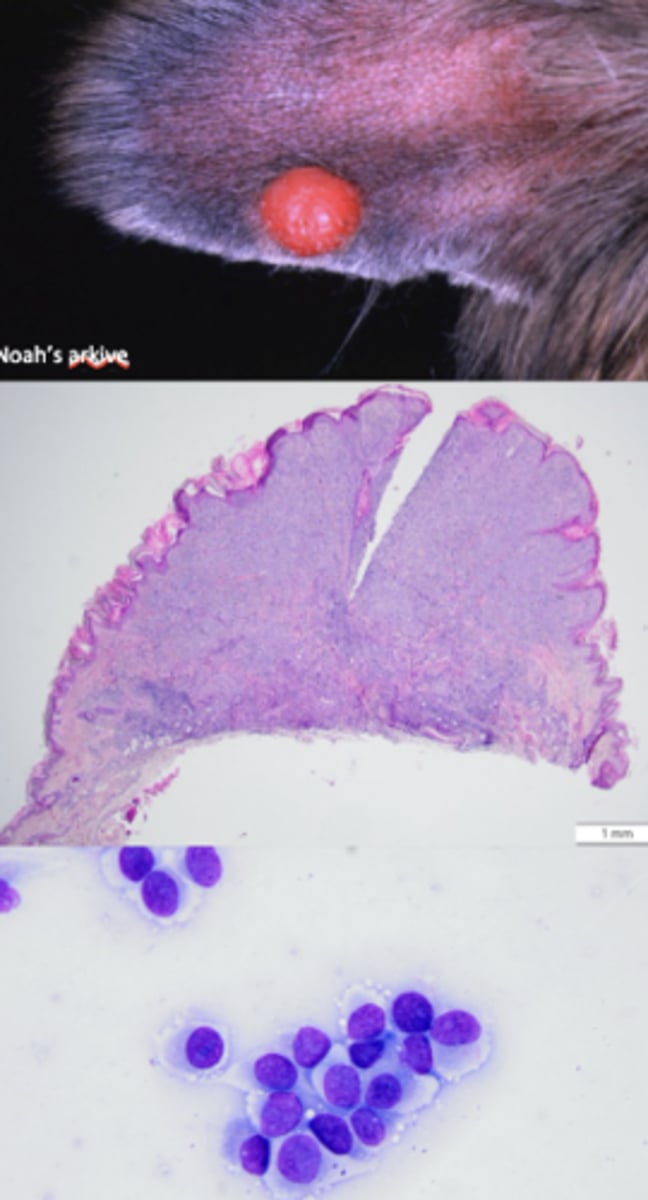
What kind of round cell tumor is this?
Histiocytoma
-button tumor
- caused by langhans cells
-will self regress
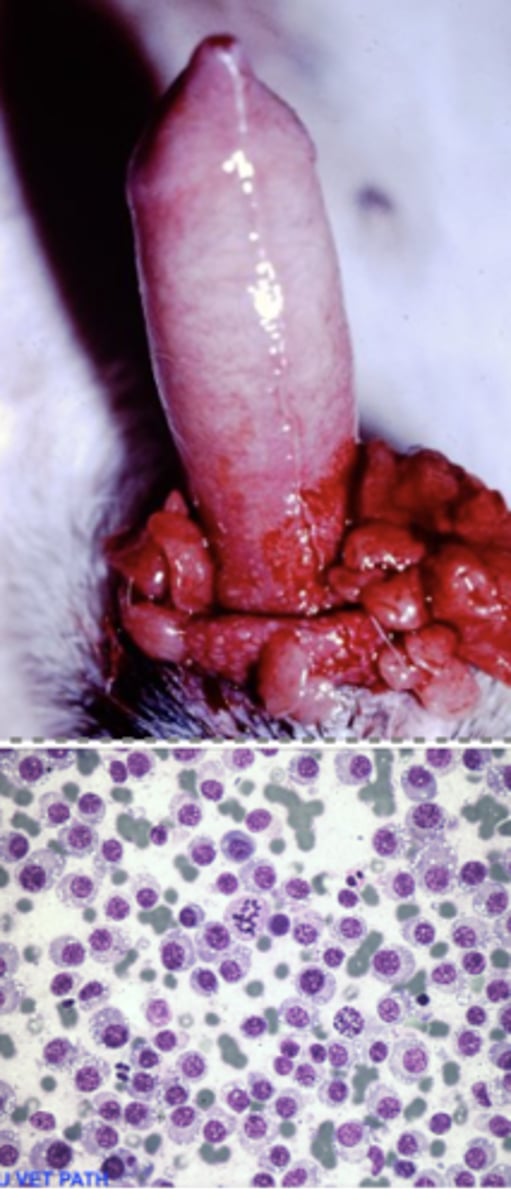
What kind of round cell tumor is this?
Transmissible Venereal Tumor (TVT)
-TRANSMISSIBLE tumor thru direct contact
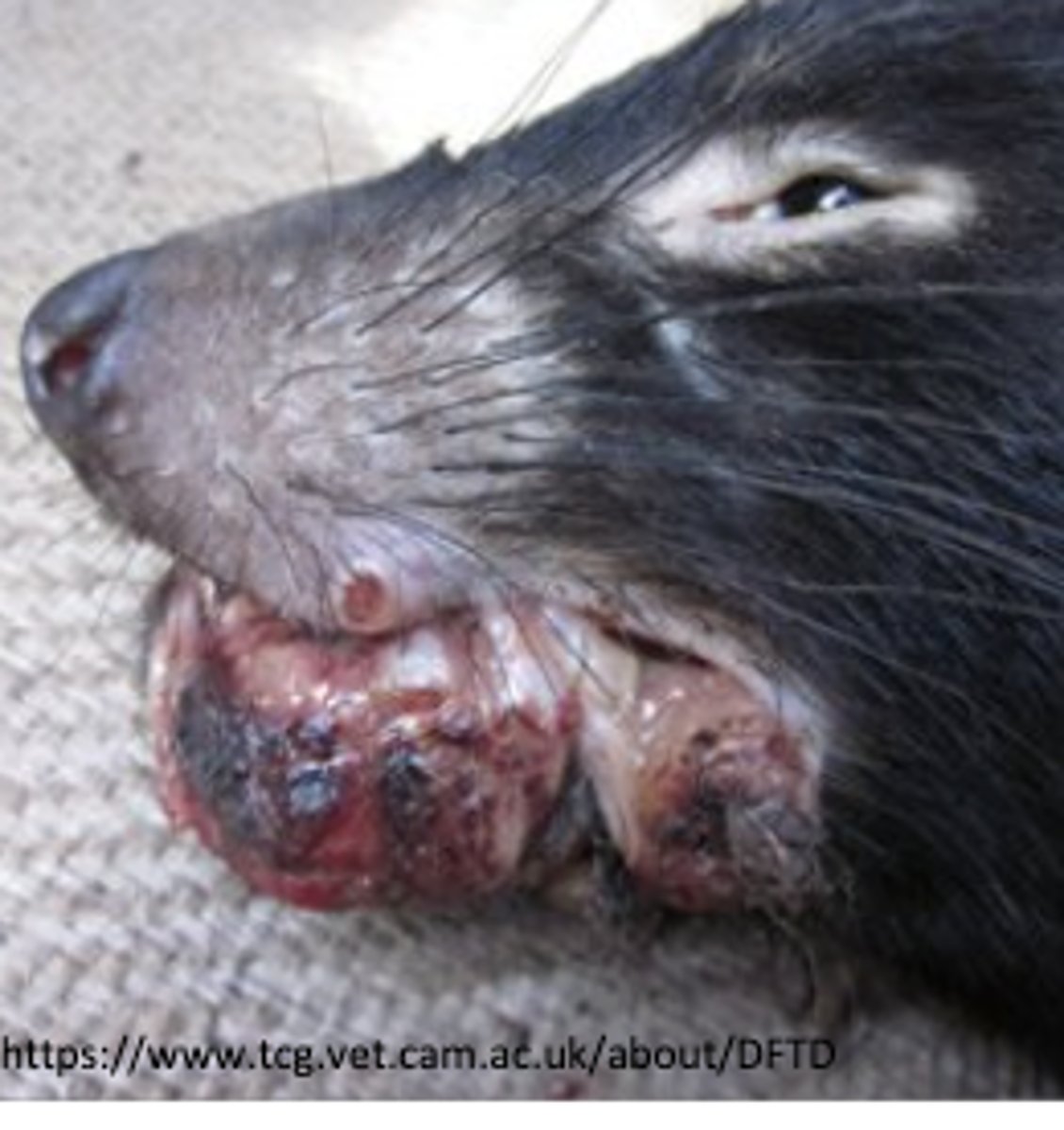
What kind of round cell tumor is this?
Tasmanian Devil Facial Tumor
-spread by biting
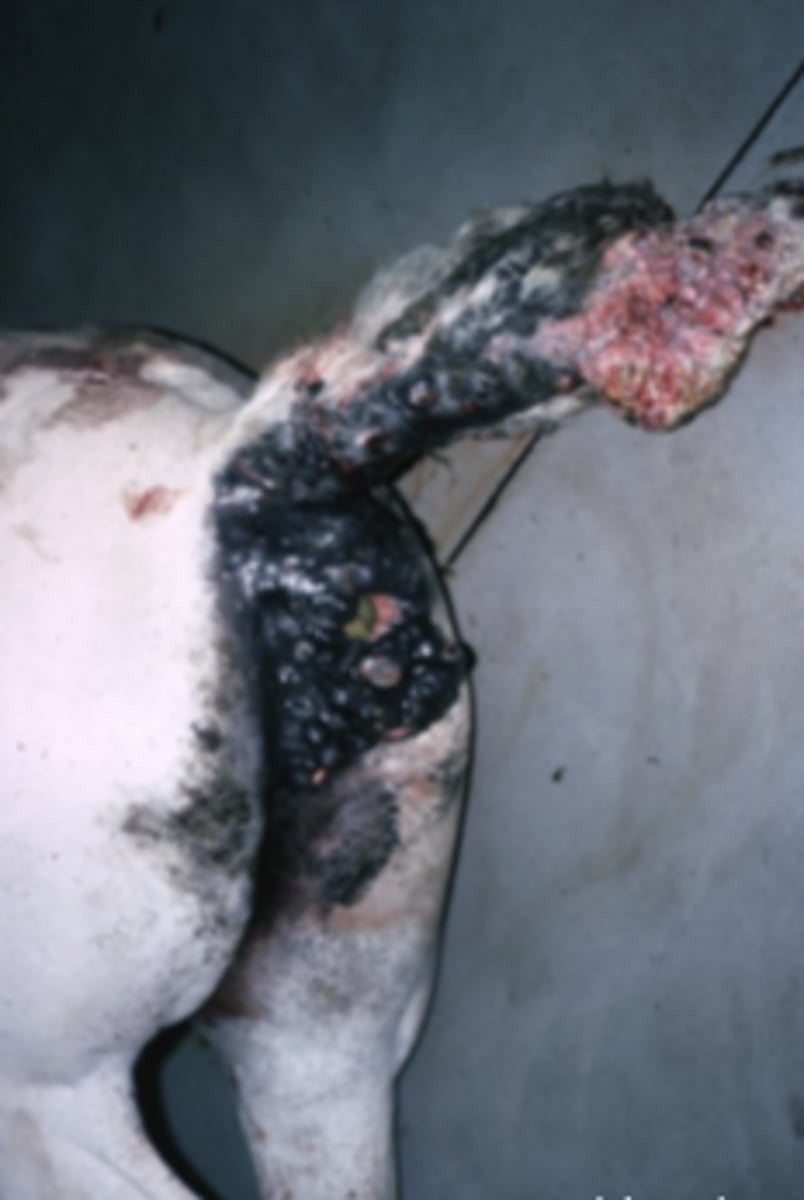
What kind of round cell tumor is this?
Neural Crest tumors
-derived from neural crest cells from neuroectoderm
-melanoma from melanocytes
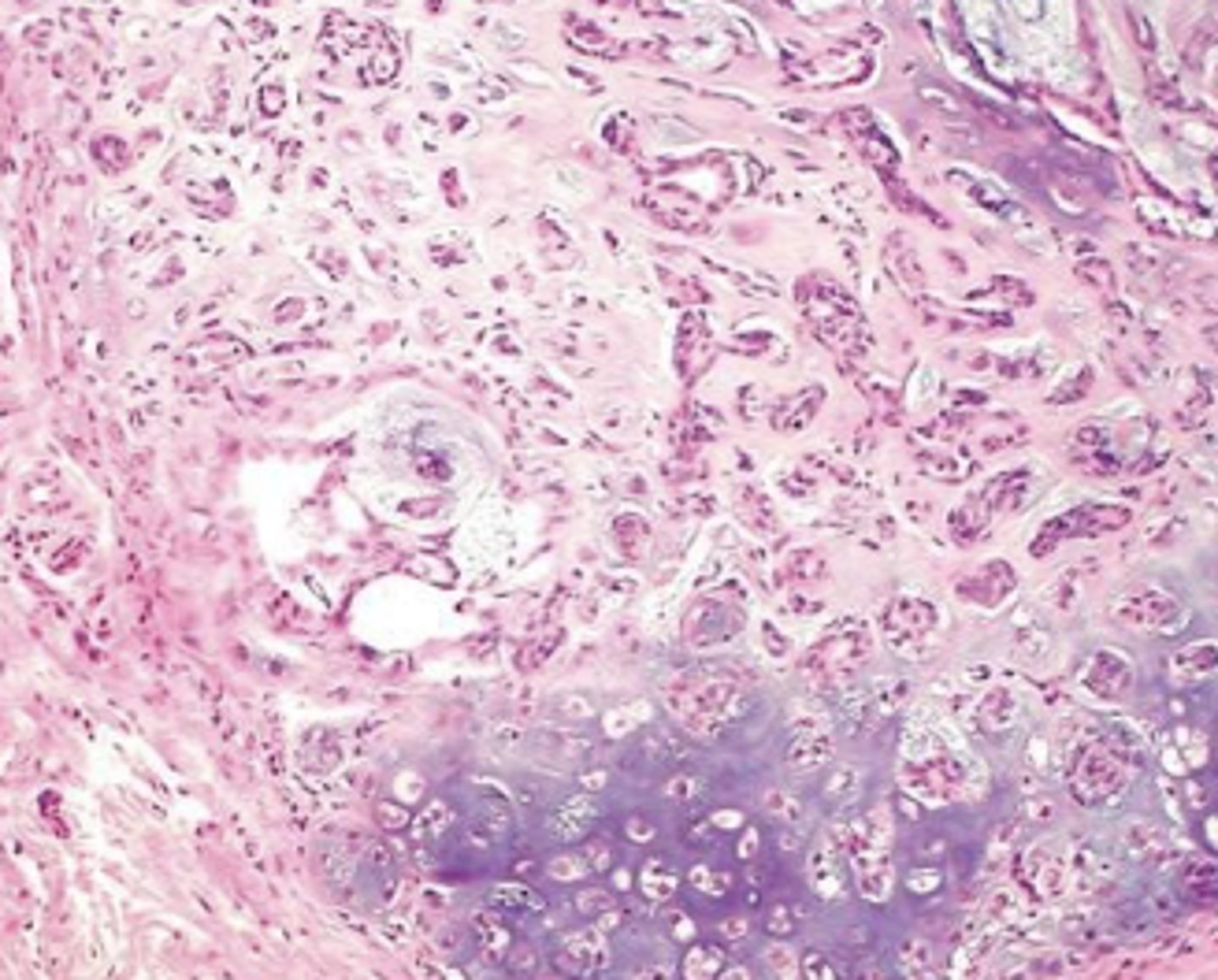
What kind of tumor is this?
Mixed tumor
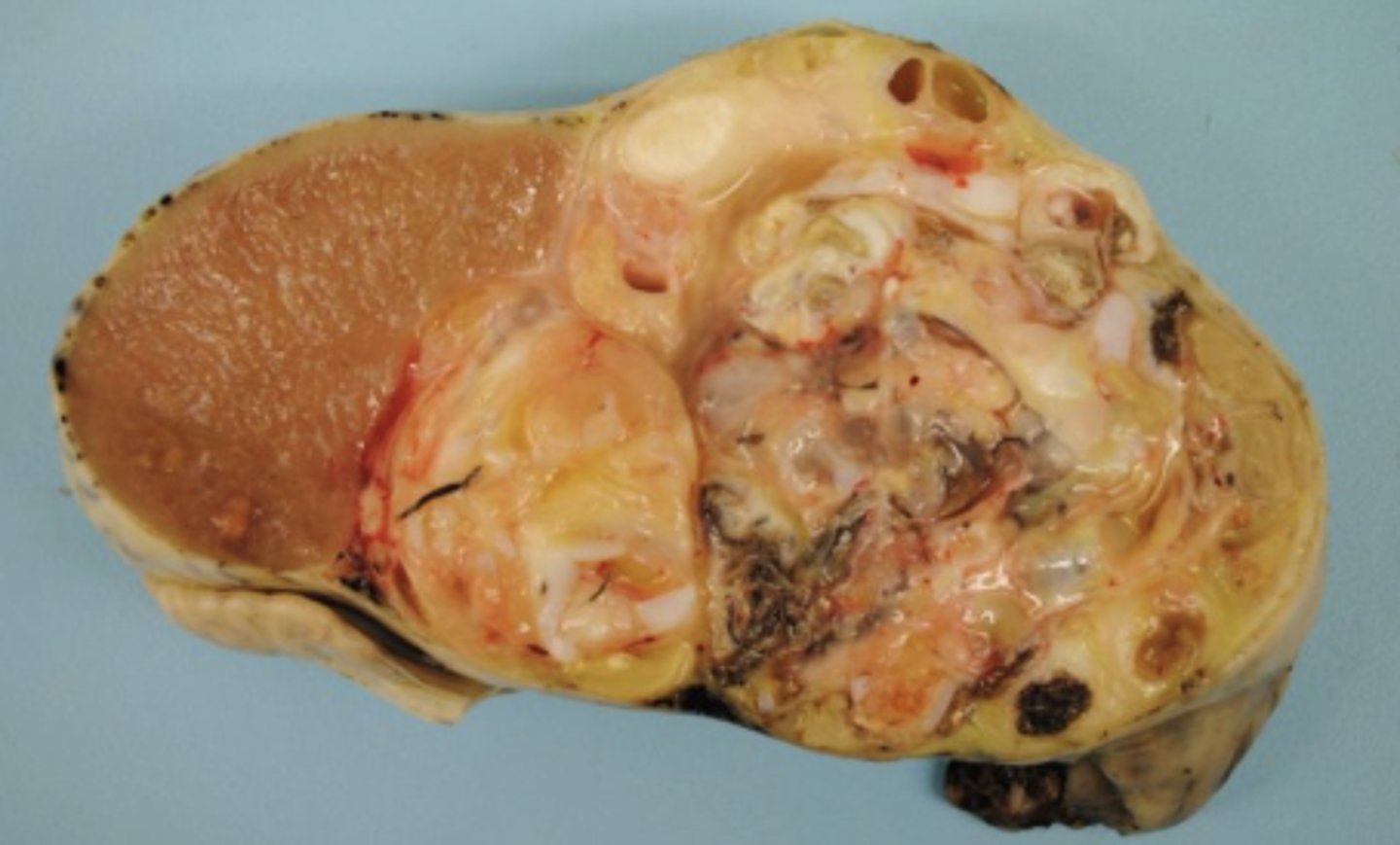
What kind of tumor is this?
Mixed tumor
-arise from totipotent germ cells
-can differentiate into variety of mature cell types
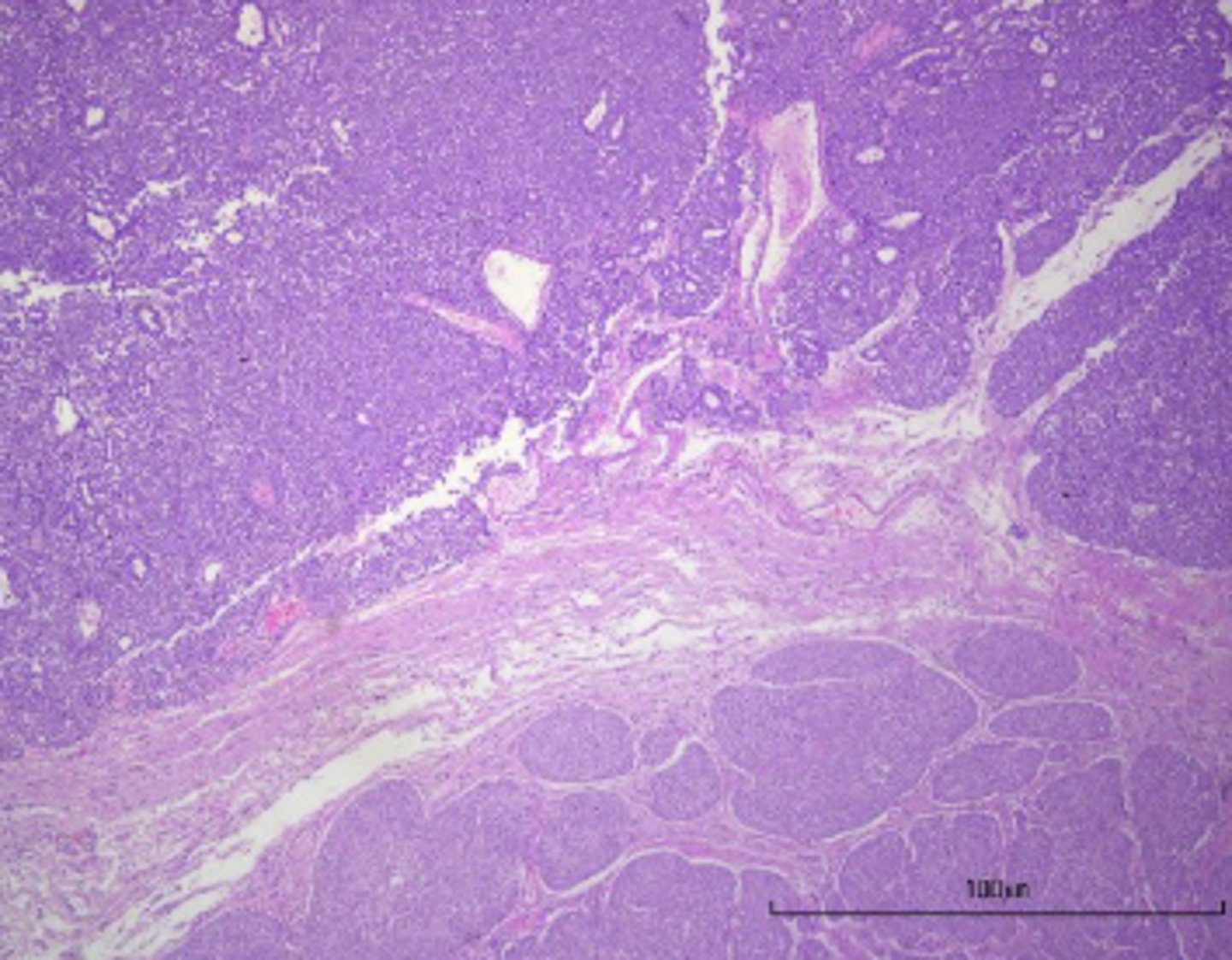
What kind of tumor is this?
Collison Tumor
-2 seperate tumor types COLLIDING in one spot
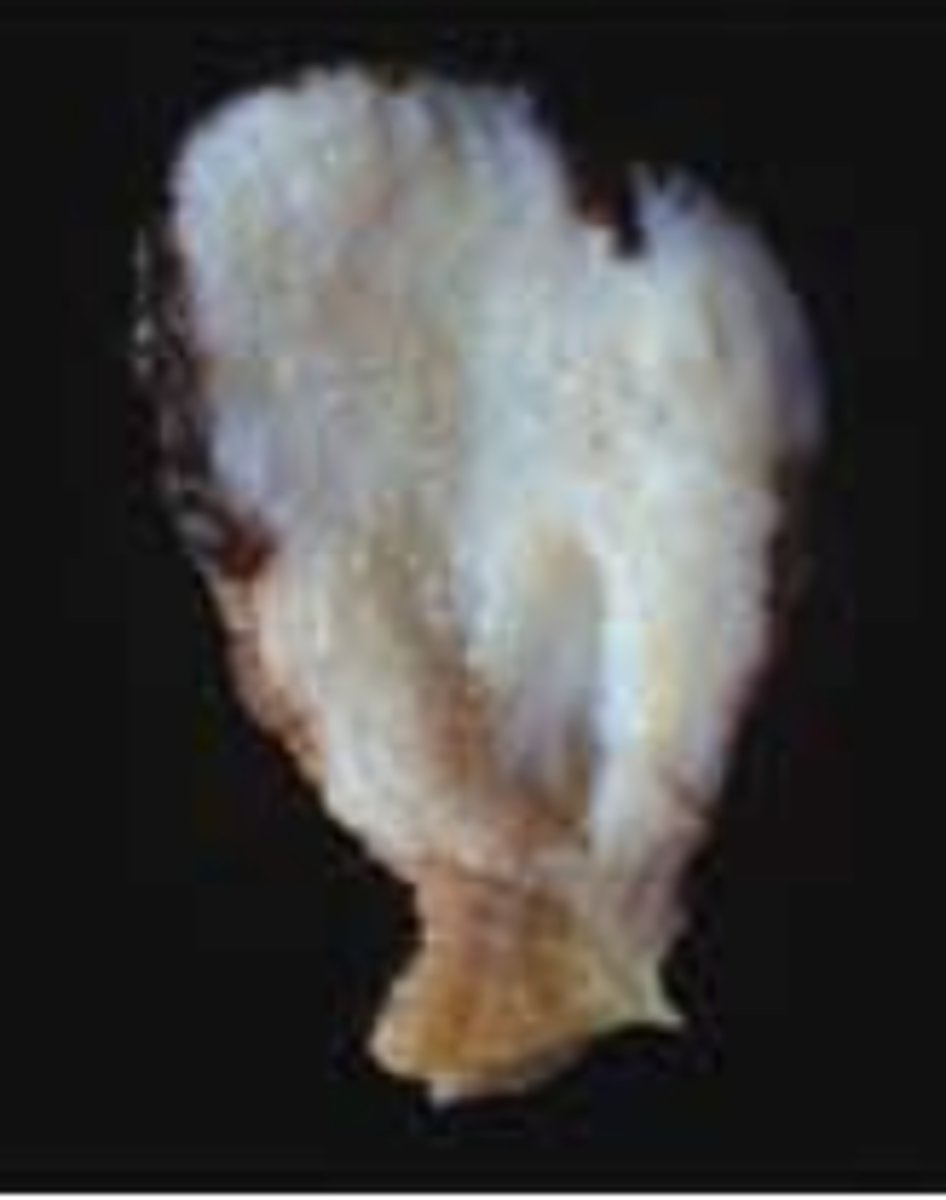
What kind of tumor is this?
Harmatoma
-excess of normal tissue
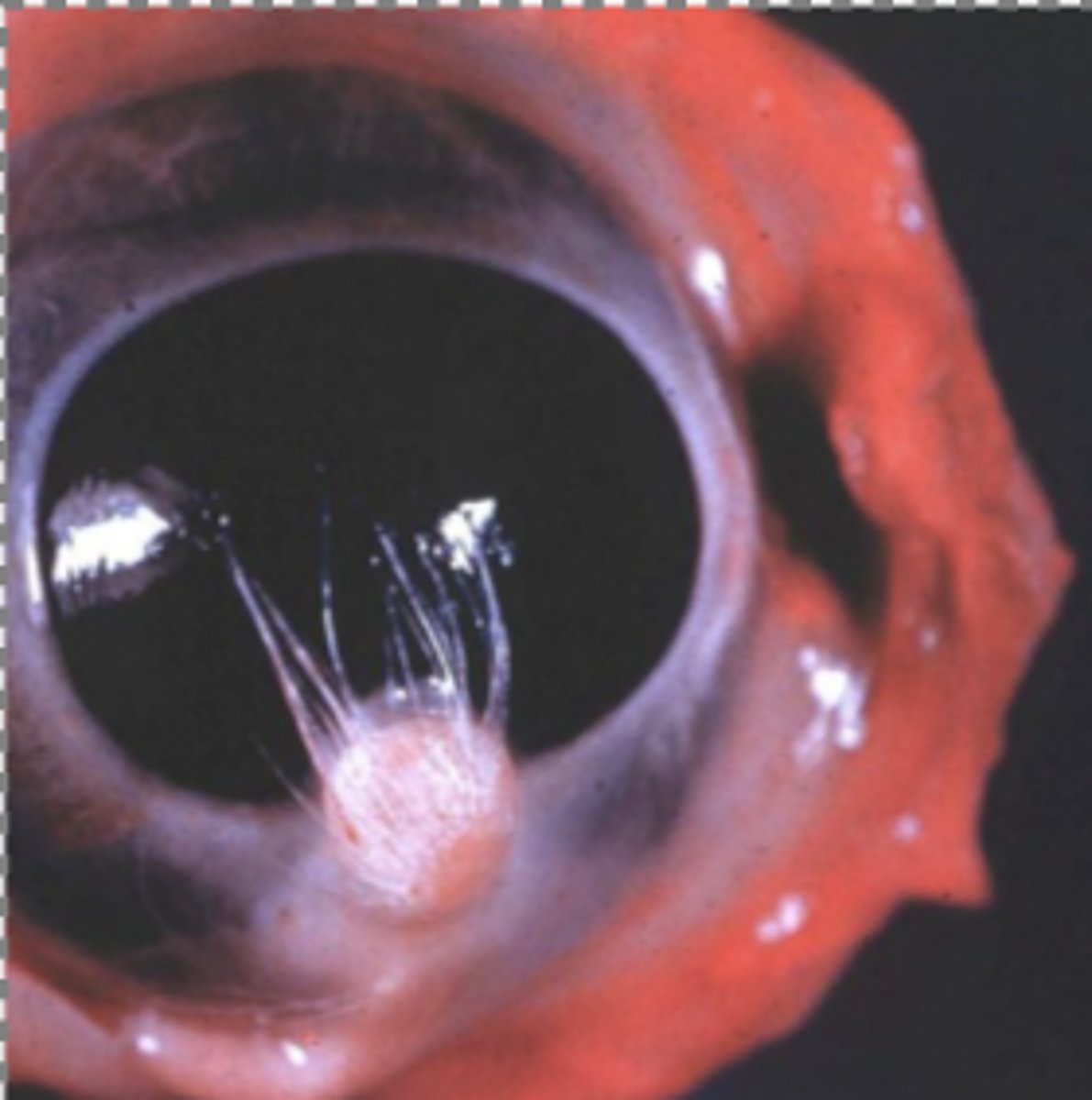
What kind of tumor is this?
Choriostoma
-normal tissue in an abnormal location
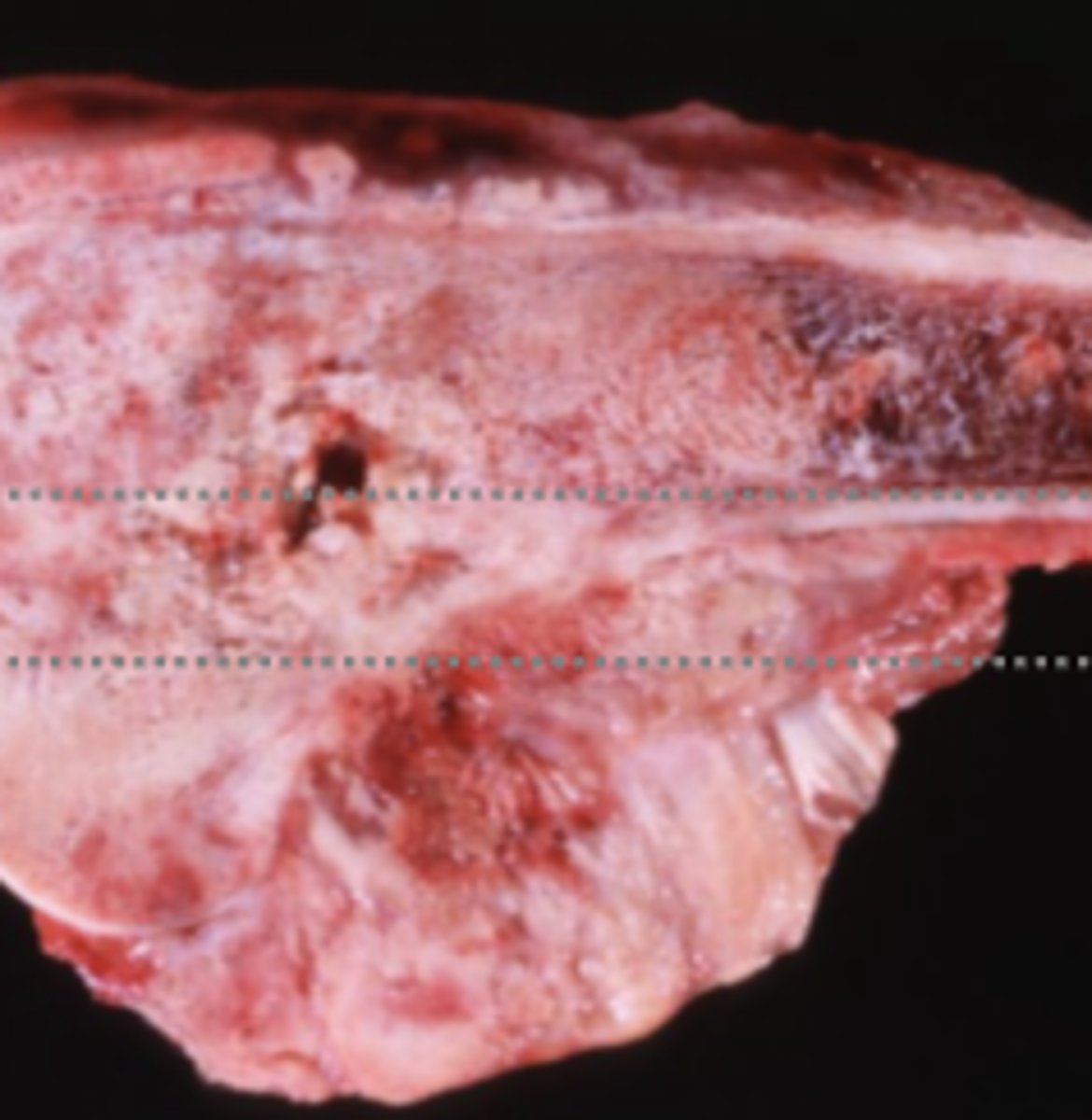
Is this a benign or malignant mass?
malignant
-poorly differentiated
-tissue origin unclear
-infiltrative growth !!
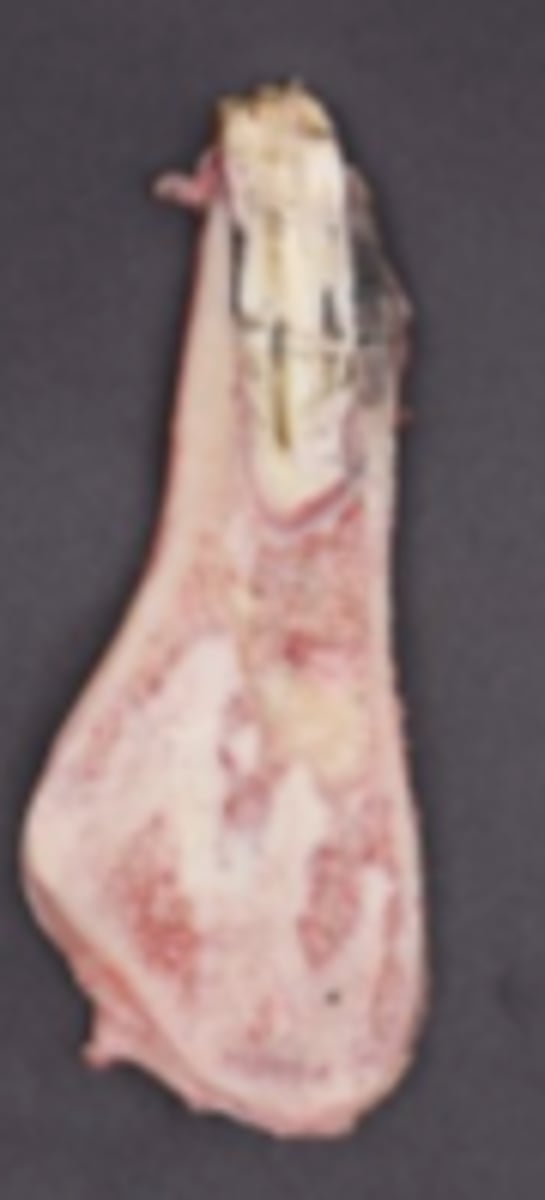
Is this a benign or malignant mass?
Benign
-well-differentiated
-little necrosis
-capsulated
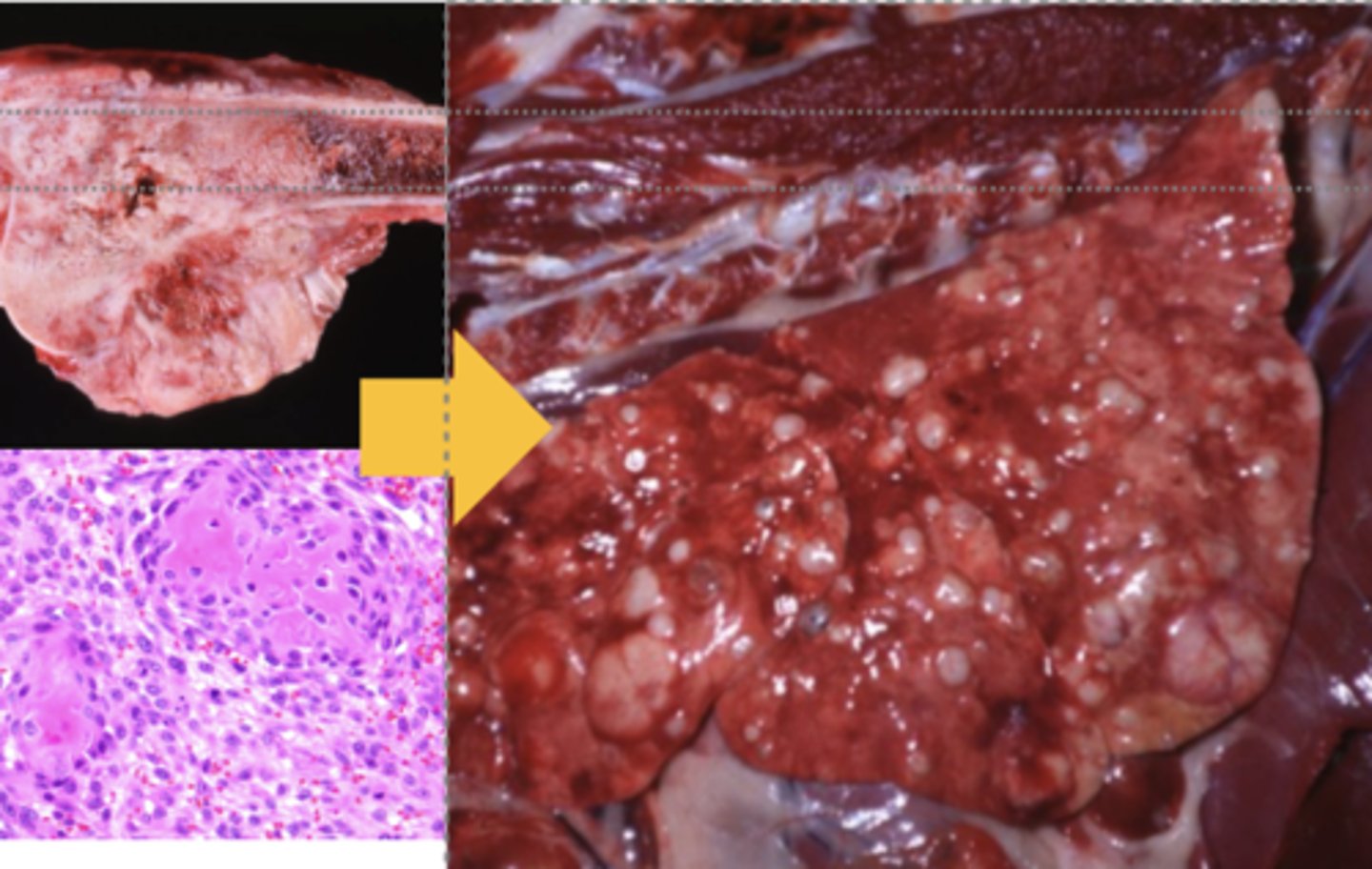
What kind of tumor is this? (broad category)
Metastatic tumor
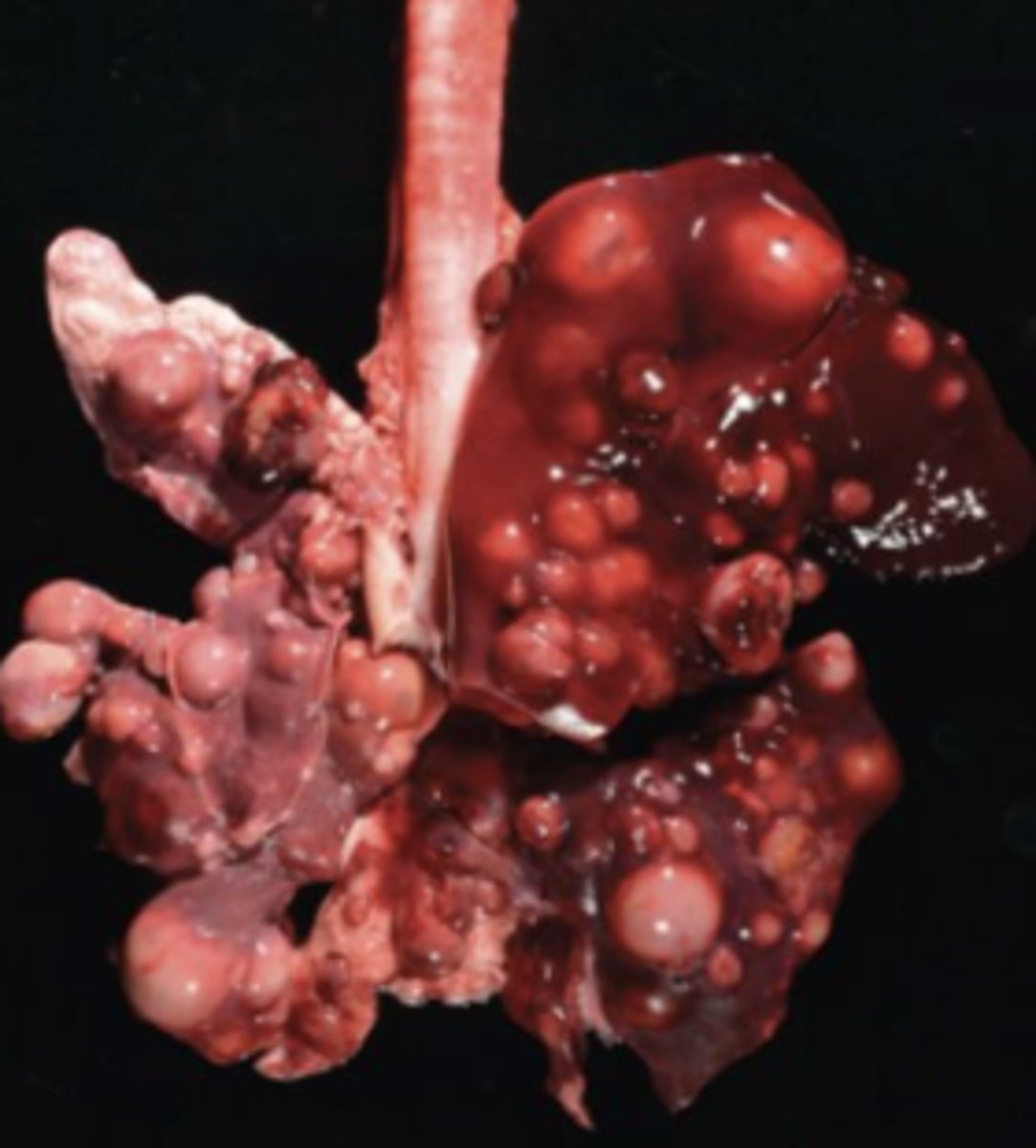
What kind of tumor is this? (broad category)
Hematogenous metastasis
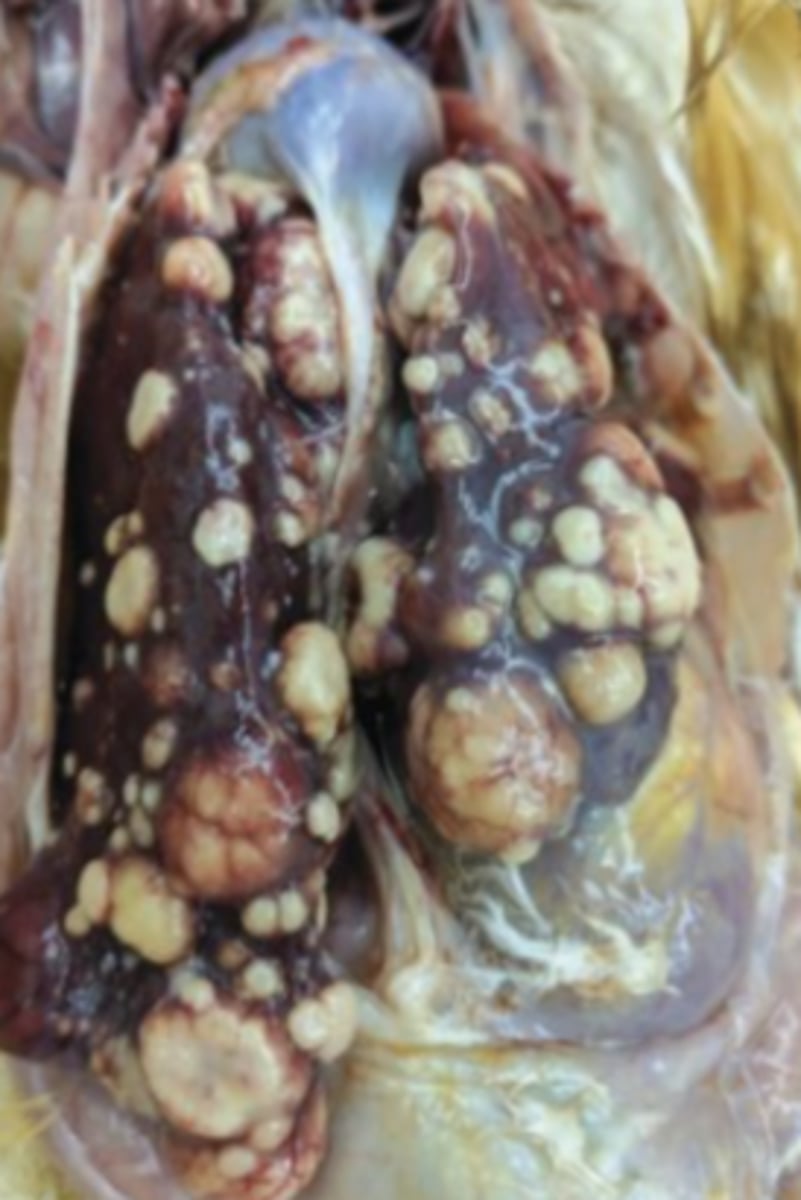
What kind of tumor is this? (broad category)
Transcolemic metastasis
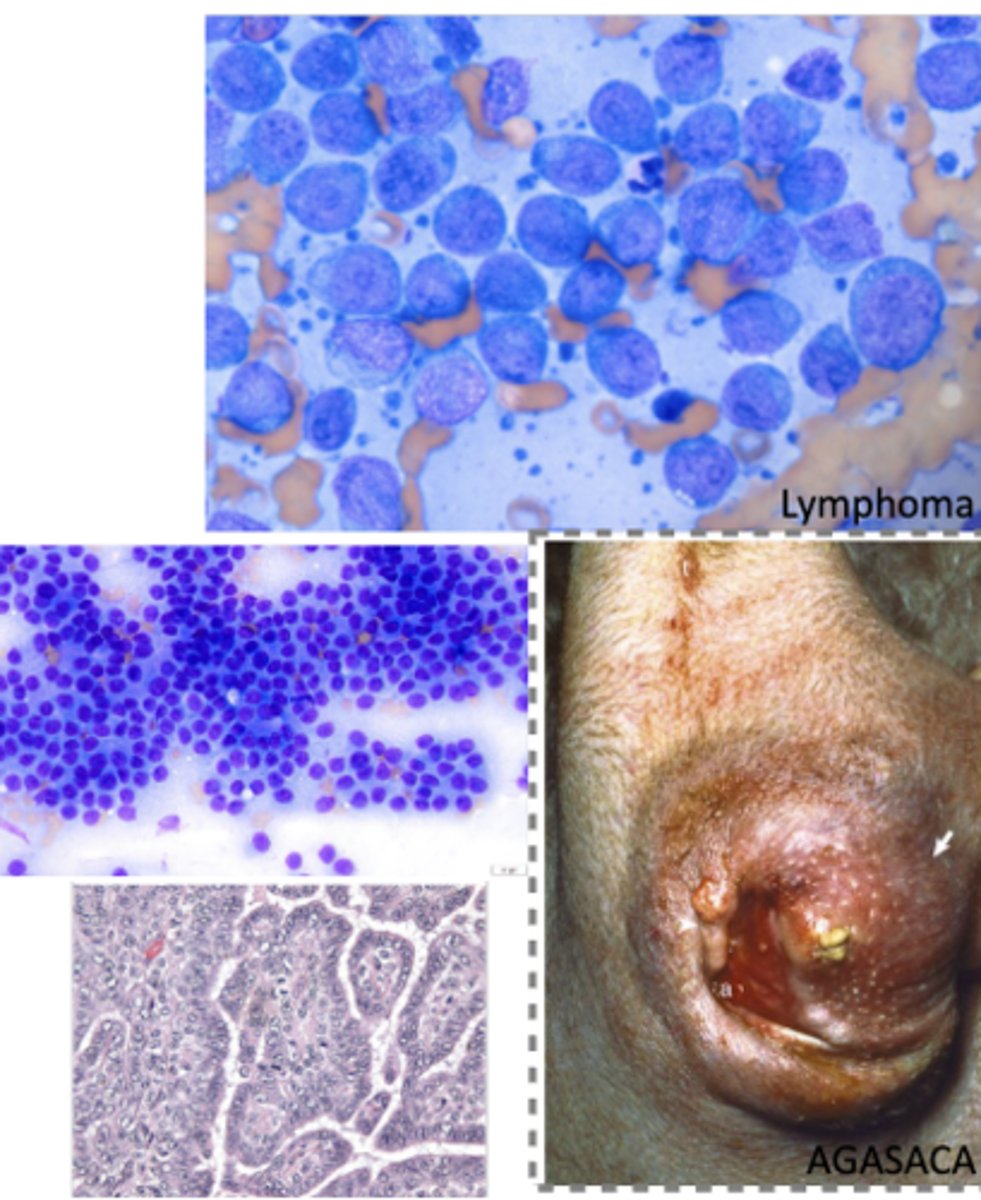
What kind of tumor is this? (broad category)
Humoral Hypercalcemia of Malignancy
-neoplasm assoicated with PTHrP production
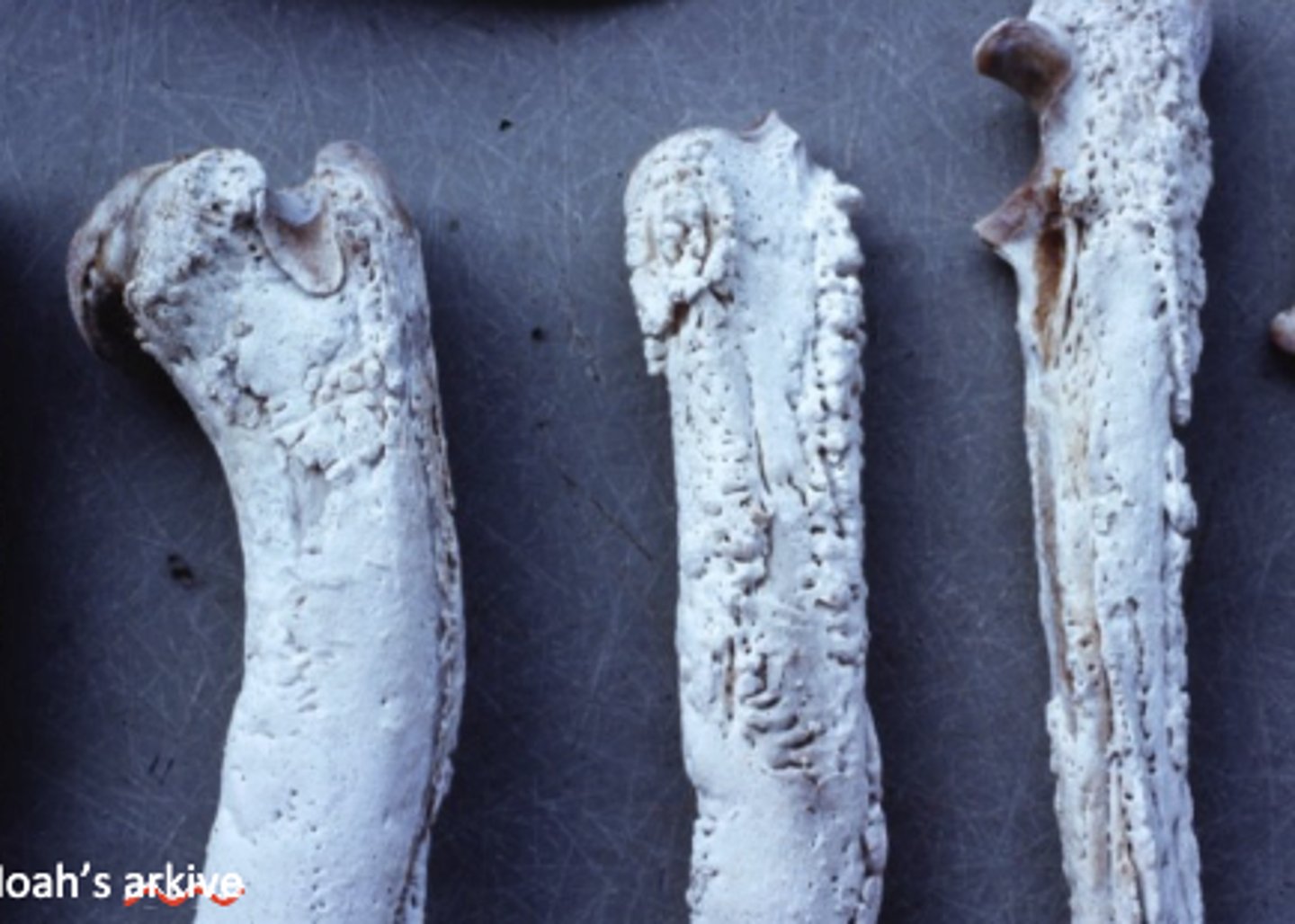
What kind of tumor is this? (broad category)
Hypertrophic Osteopathy
-due to periosteal new bone growth on the long bones
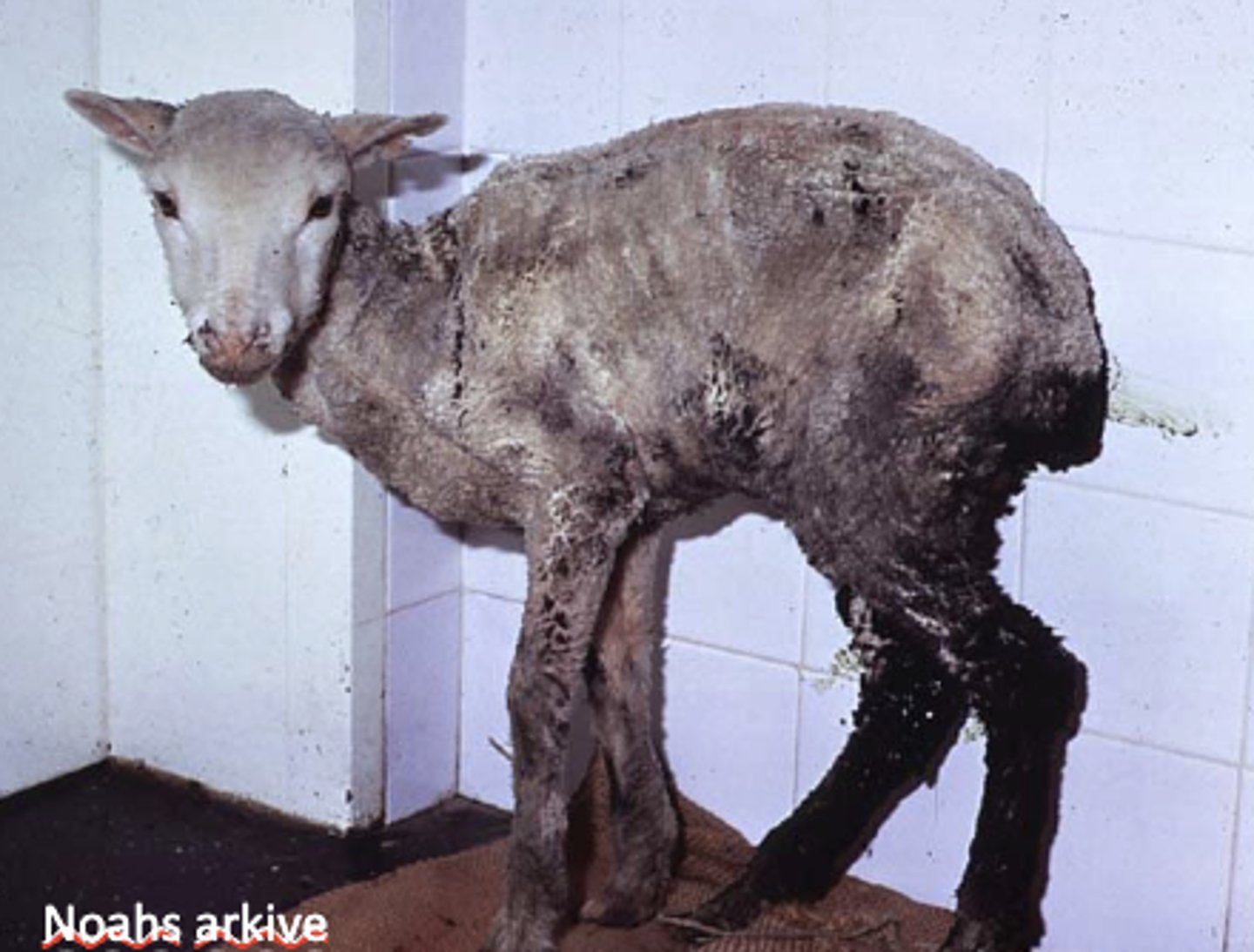
What has caused this poor body condition of this lamb?
Chachexia
-fat/muscle loss due to inflammatory states or cancer
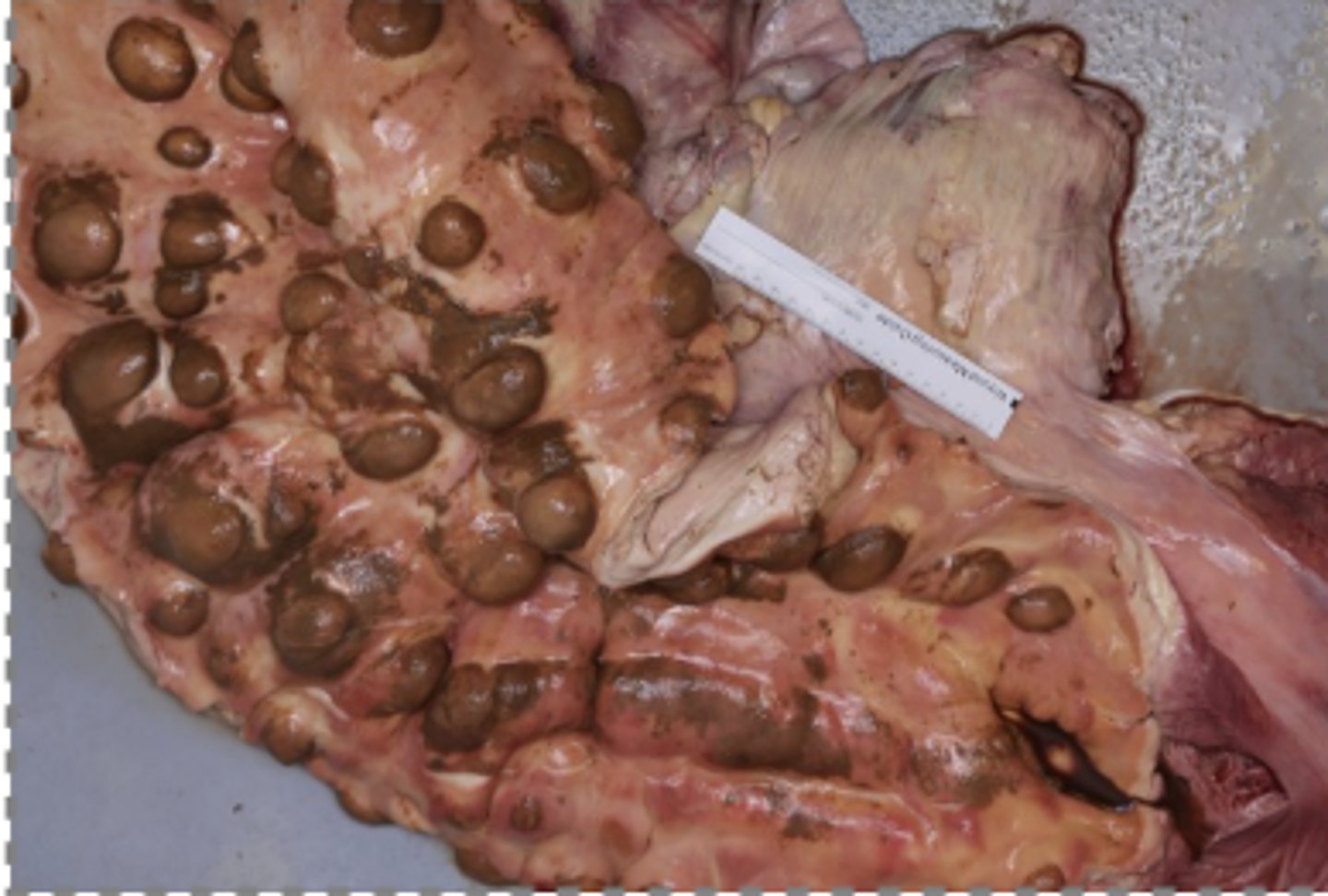
What has caused the gross appearance of this bovine liver?
BLV lymphoma
-HULAS = affacted areras
(heart, uterus, lymph node, abomasum, and spinal cord)
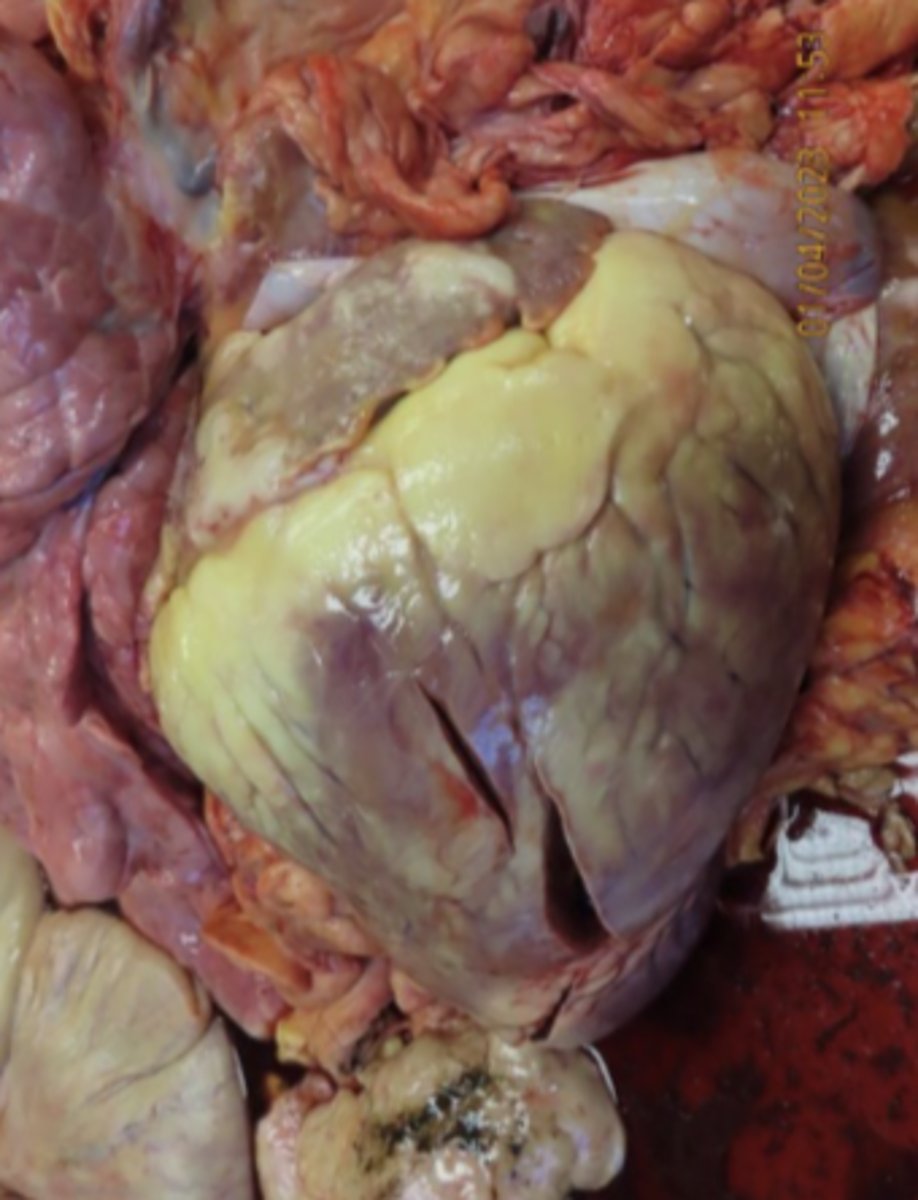
What has caused the gross appearance of this bovine heart?
BLV
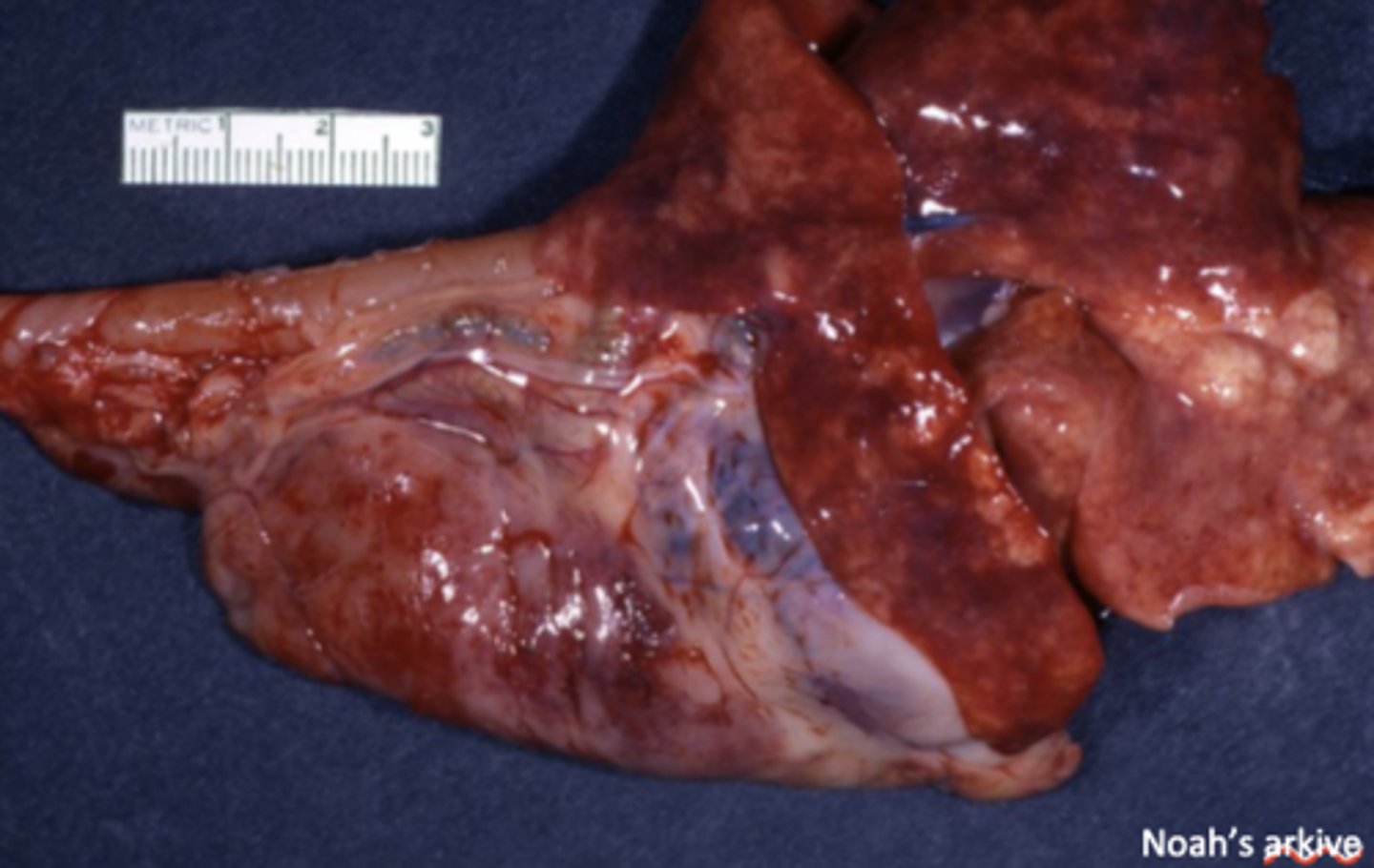
What has caused the gross appearance of this feline liver?
Feline Leukemia Virus (FeLV)
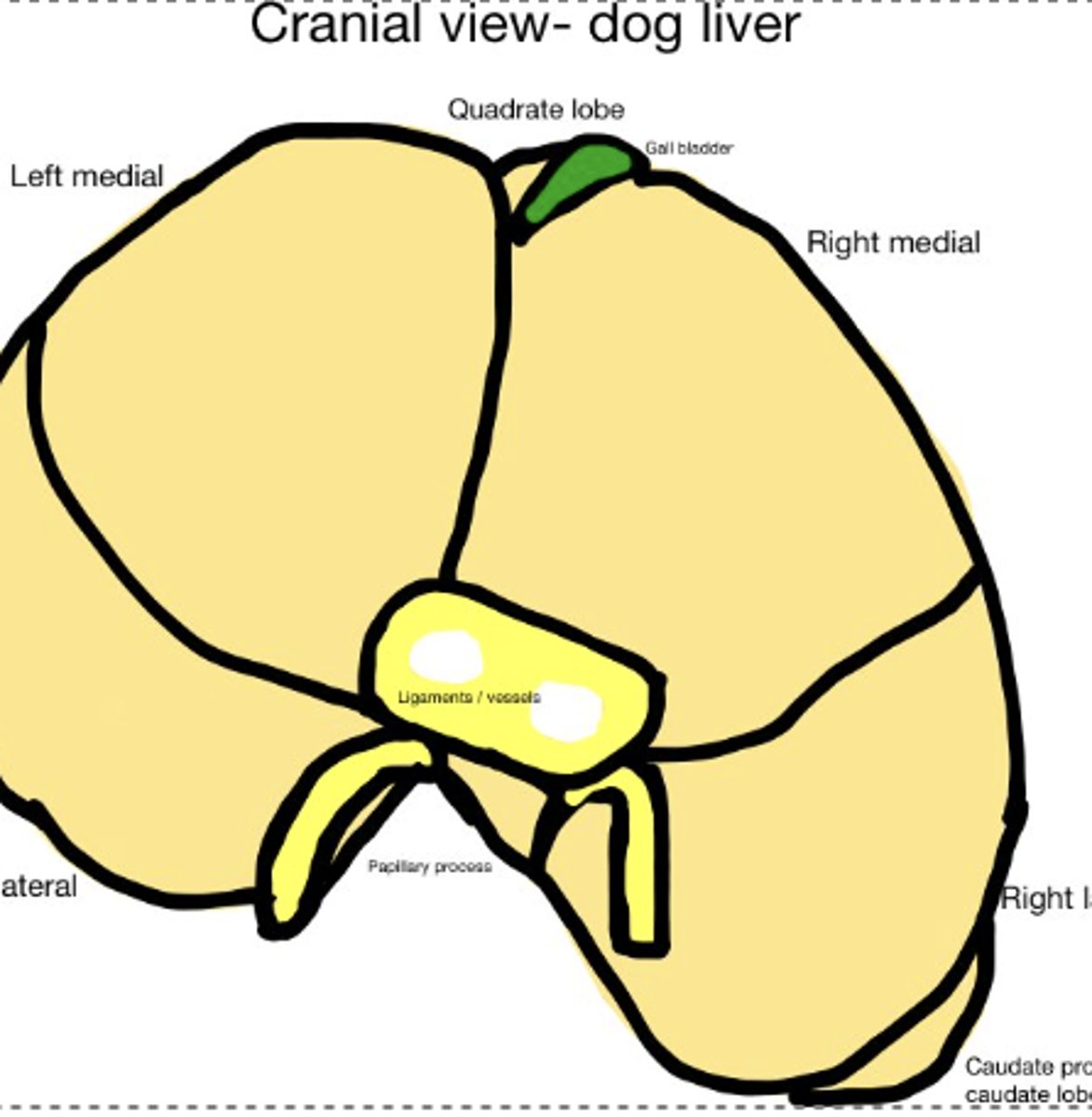
What kind of distribution is this?
Diffuse
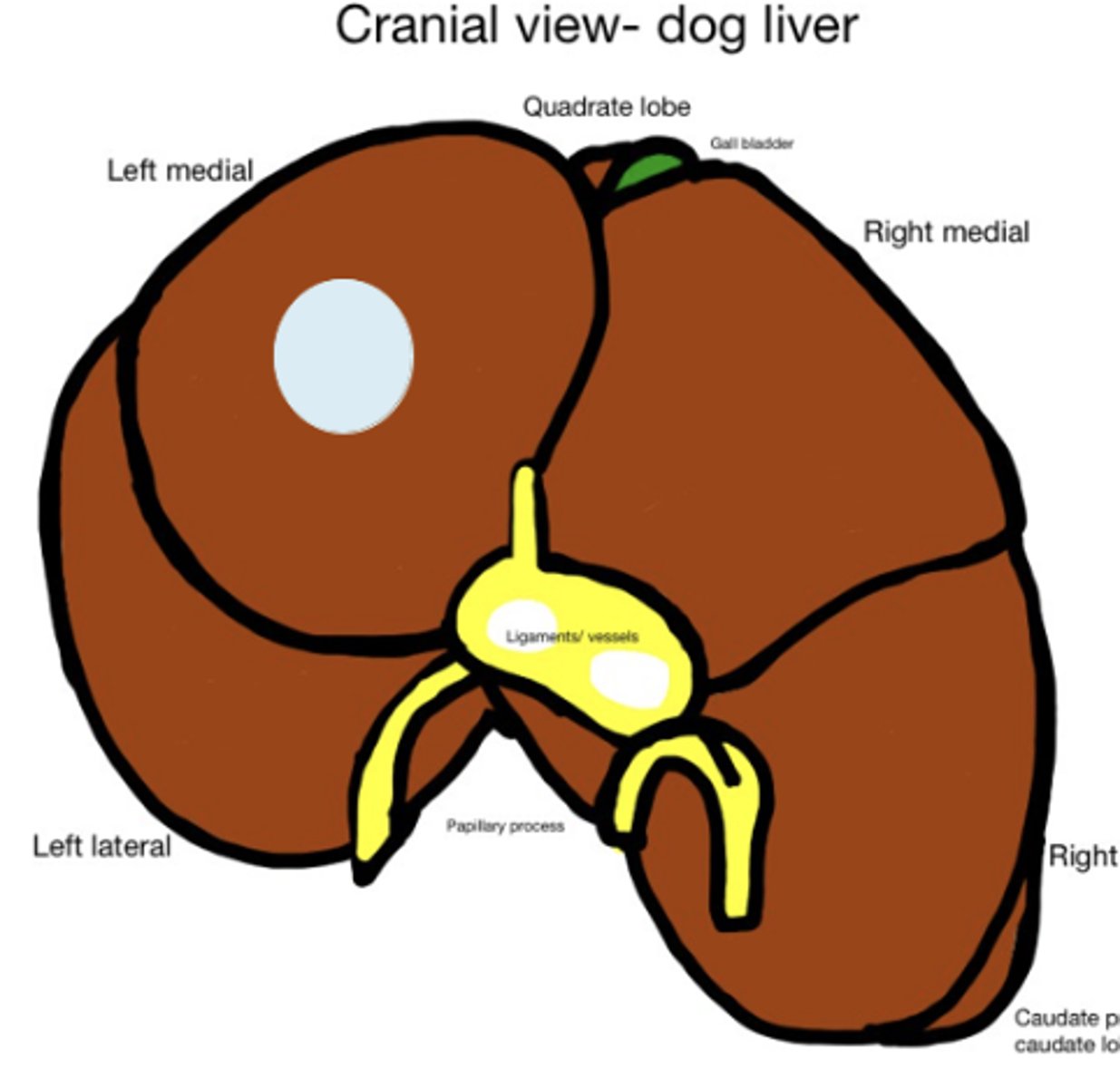
What kind of distribution is this?
Focal/focus
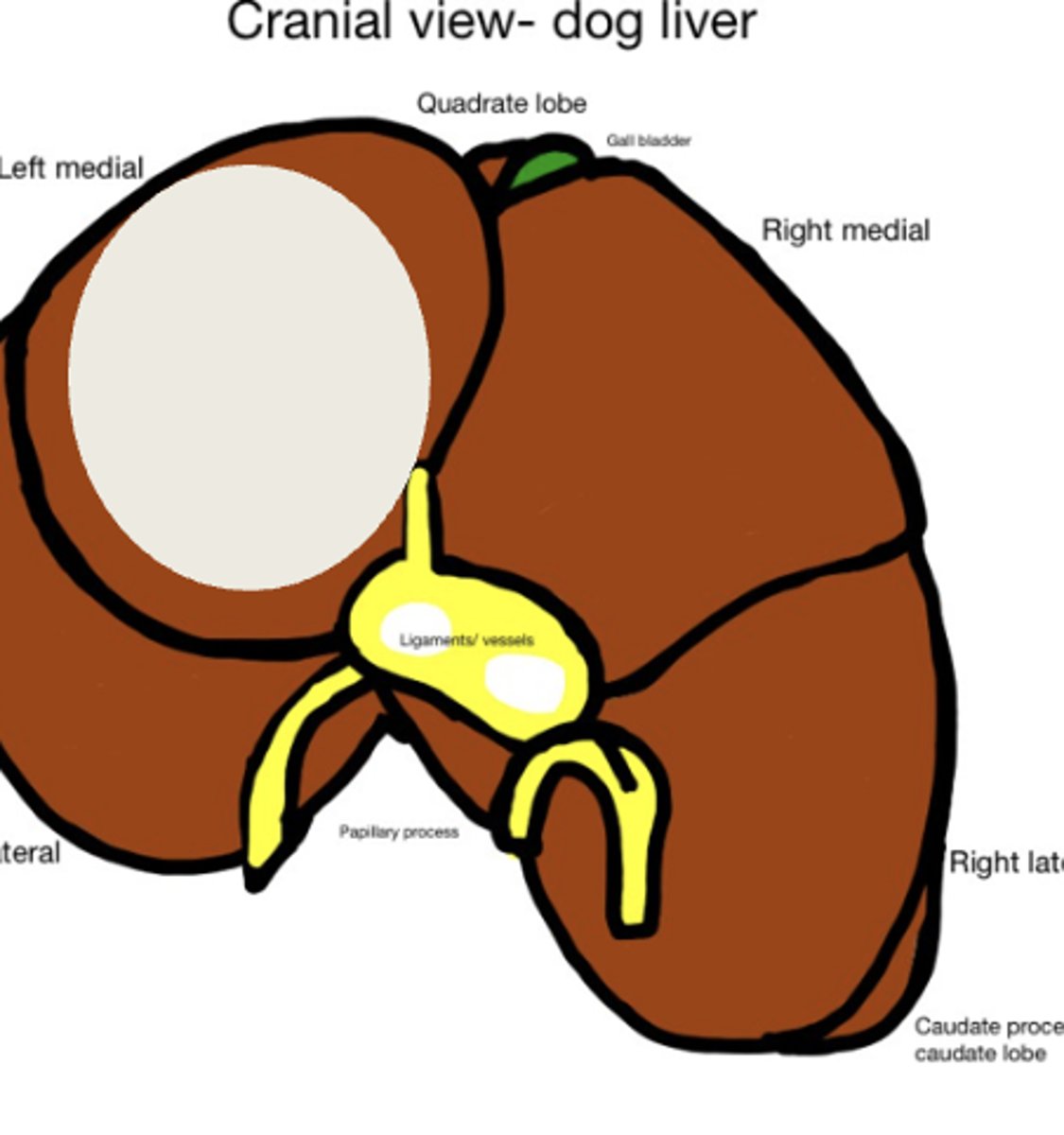
What kind of distribution is this?
Locally extensive
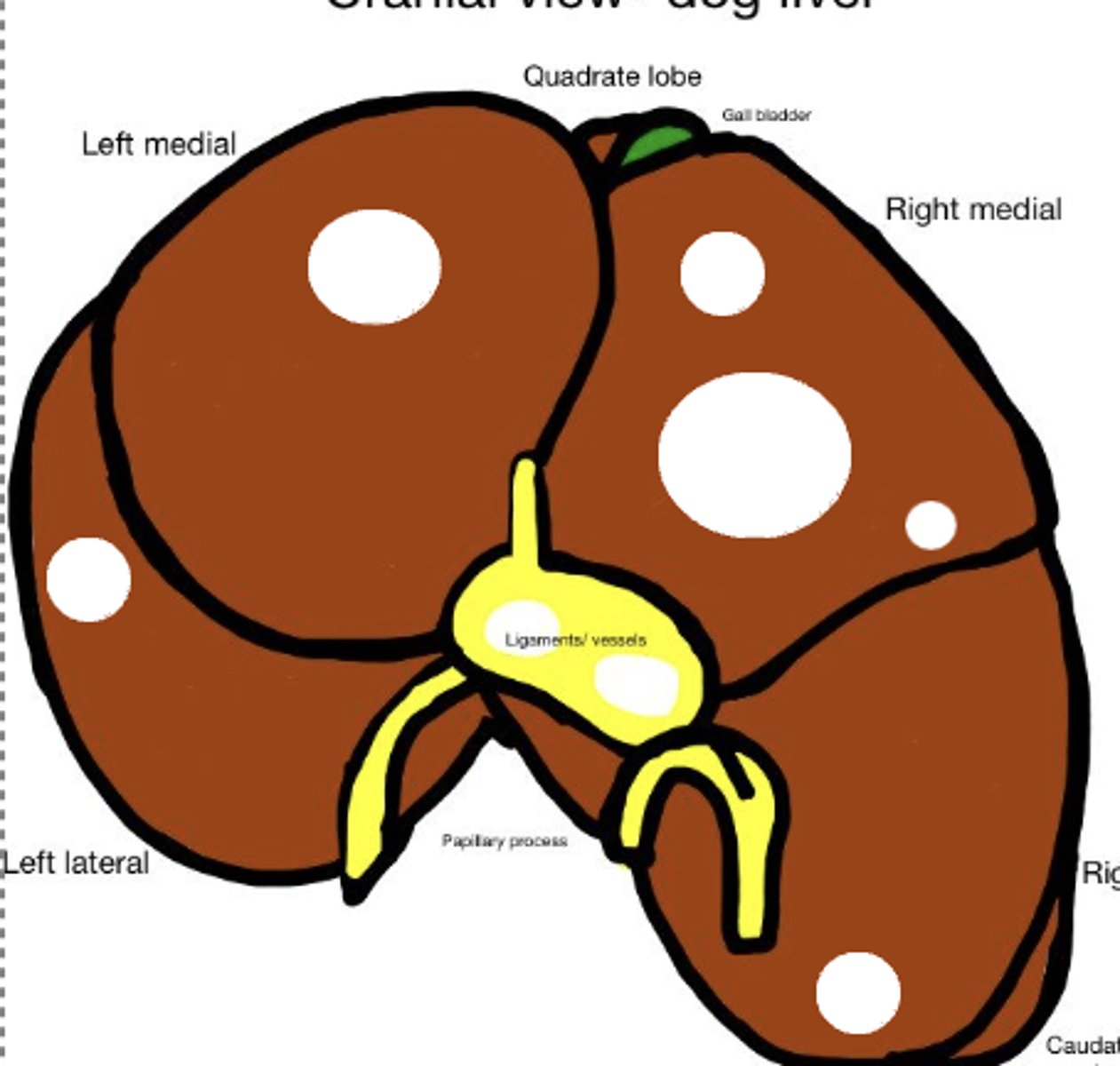
What kind of distribution is this?
Multifocal
-sepsis
-neoplasia
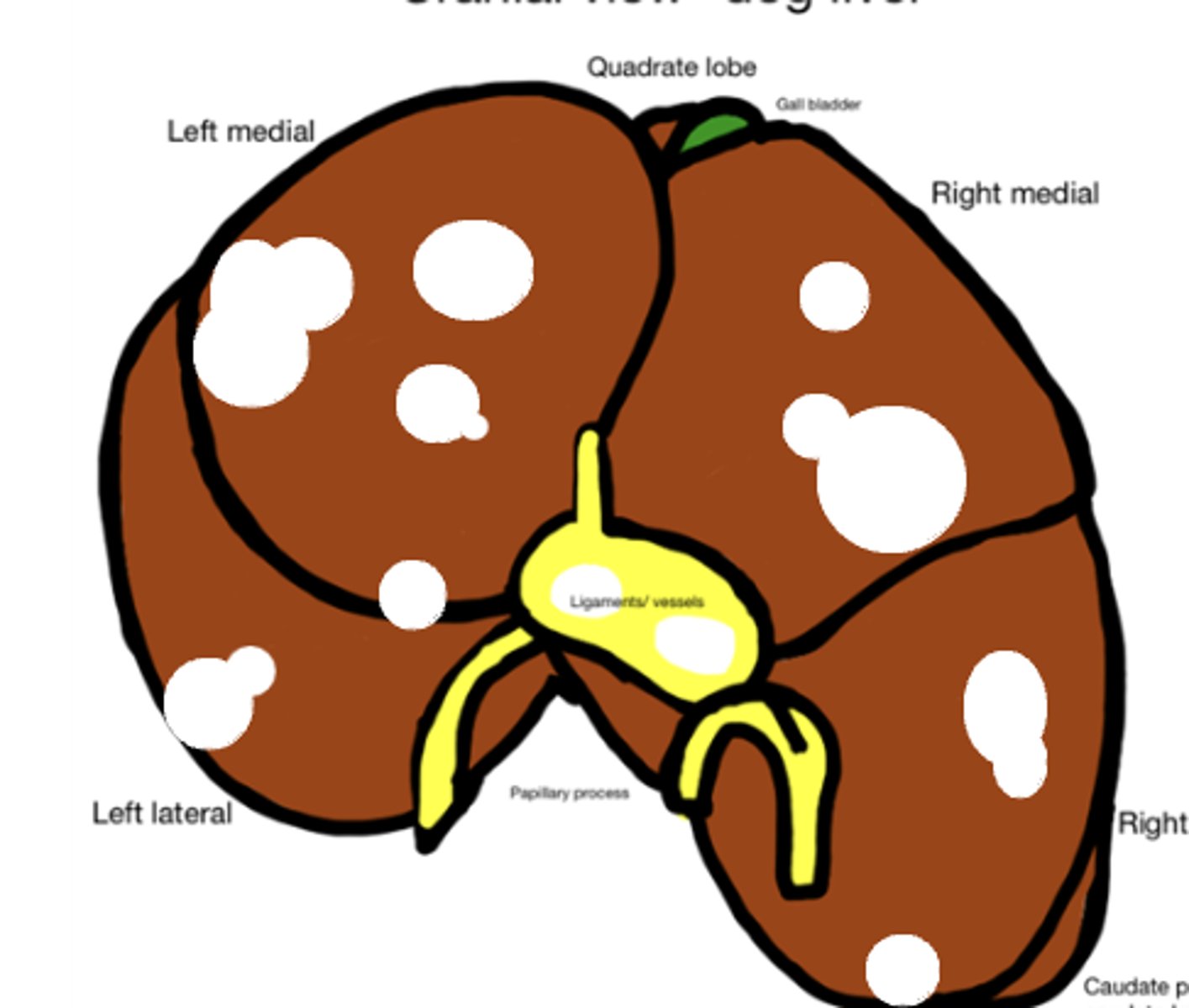
What kind of distribution is this?
Multifocal to coalescing
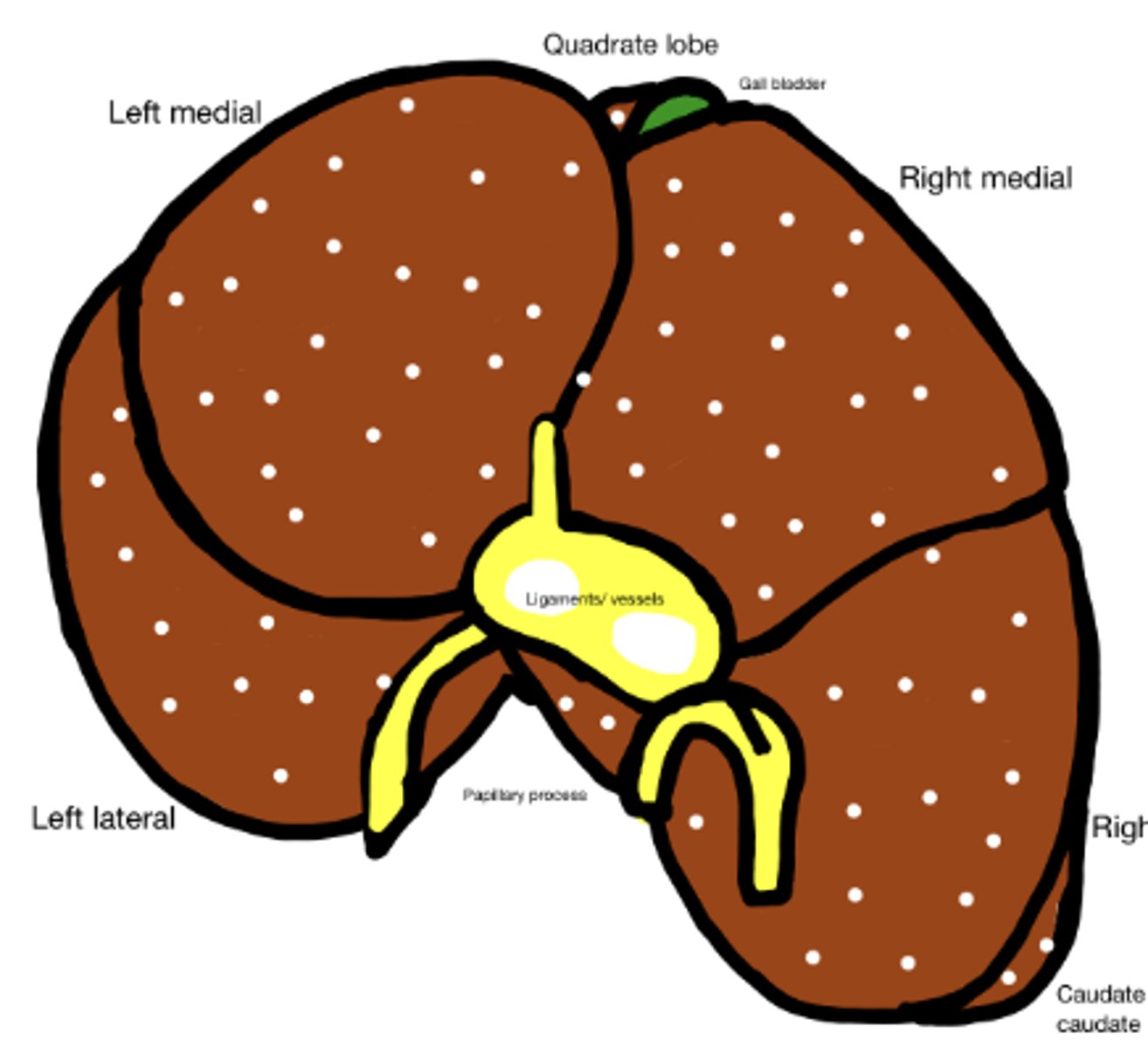
What kind of distribution is this?
Miliary
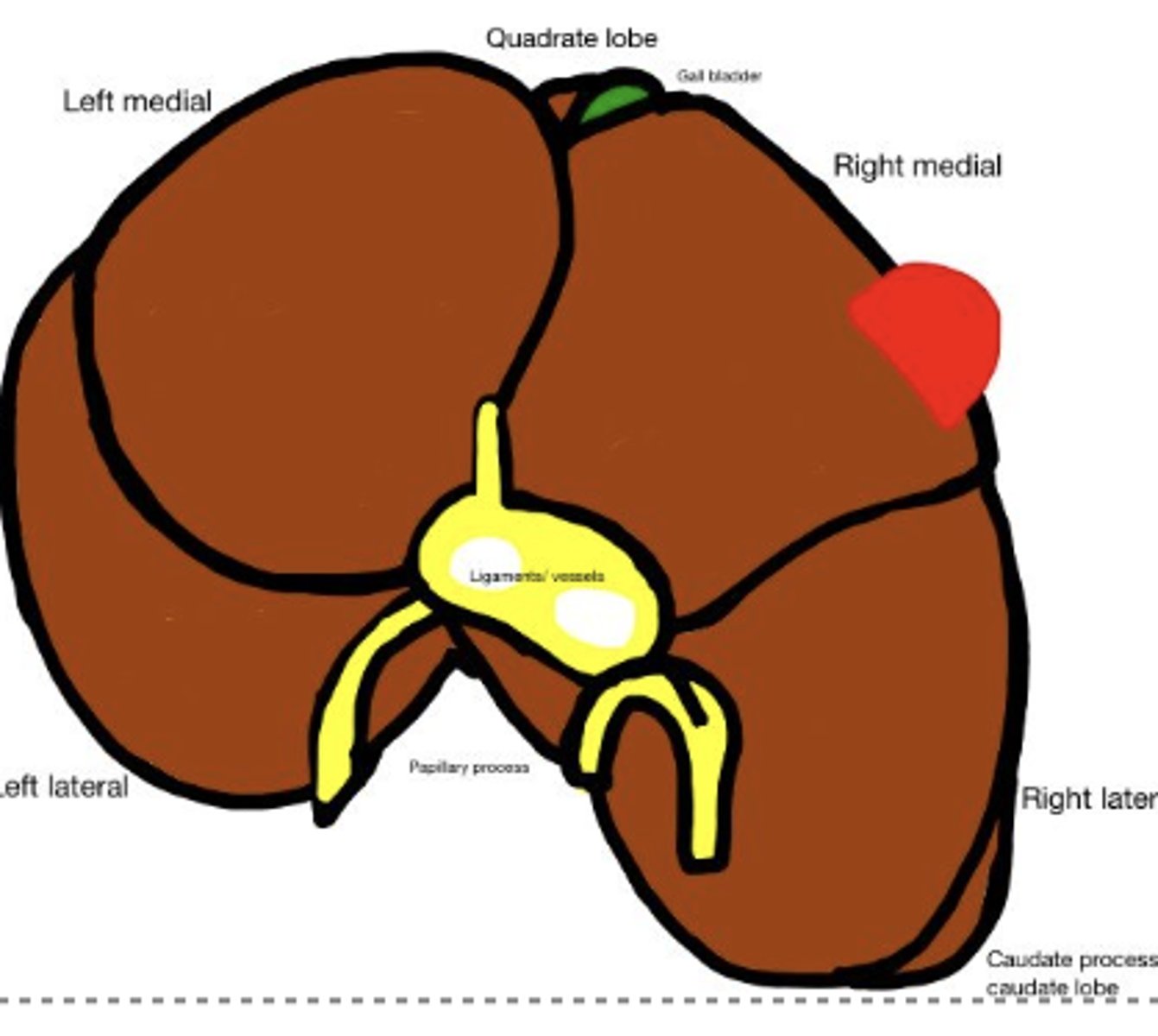
what kind of contour is this?
Raised
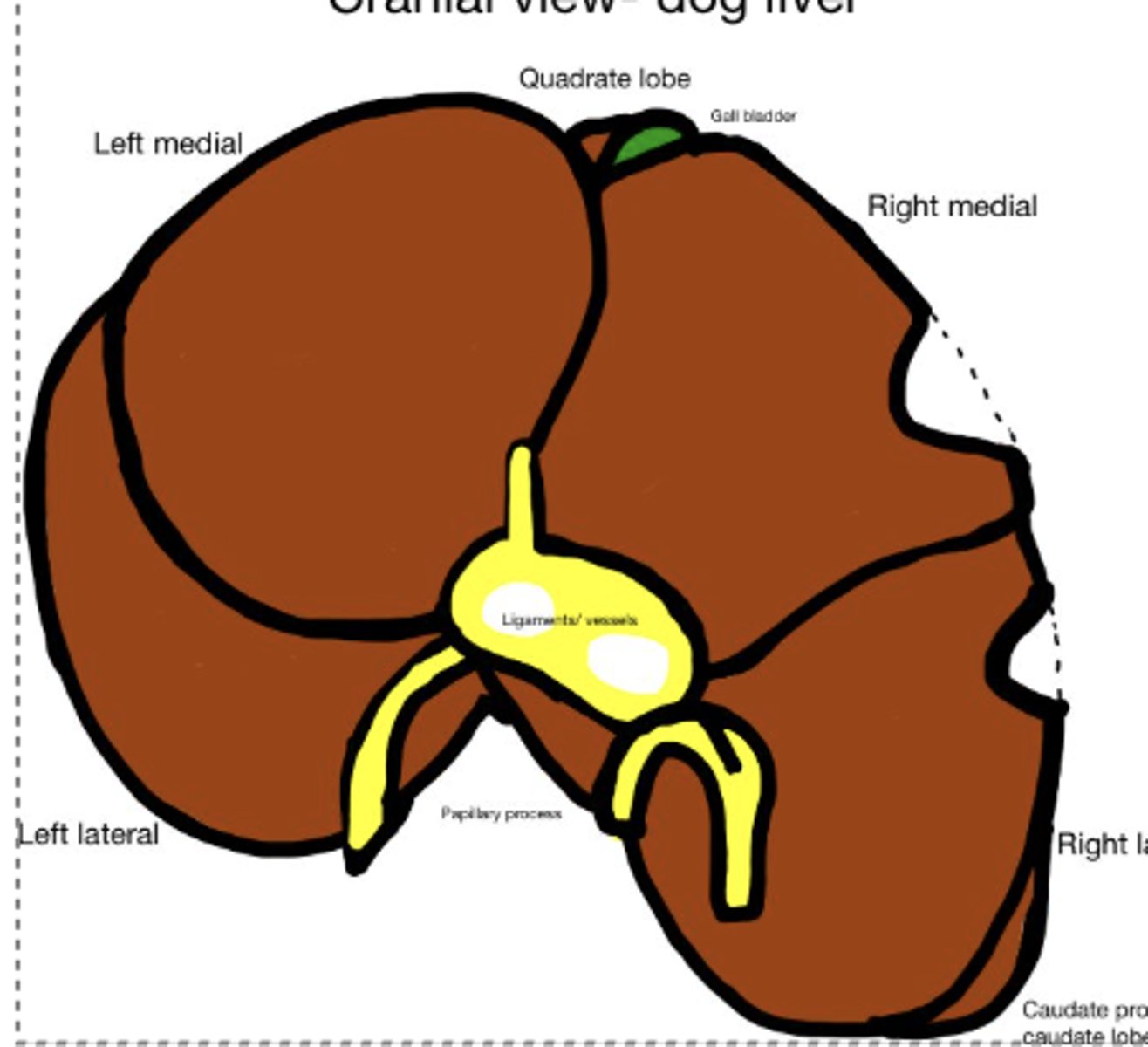
What kind of contour is this?
depressed
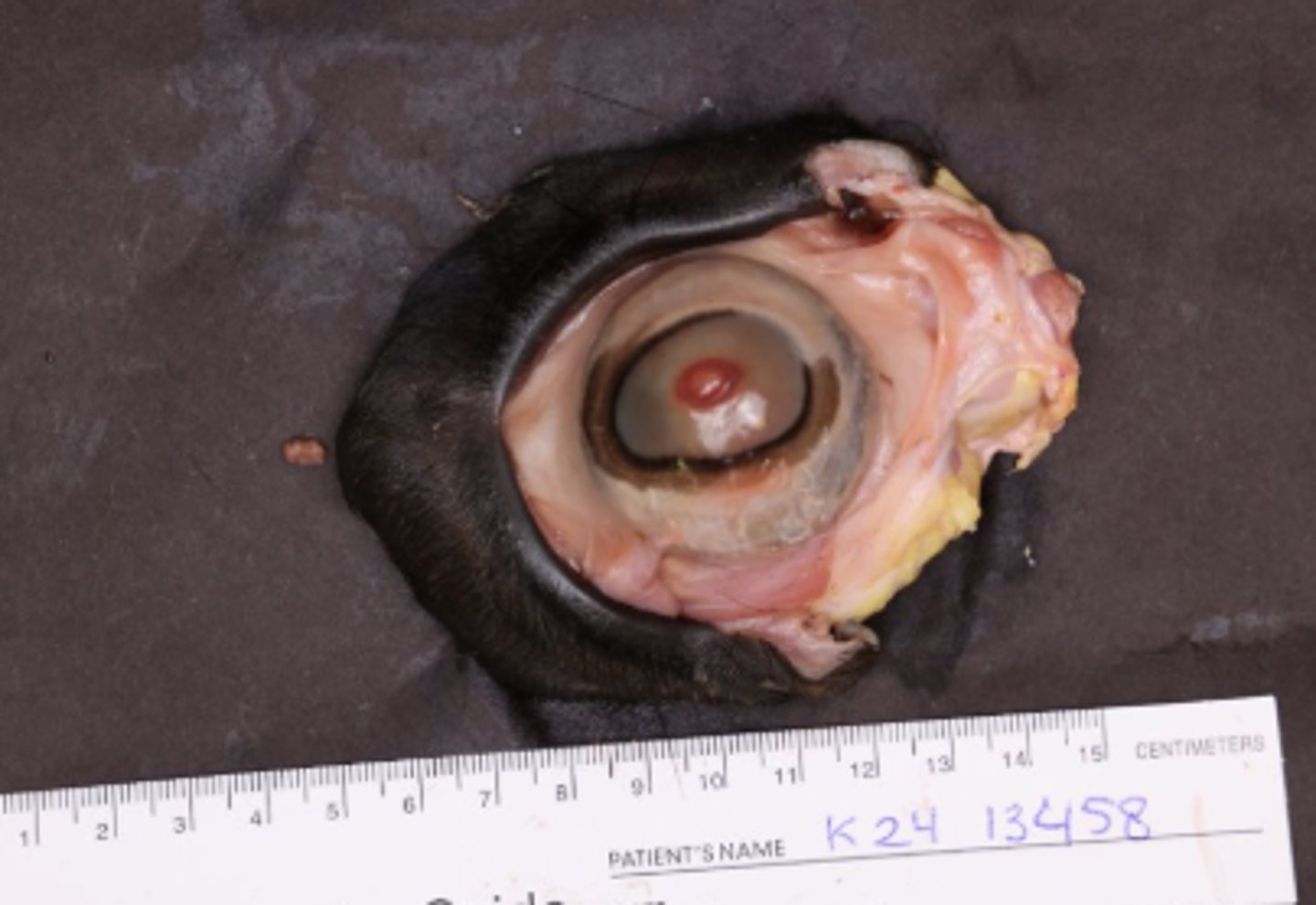
Describe the distribution of this lesion.
focal or locally extensive
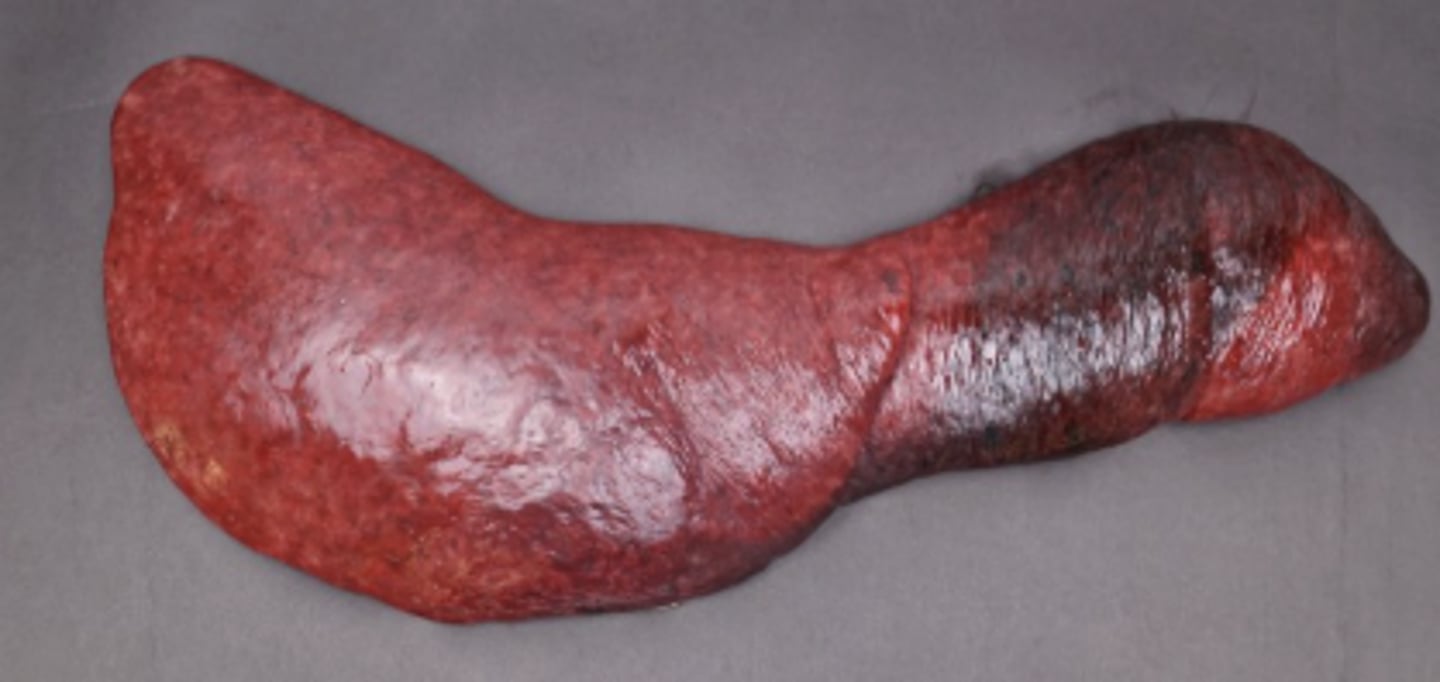
Describe this lesion + diagnosis
spleen, diffuse enlargement, rounded edges, mottled red color
splenomegaly - splenic lymphoma
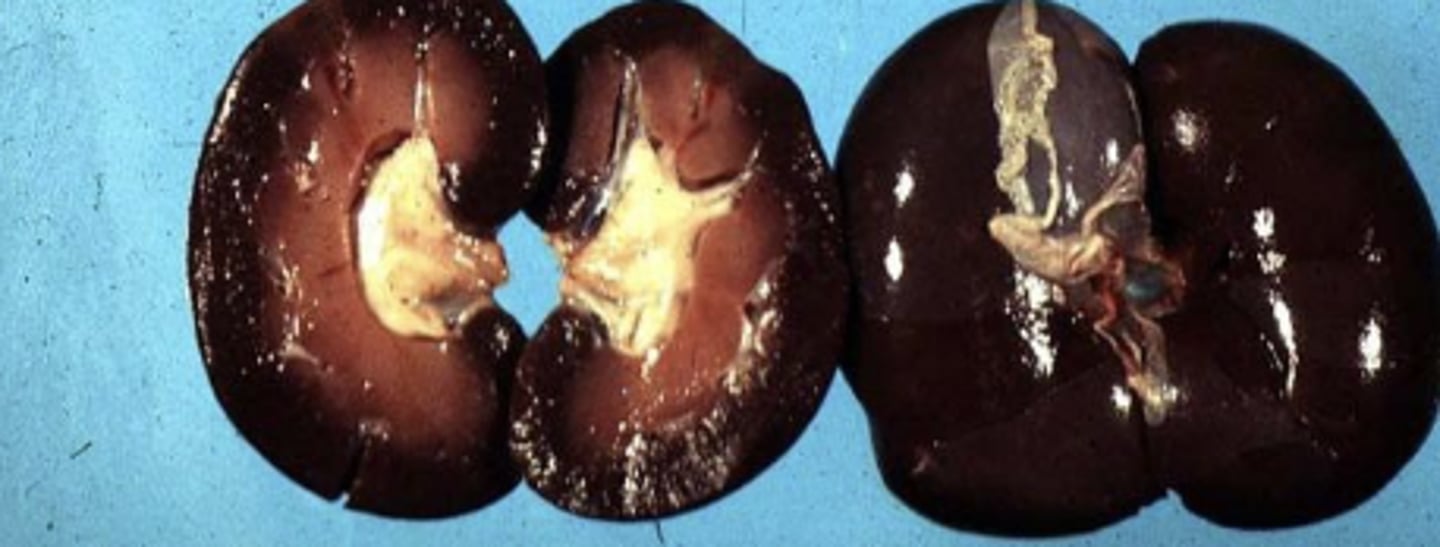
What has caused this kidney to be gunmetal black, dark red color?
Copper toxicity
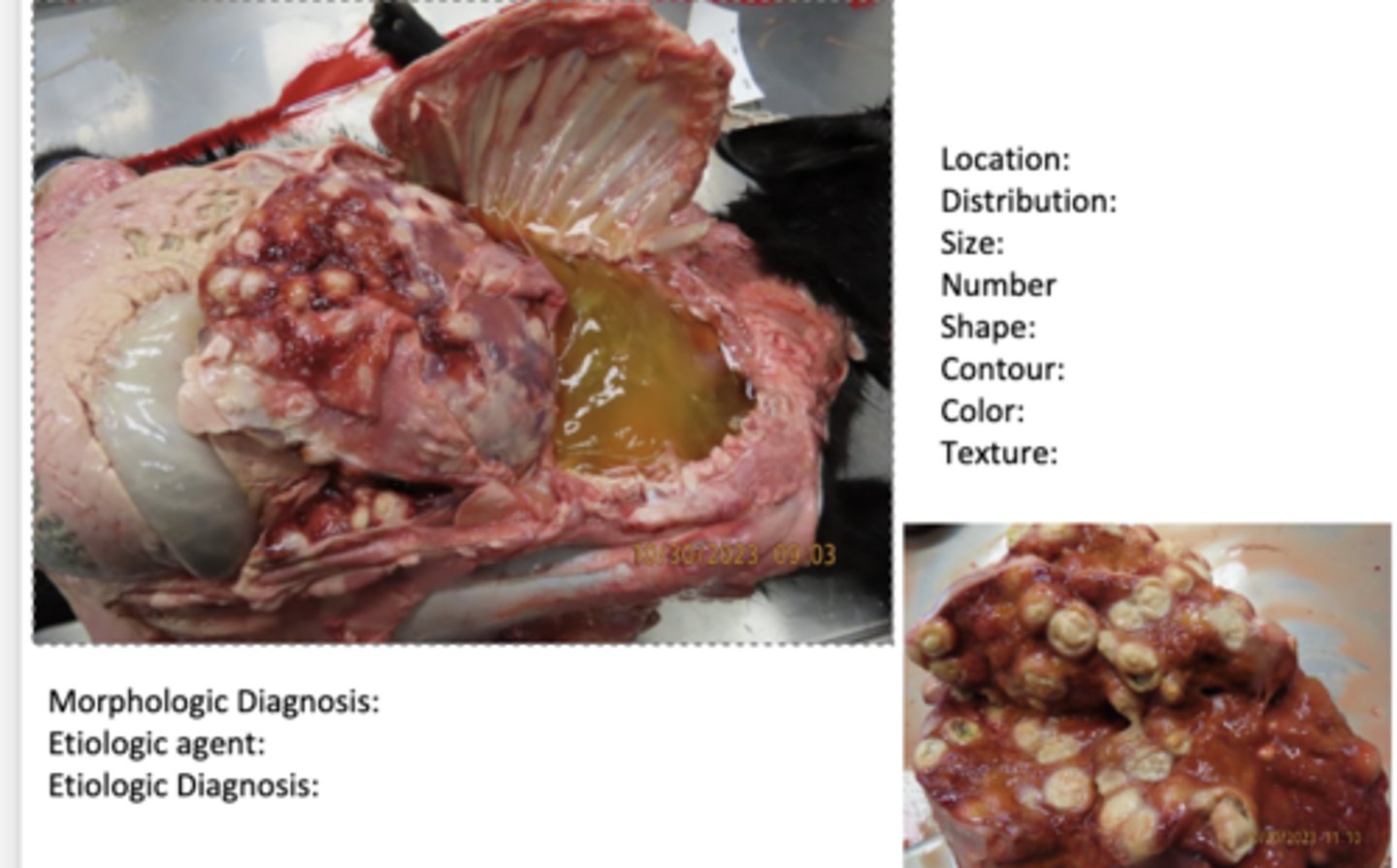
Describe these lesions in this goat.
Acute to subacute fibrinous pleural effusion
severe chronic active multifocal hepatic pylogranuloma from rhodococcus equi
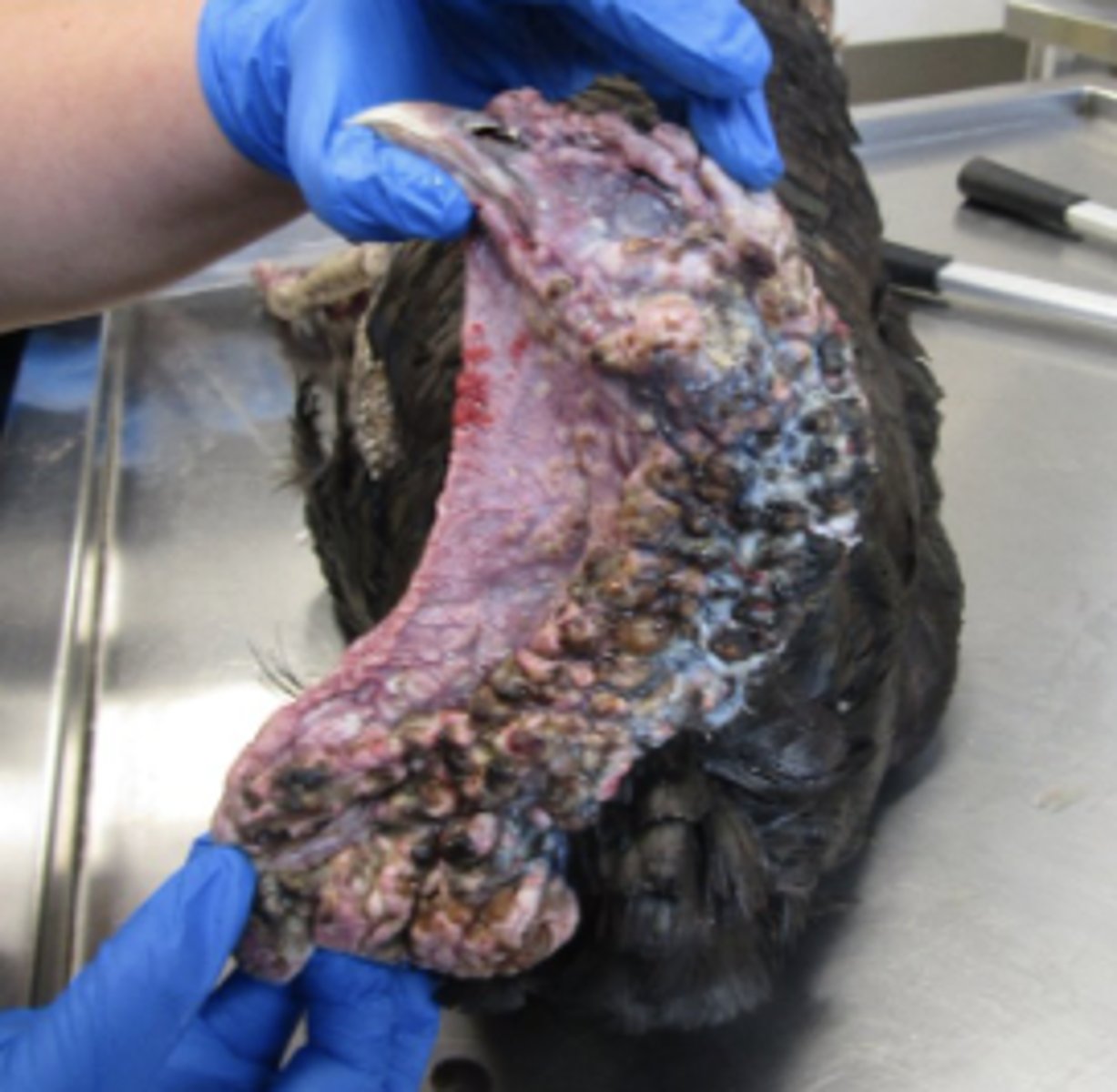
Describe the lesion in this turkey.
severe chronic active necrotizing + proliferative dermatitis
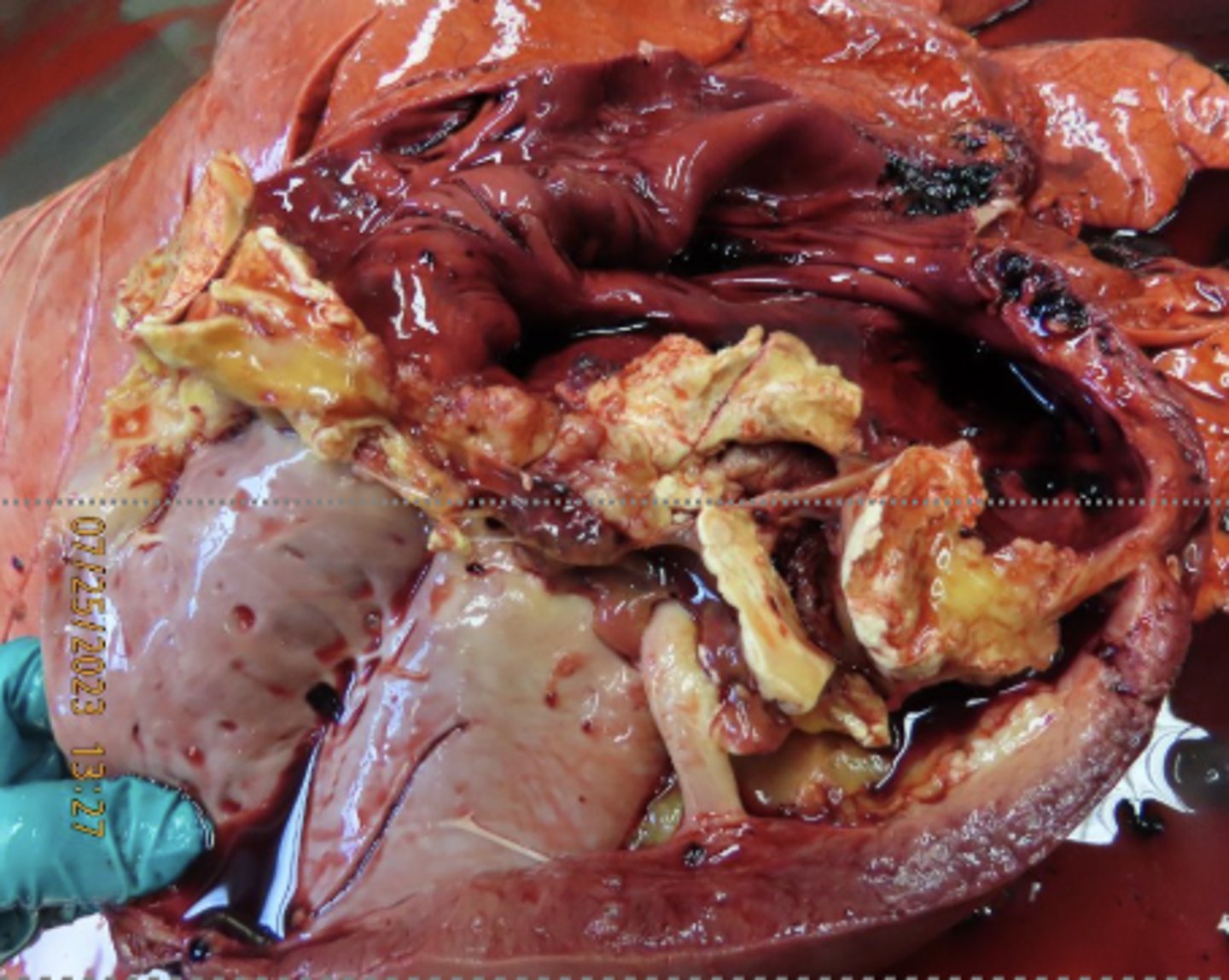
Describe this lesion in a horse.
Heart: severe chronic active necrosuppurative endocarditis
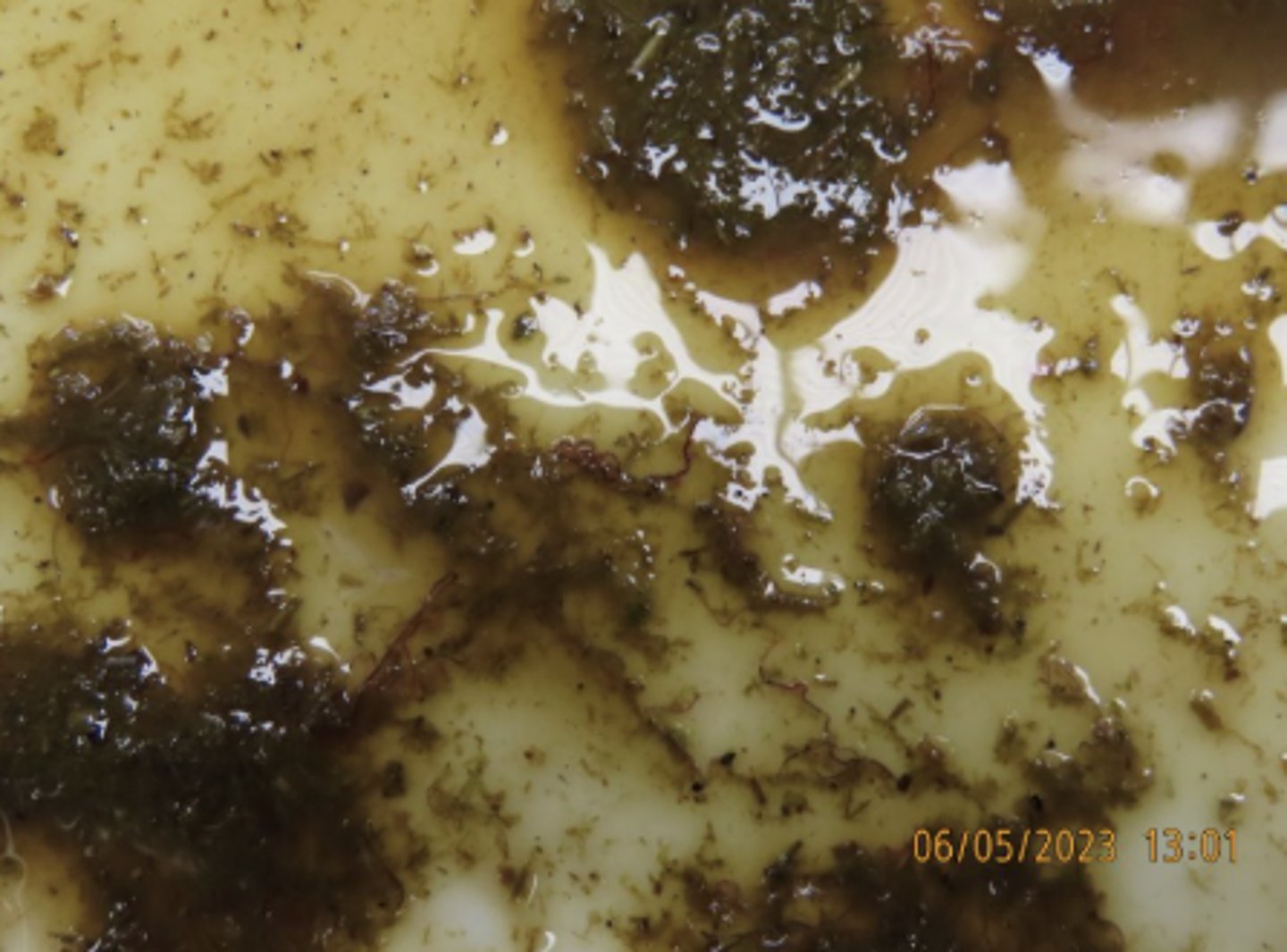
Describe these abomasal contents from a goat.
severe verminous abomasitis from Haemonchus contortus
Lesions: disseminated, dozens, round/cylindrical nematodes, off white with distinct red barber pole
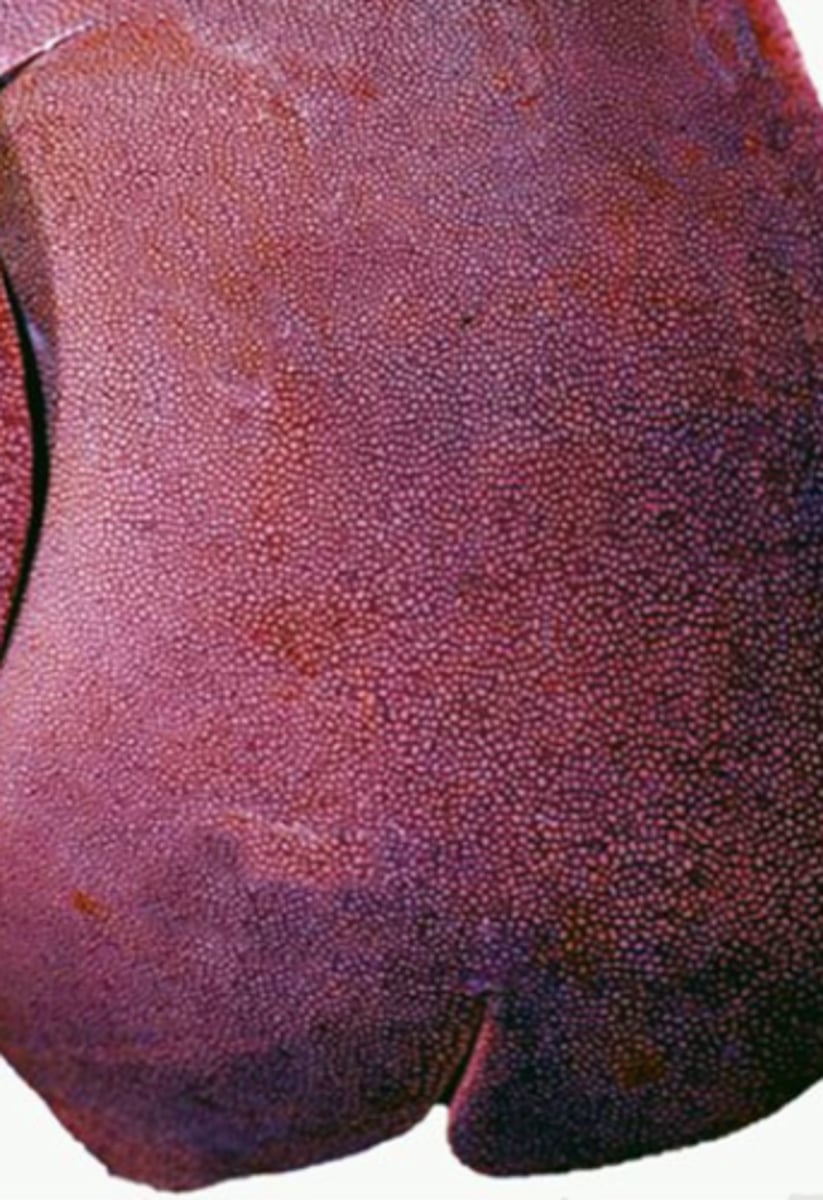
What kind of degeneration is this?
Zonal Hepatocellular degeneration
-pale
-enlarged margins
increased friability
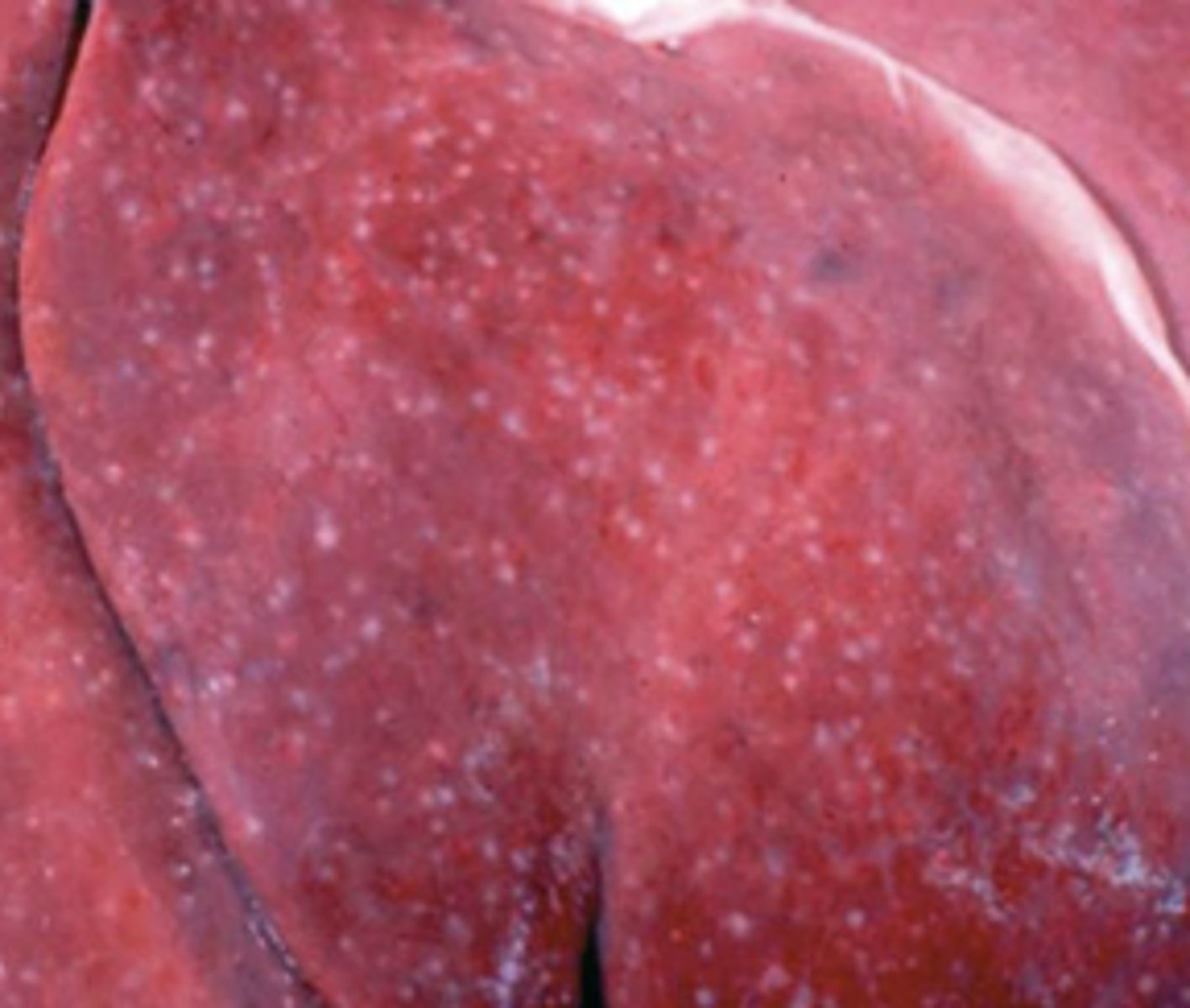
What kind of degeneration is this?
Random hepatocellular degeneration/necrosis
-typical pattern of infectious agents
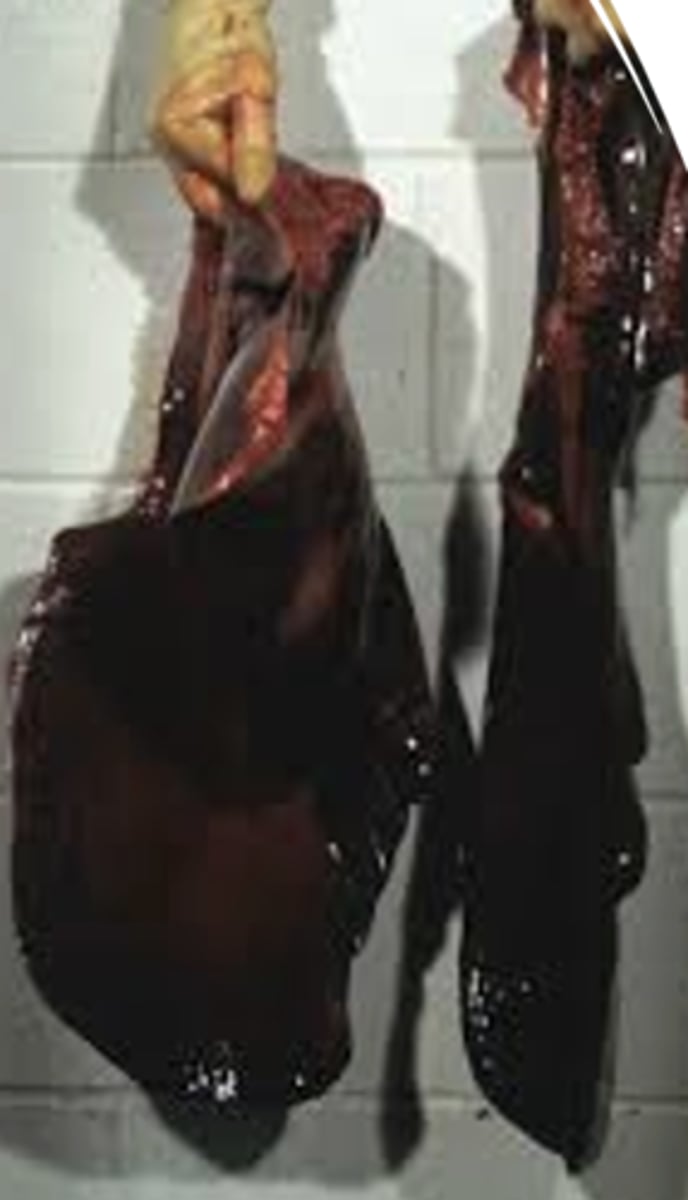
What kind of necrosis?
Panlobular necrosis
-ALL hepatocytes are necrotic
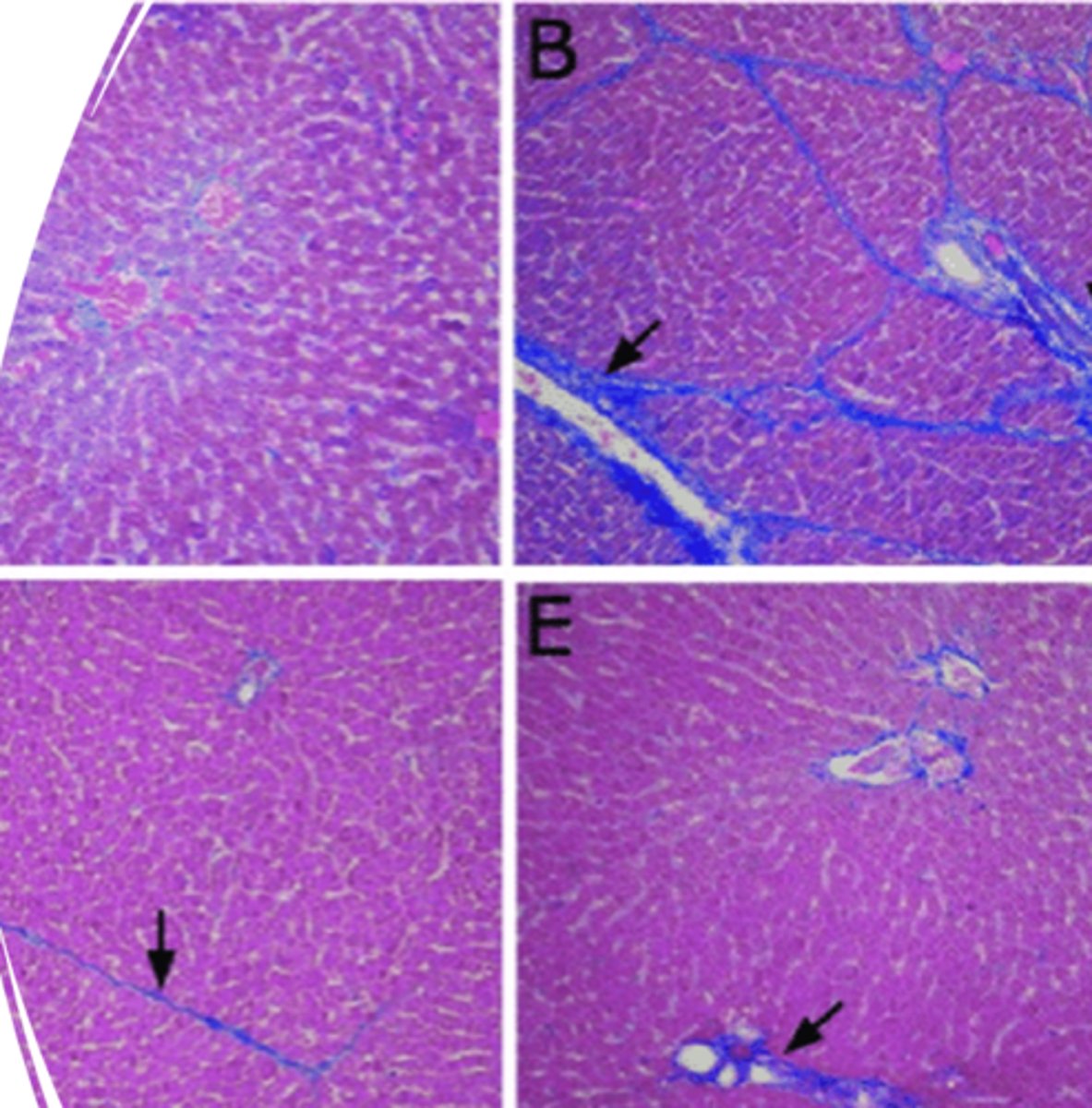
What is indicated in this image that is a result of chronic liver injury?
Fibrosis
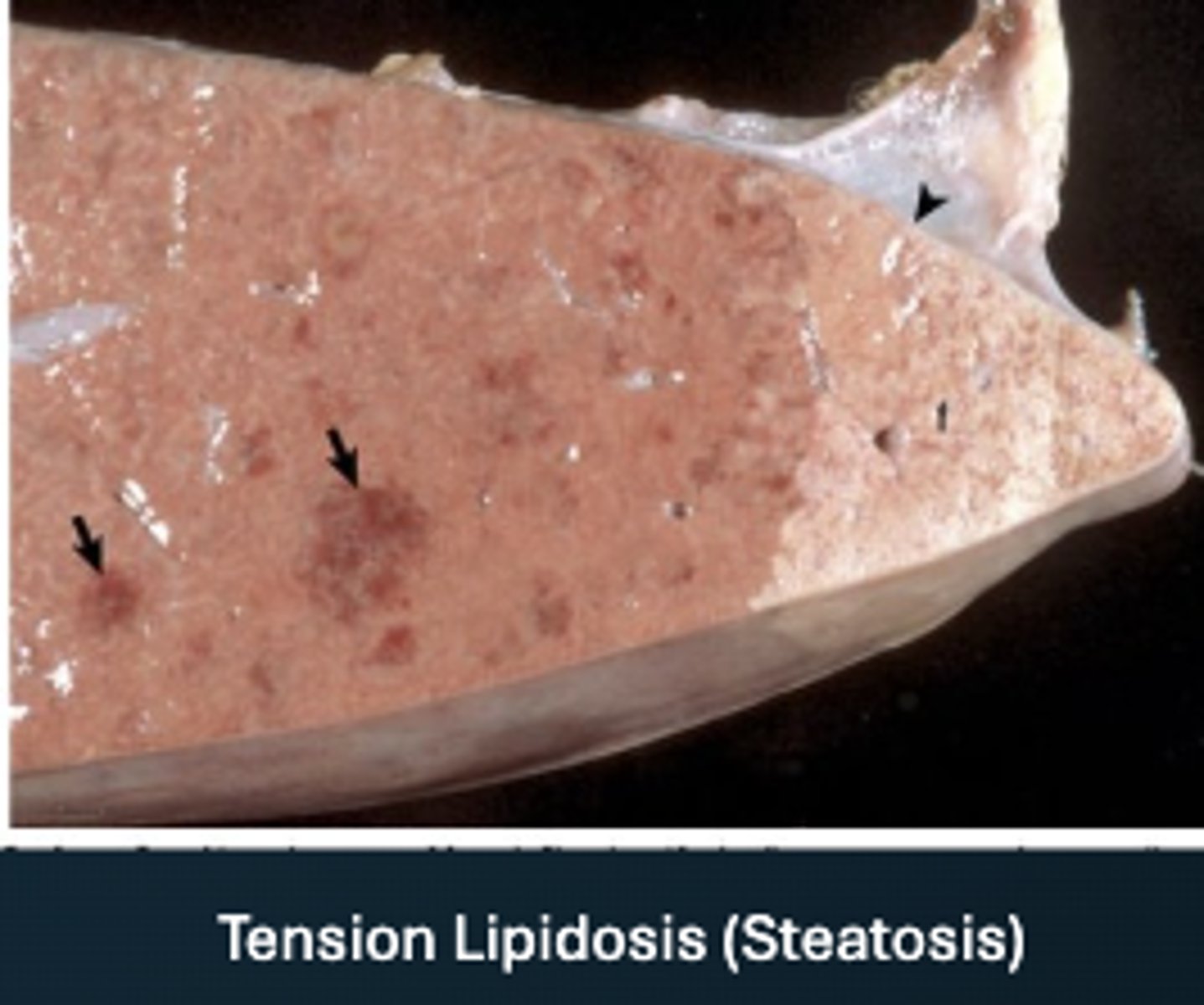
What has caused this gross appearance of this liver?
Tension lipidosis (steatosis)
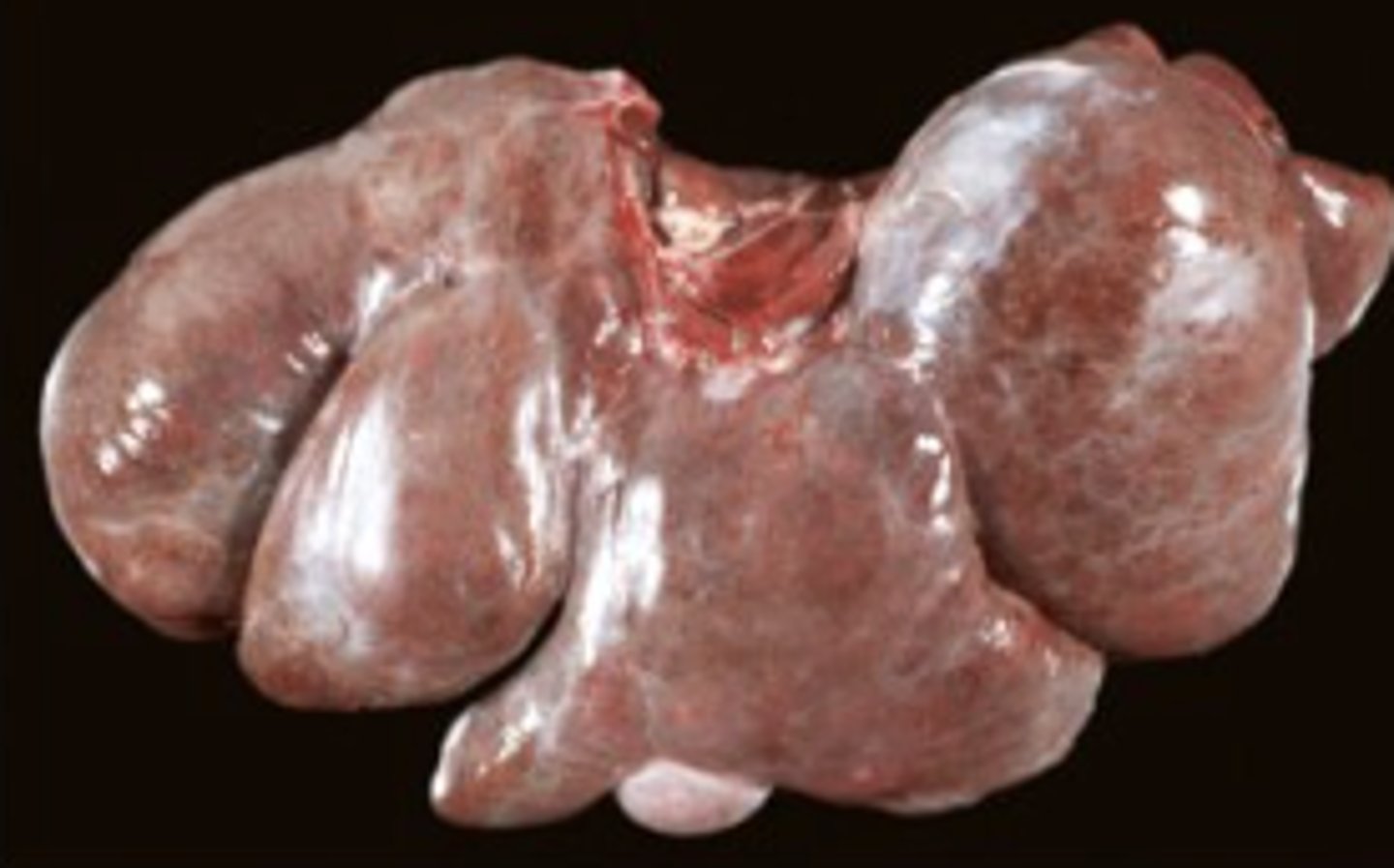
What has caused this gross appearance of this liver?
Chronic passive congestion
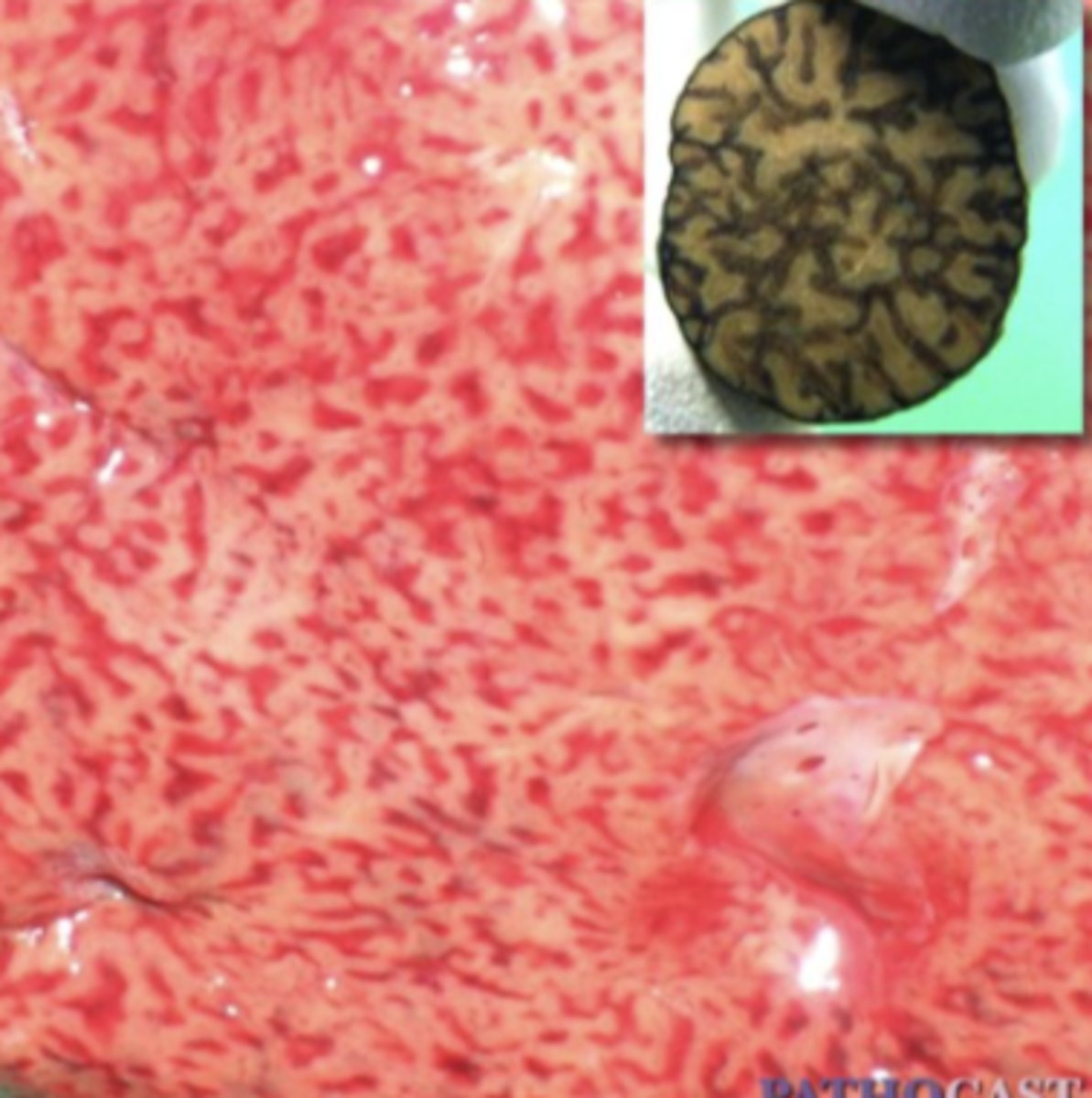
What has caused this gross appearance of this liver?
Chronic passive congestion
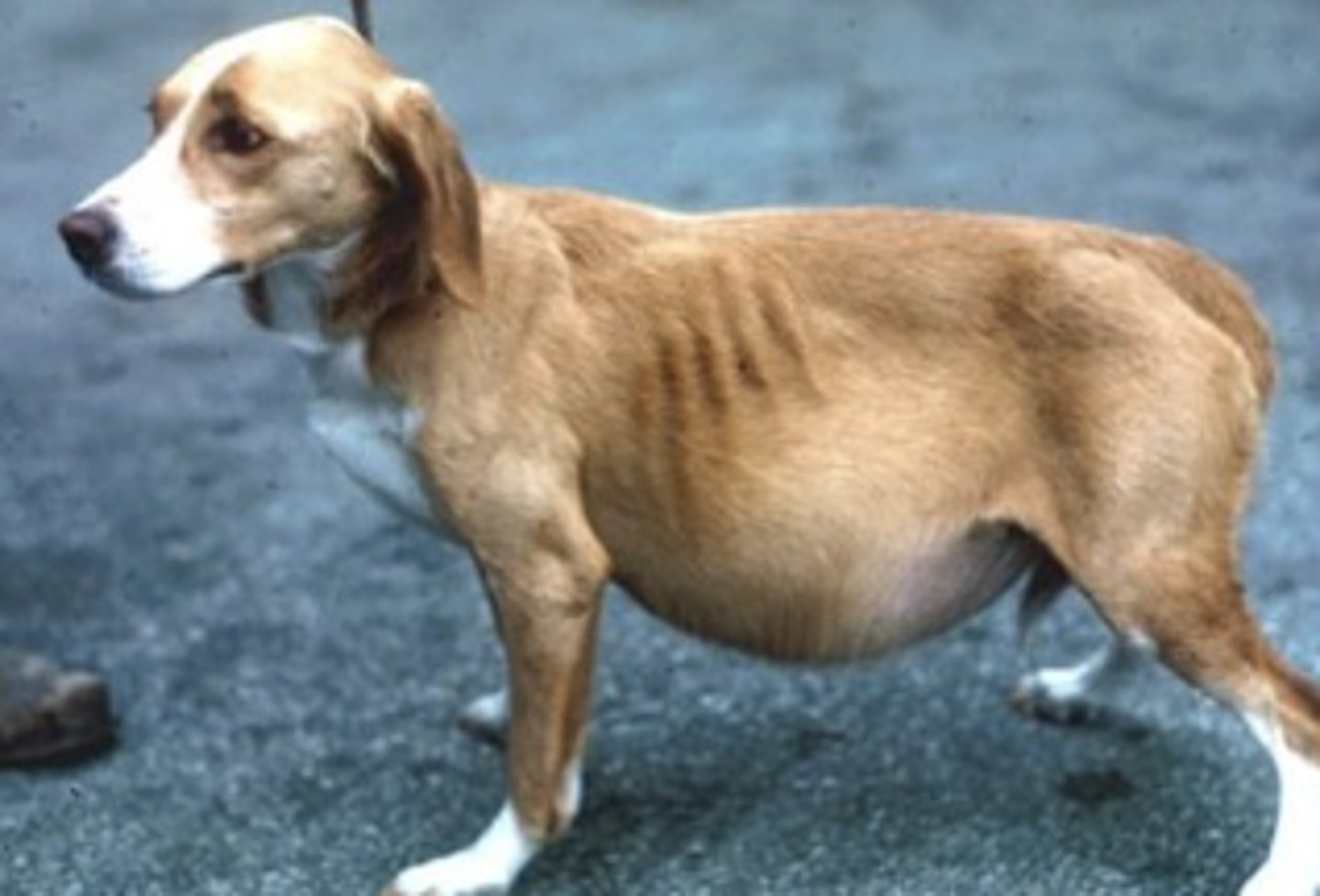
what causes ascites in adult large breed dogs such as shown in the image?
portal hypertension
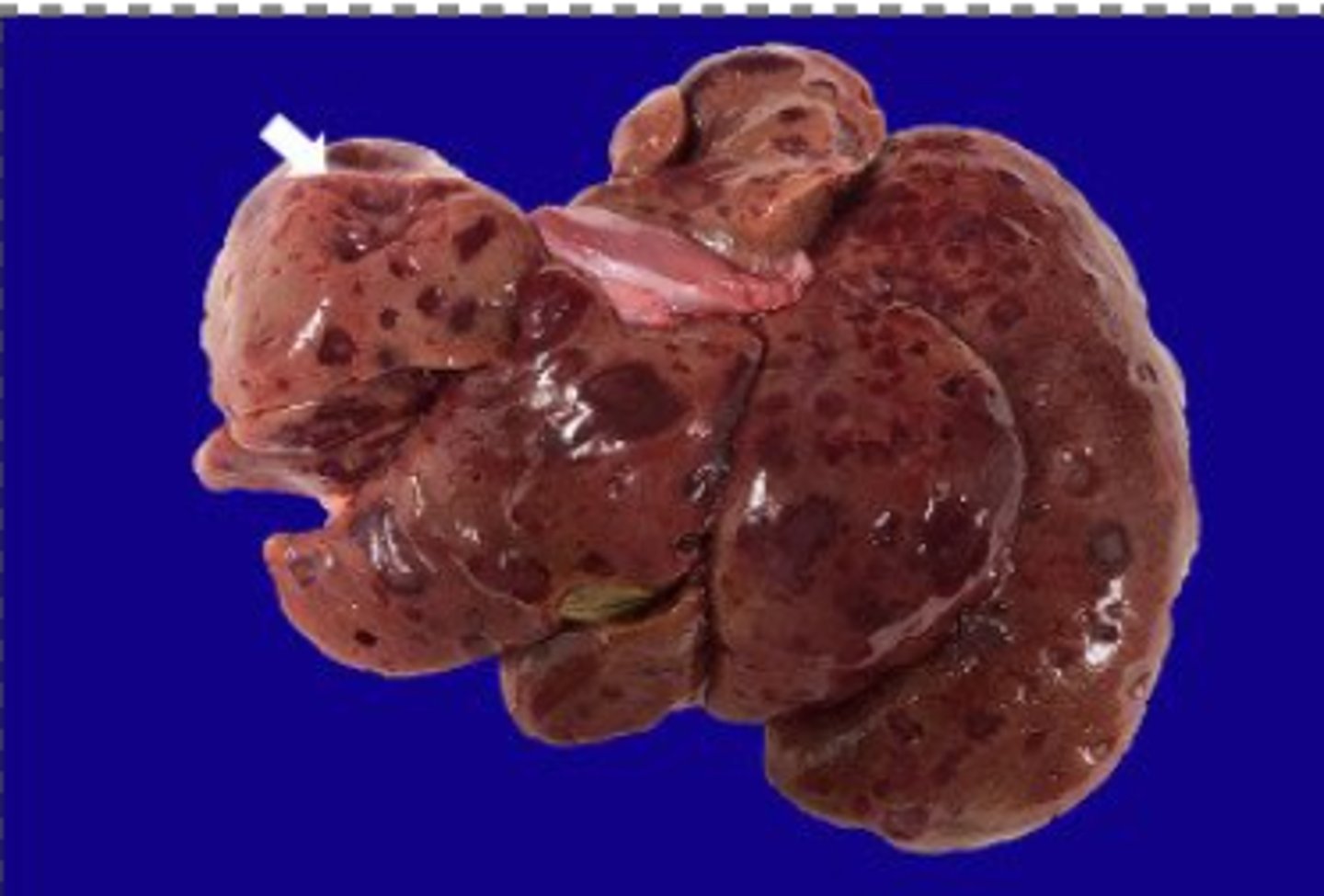
What has caused this gross appearance of the liver?
Telangiectasis (Peliosis Hepatitis)